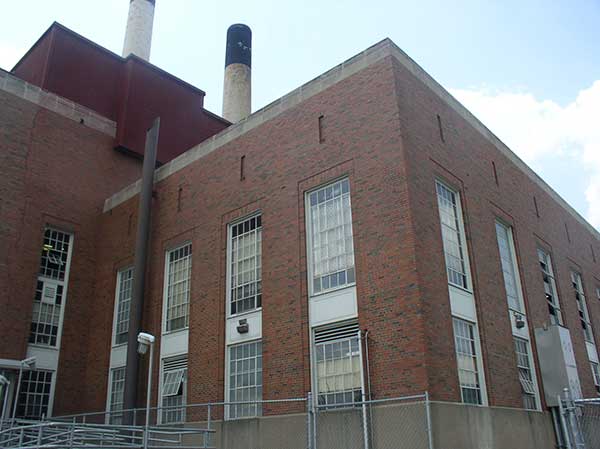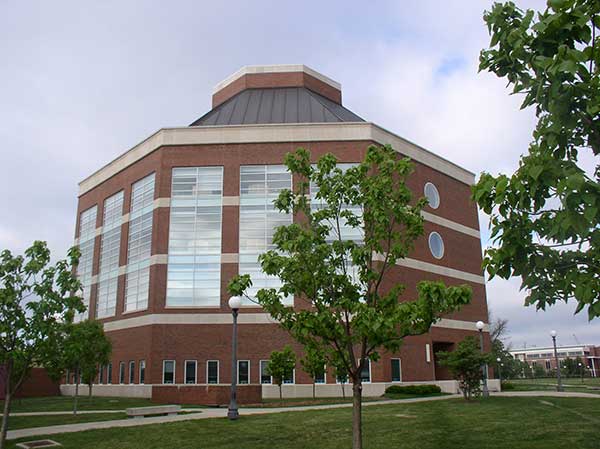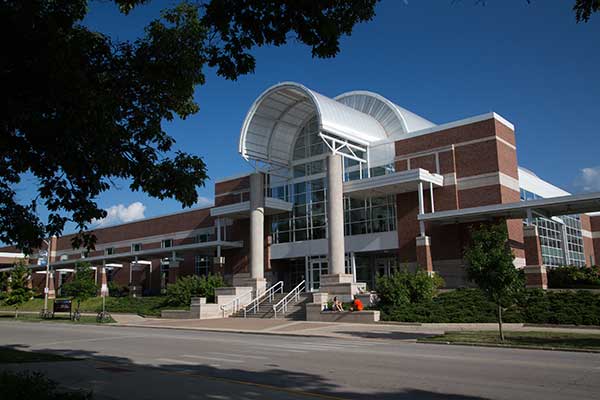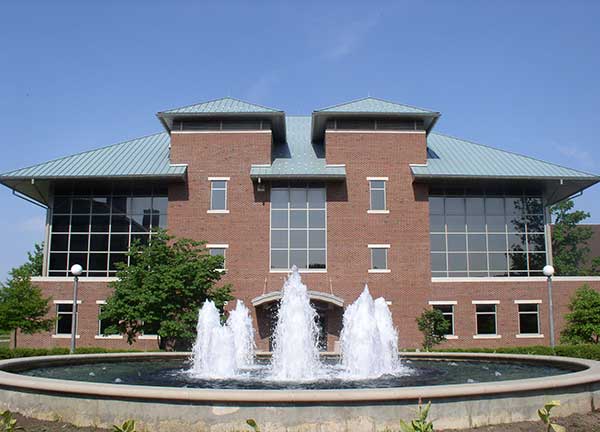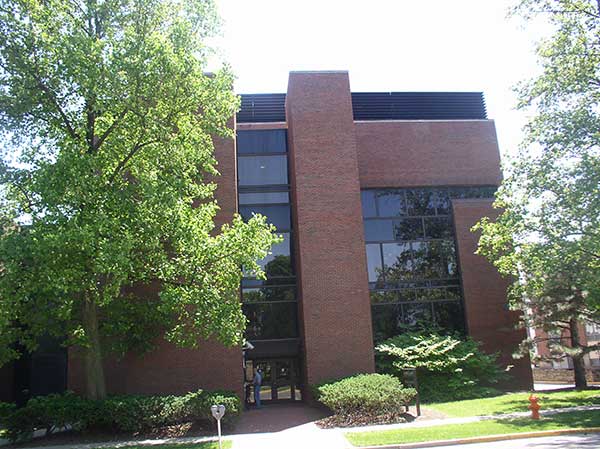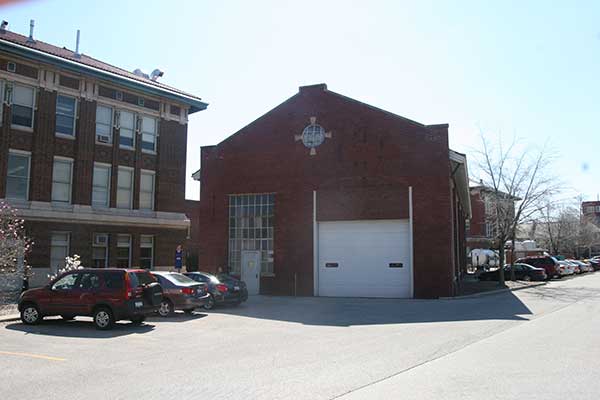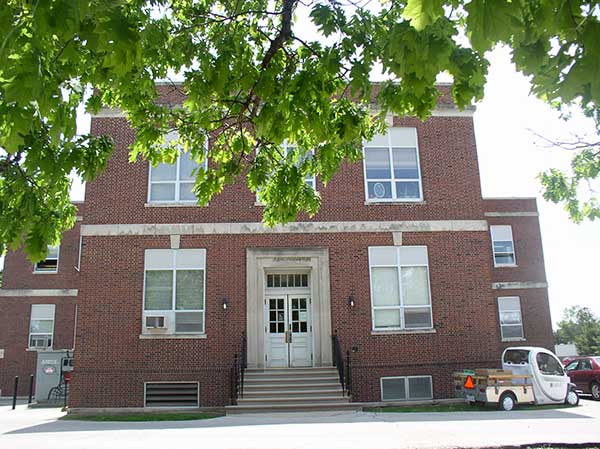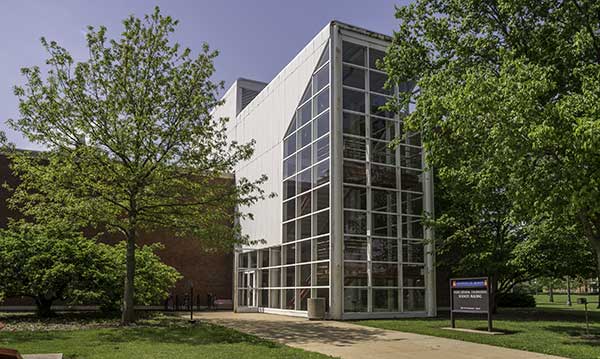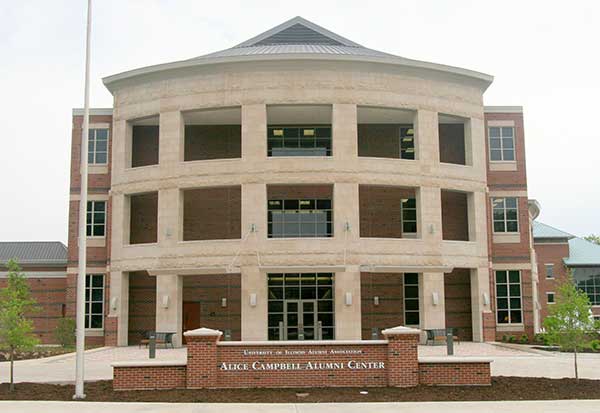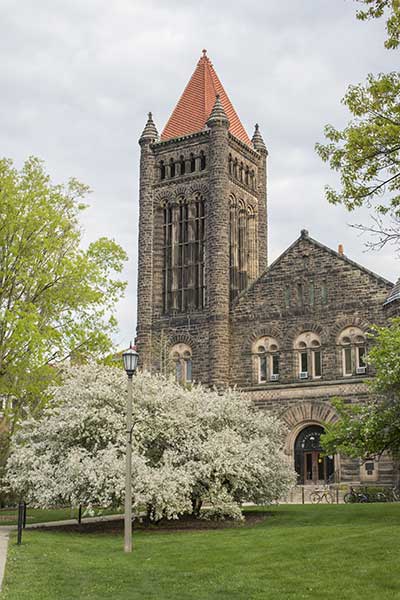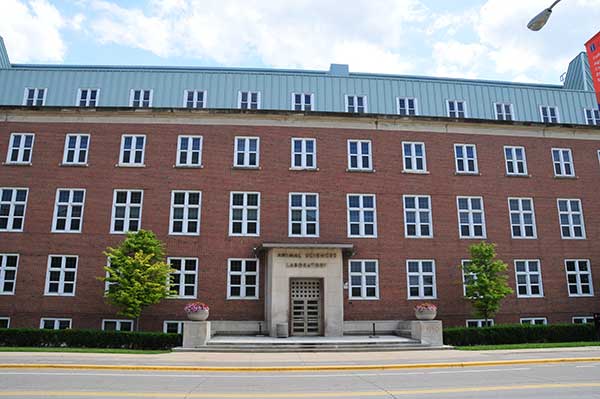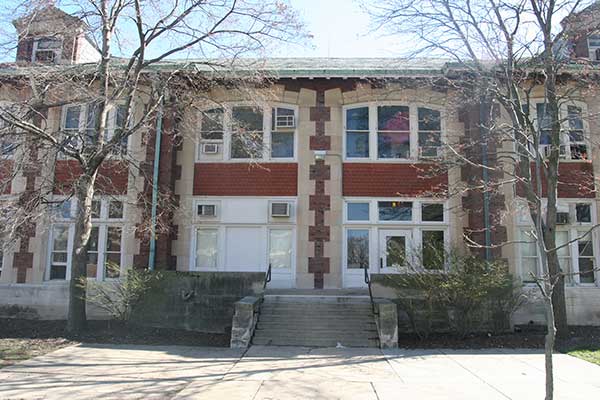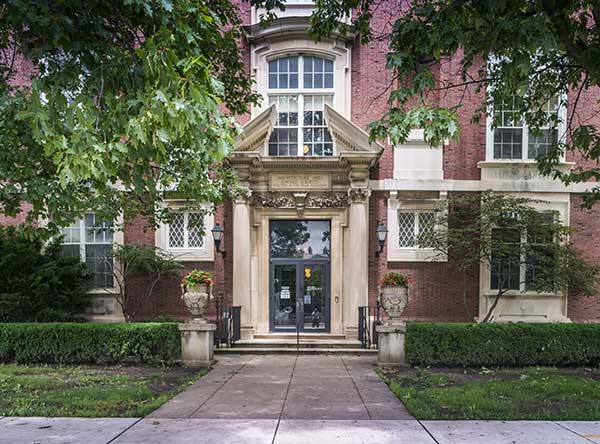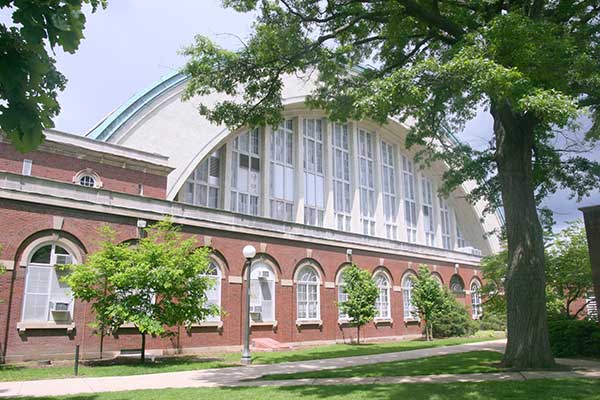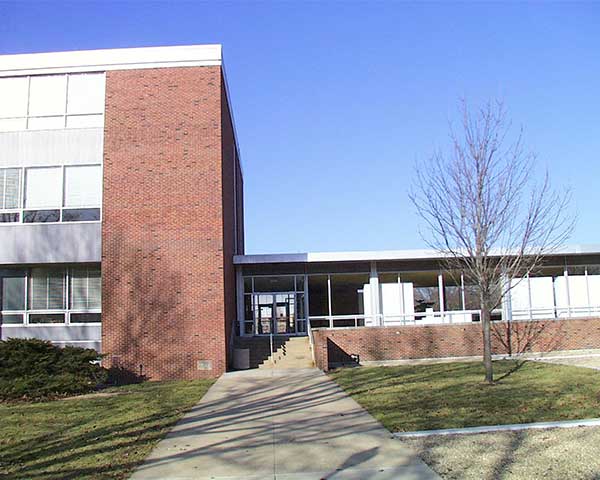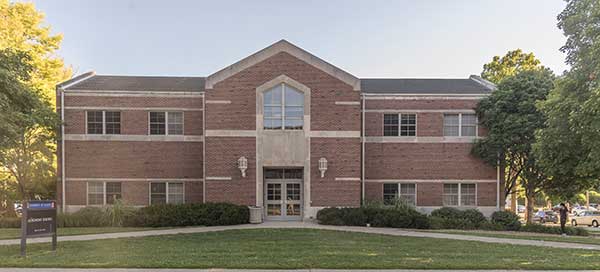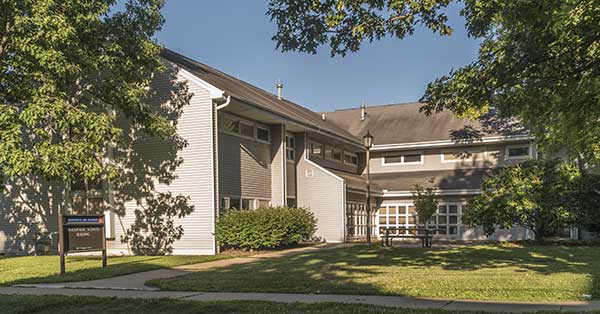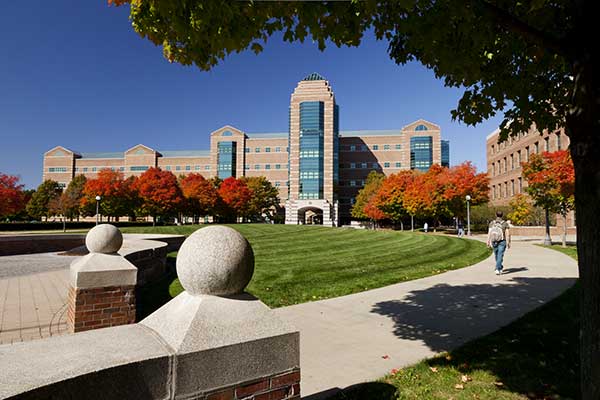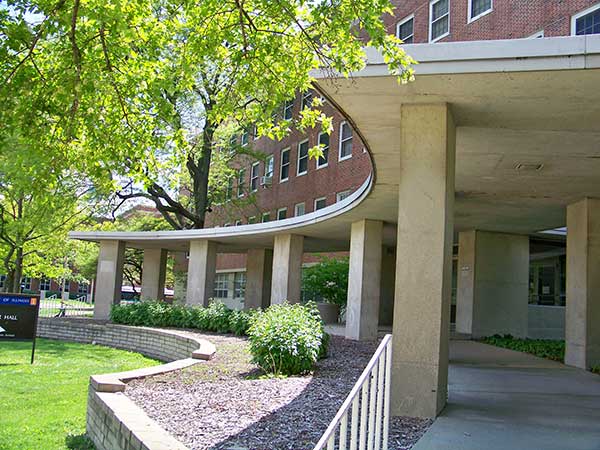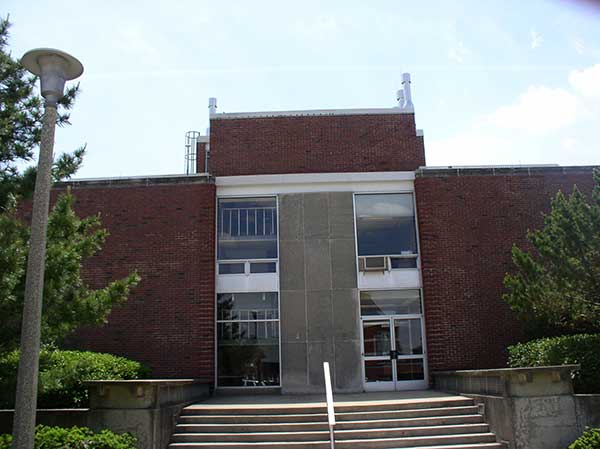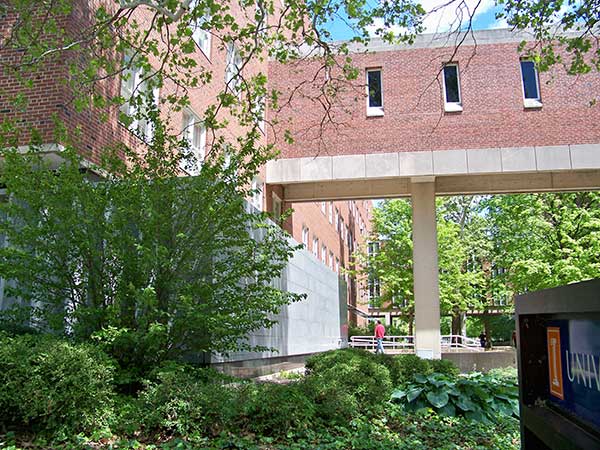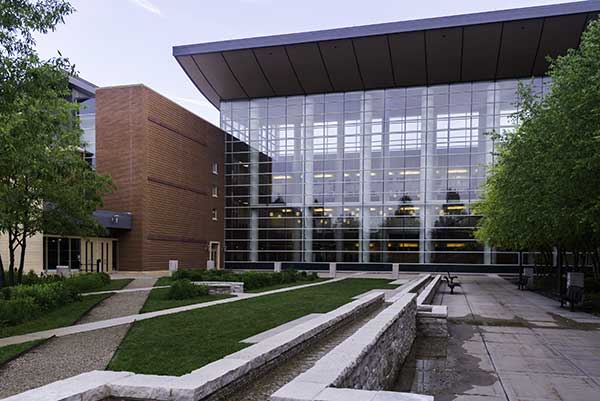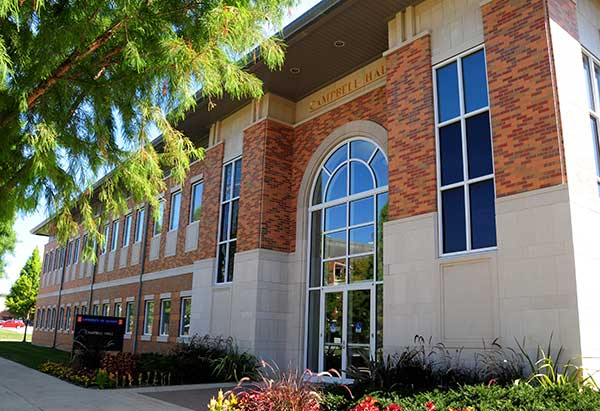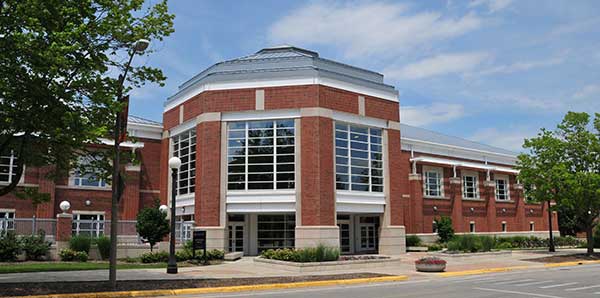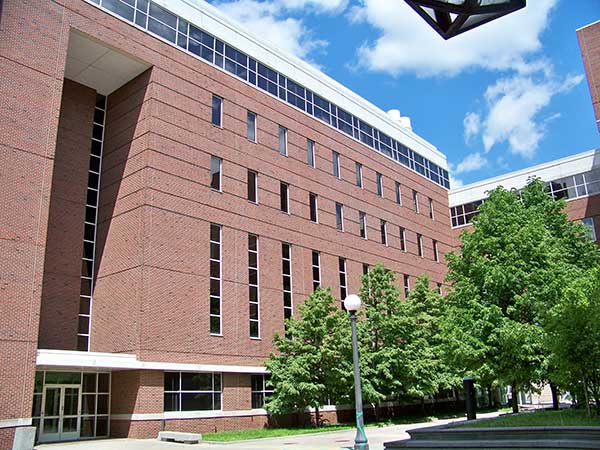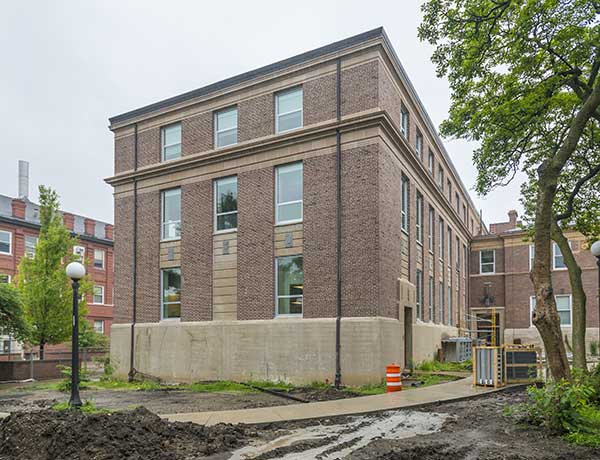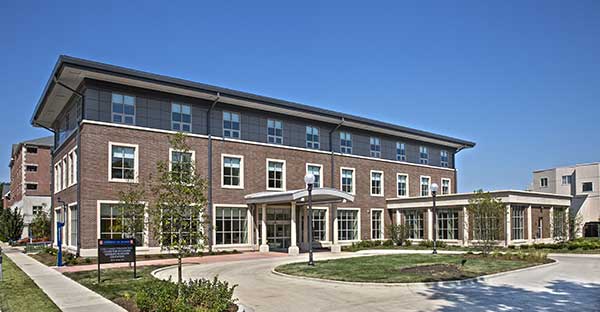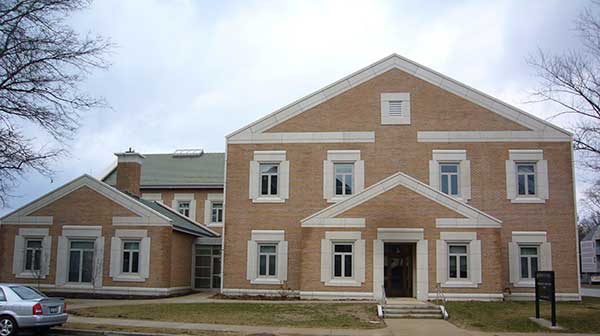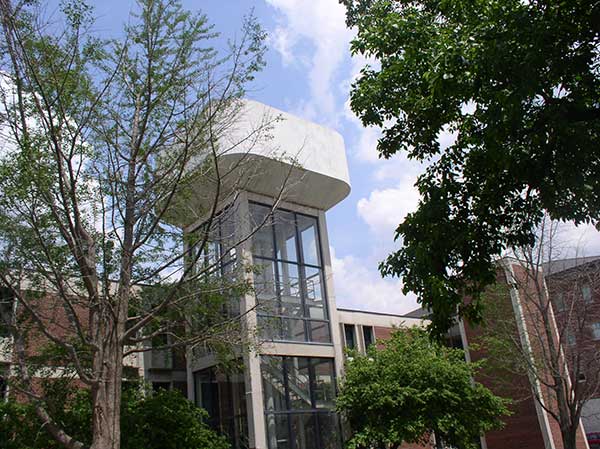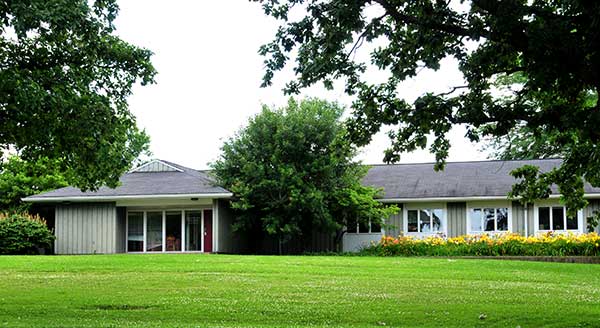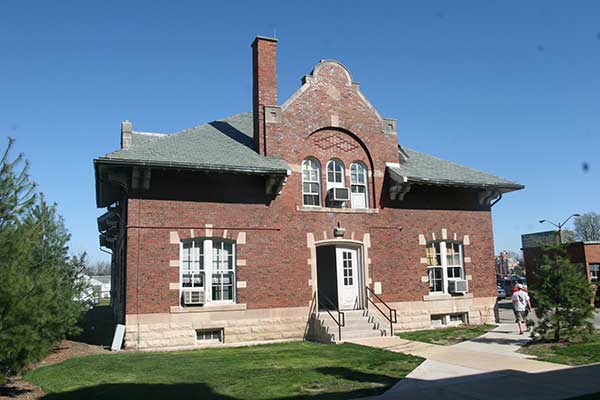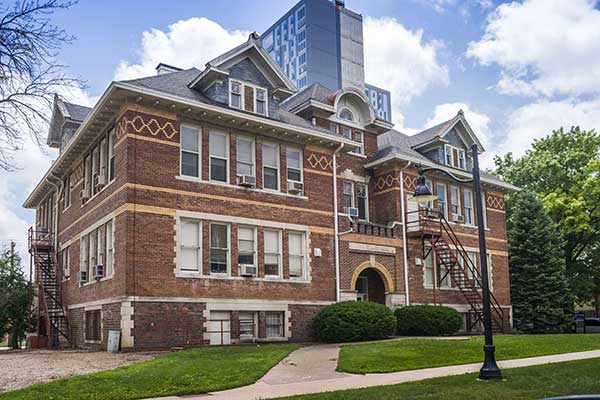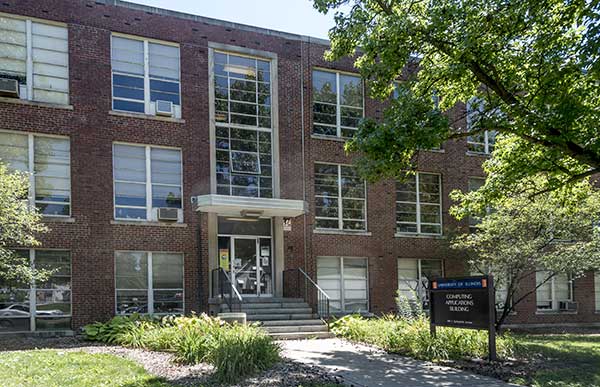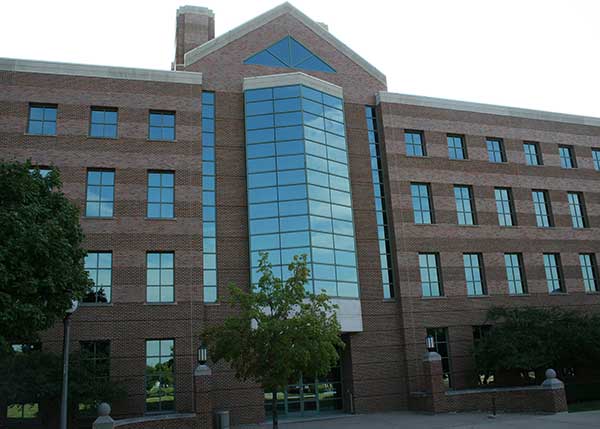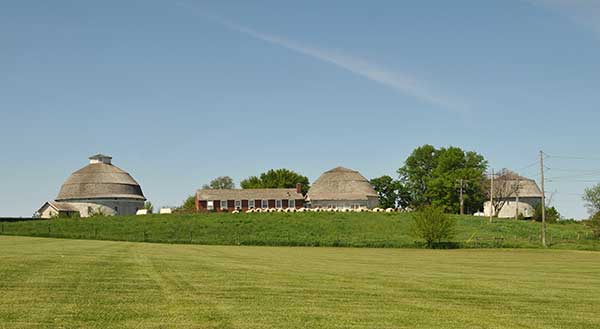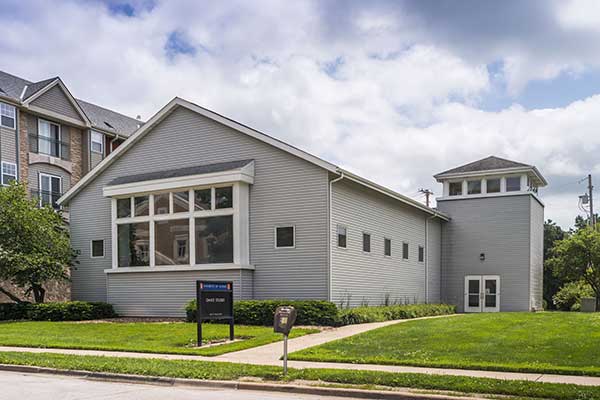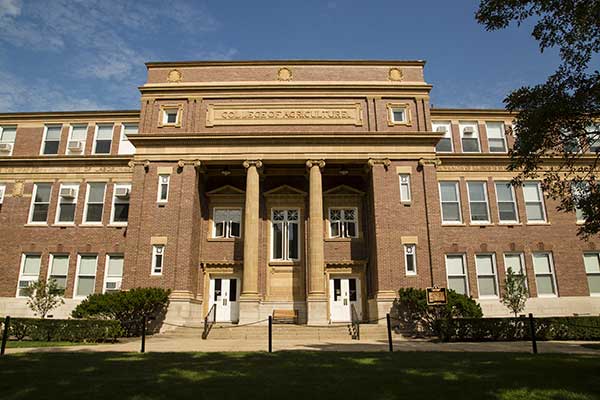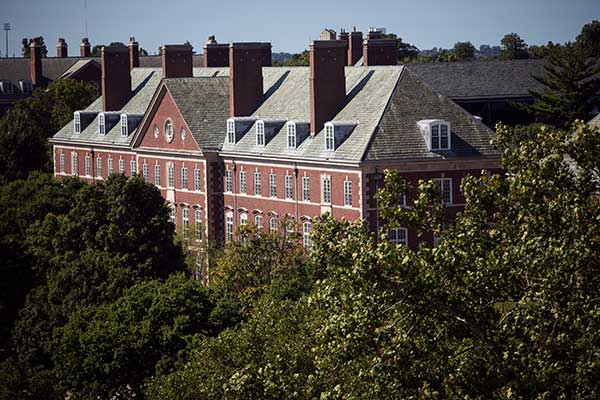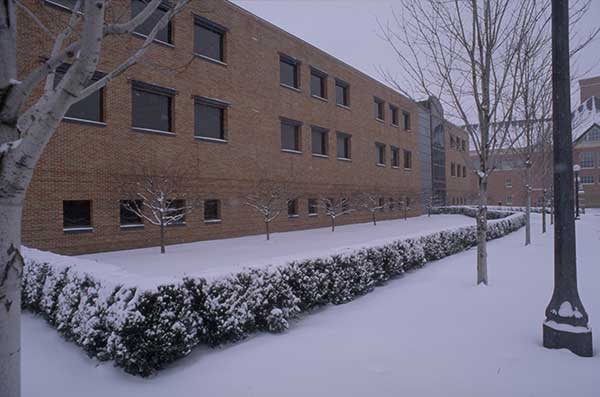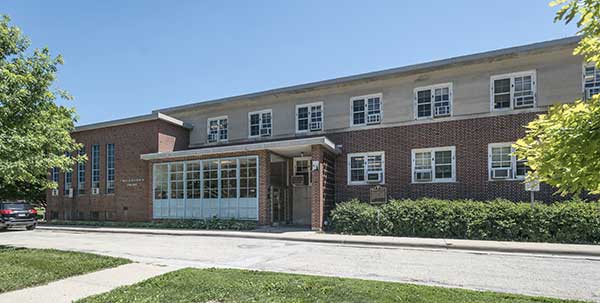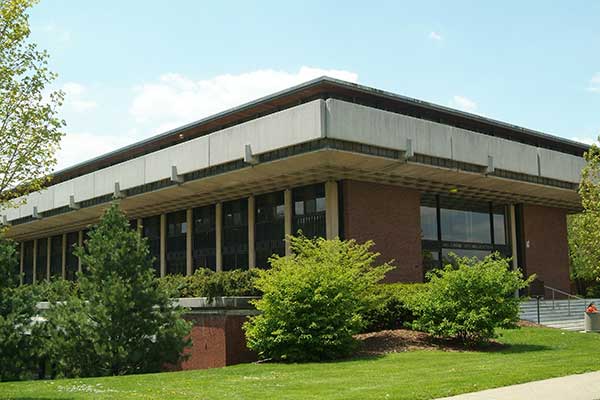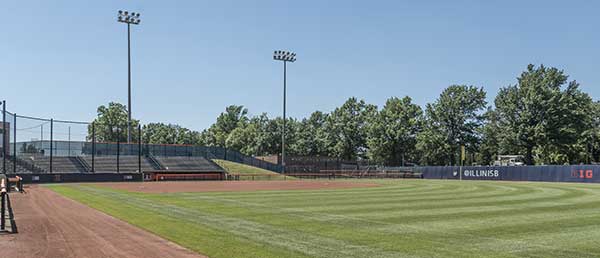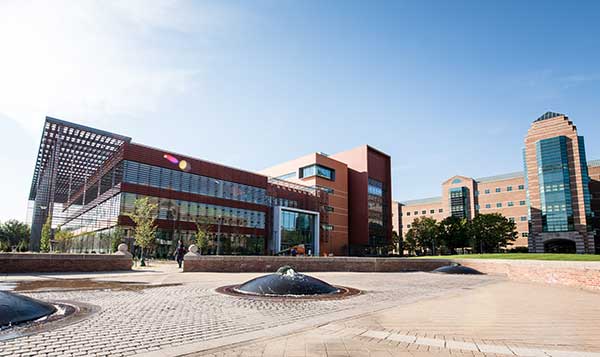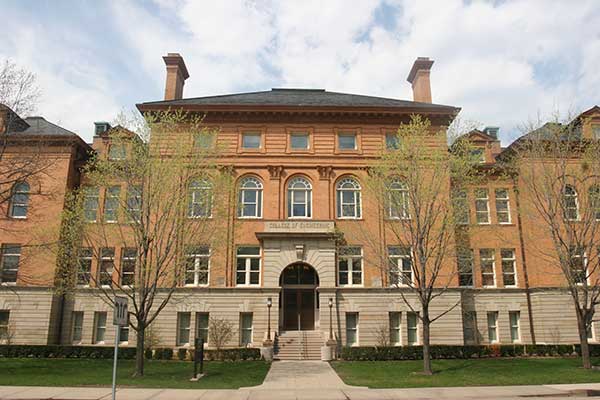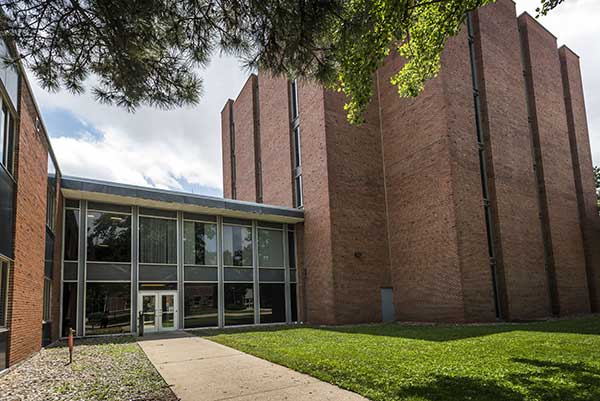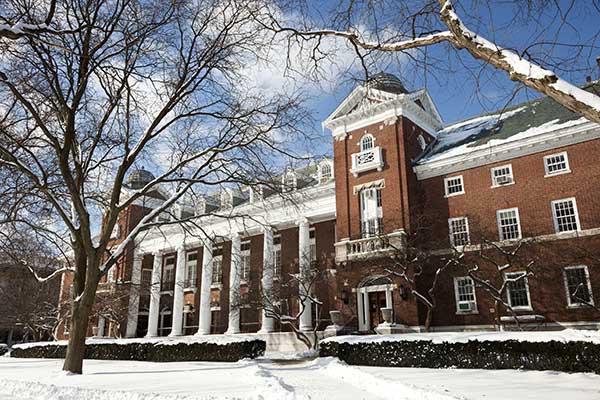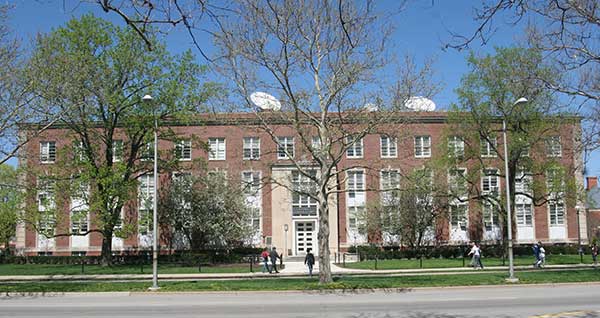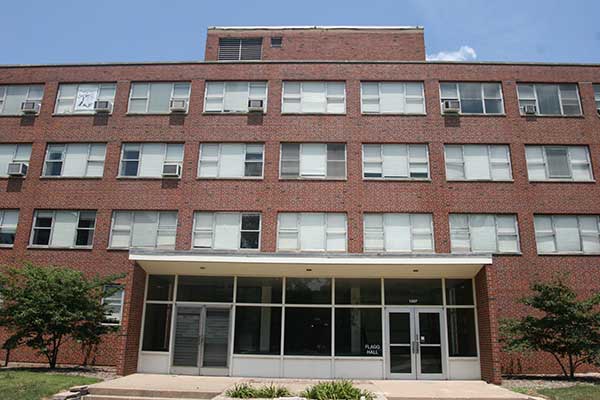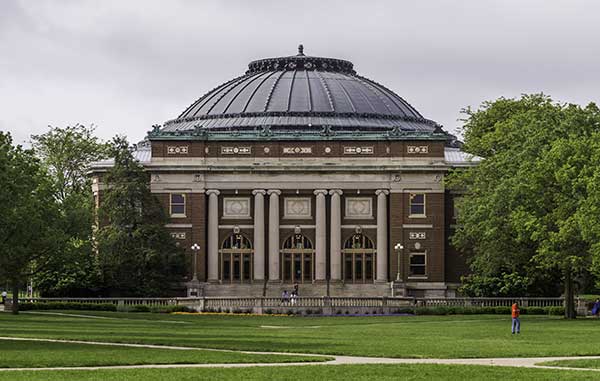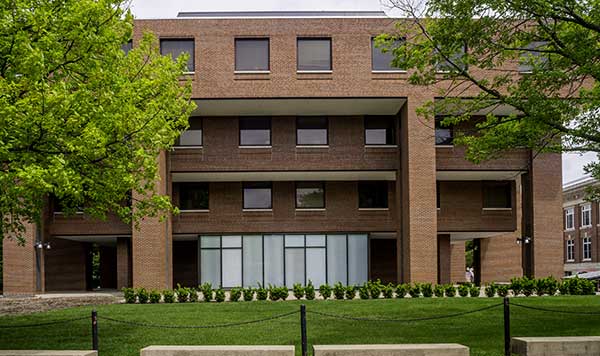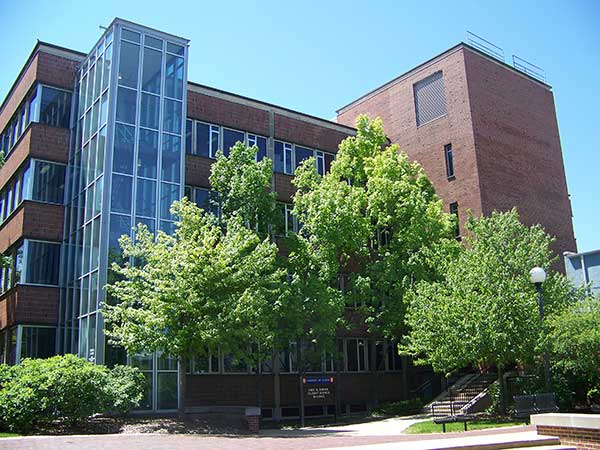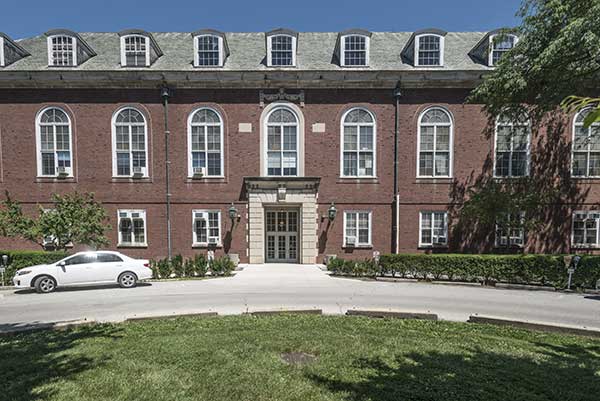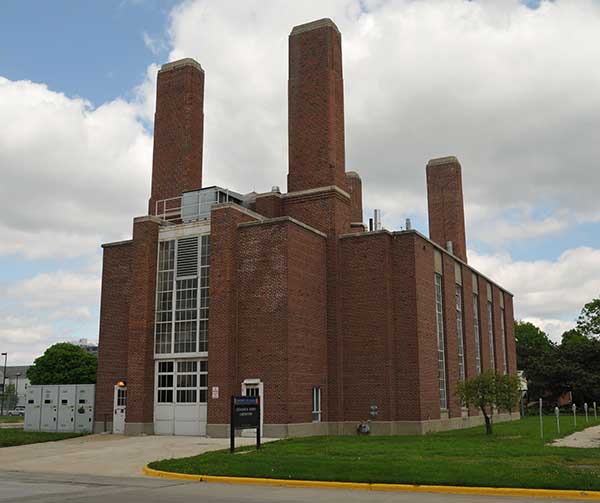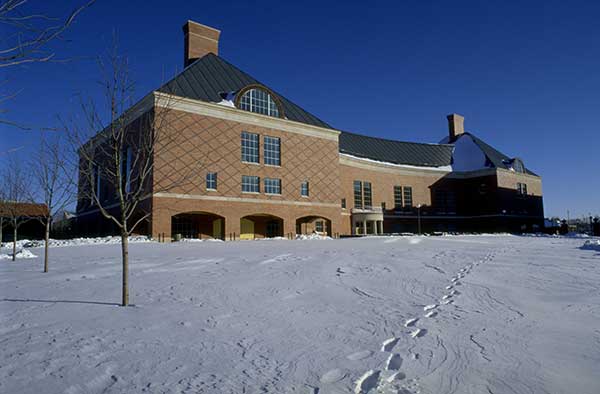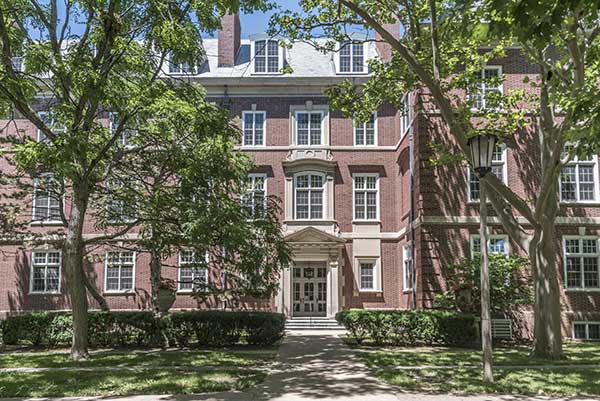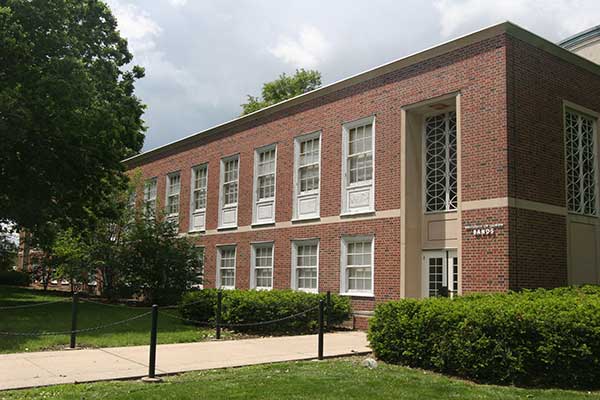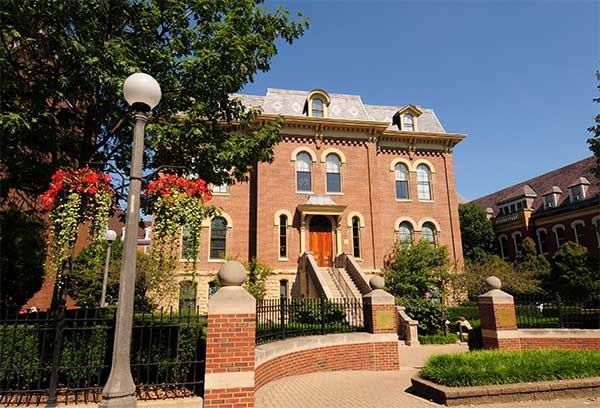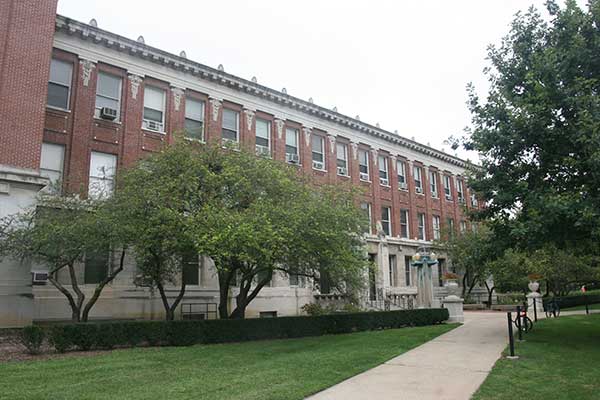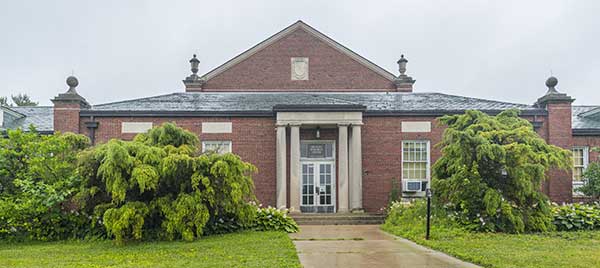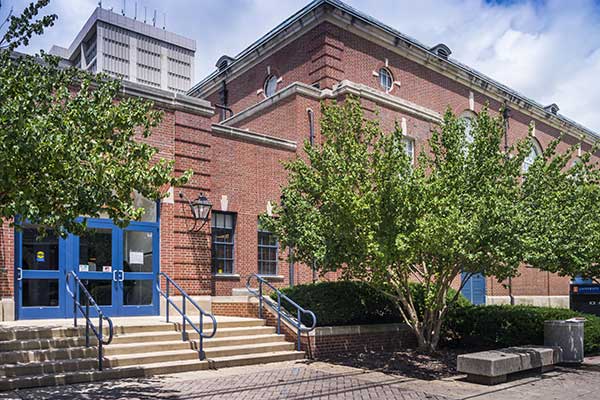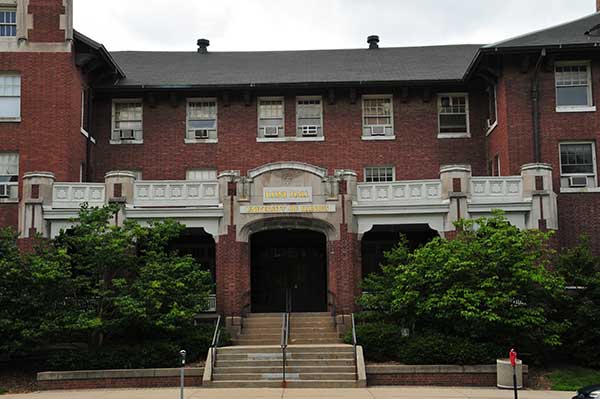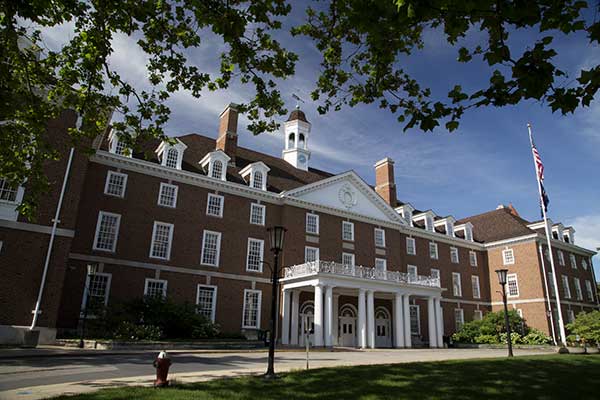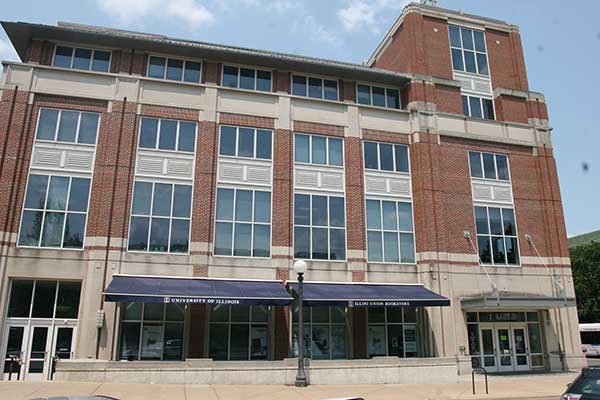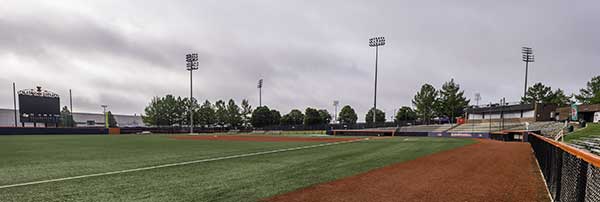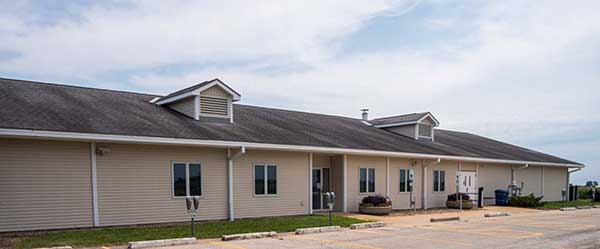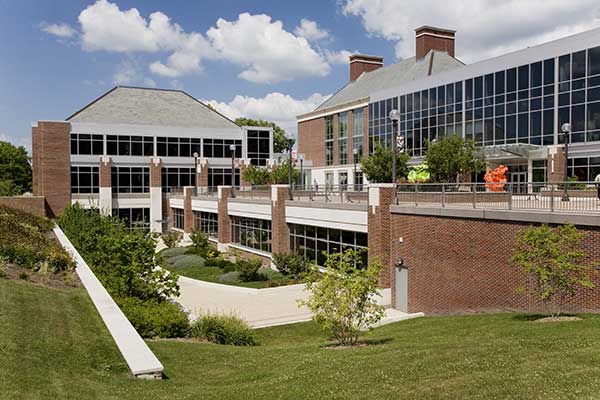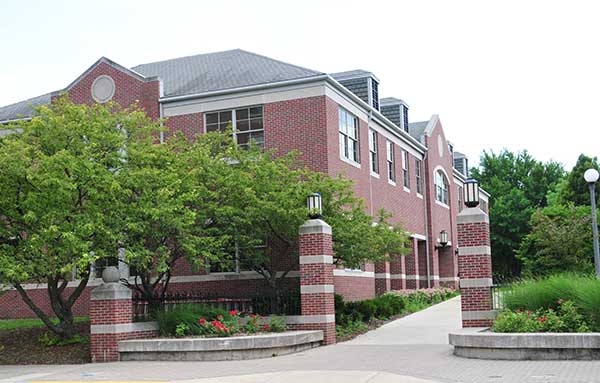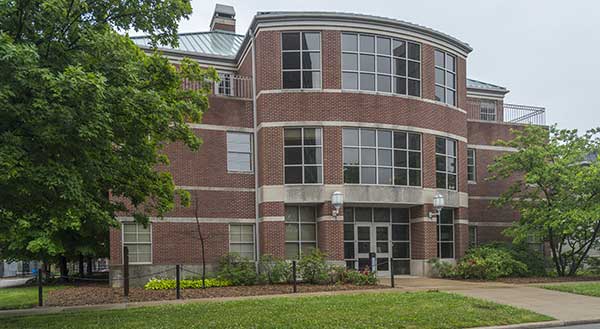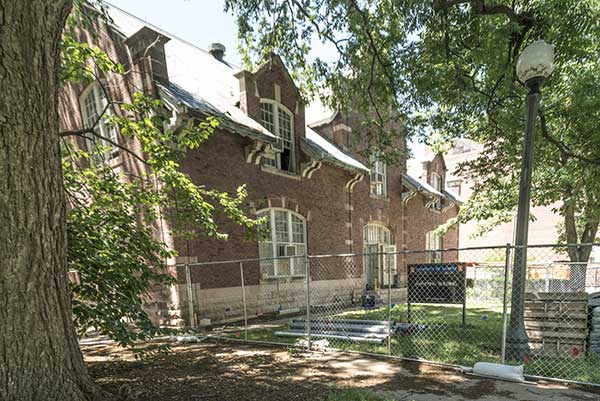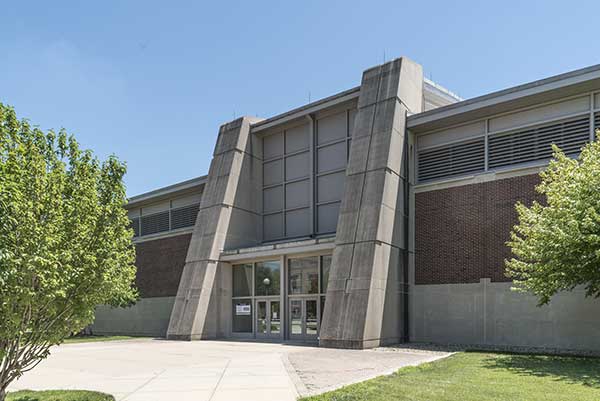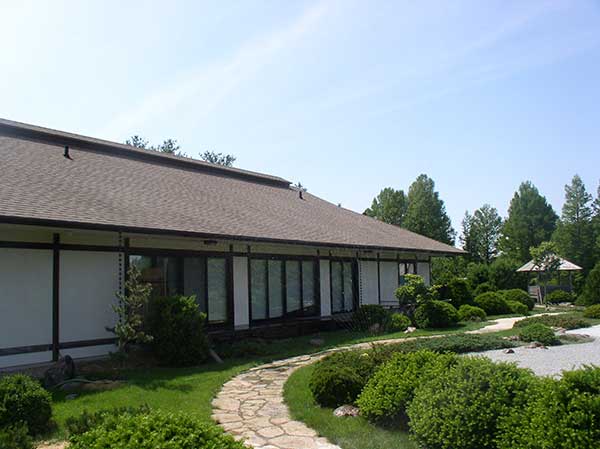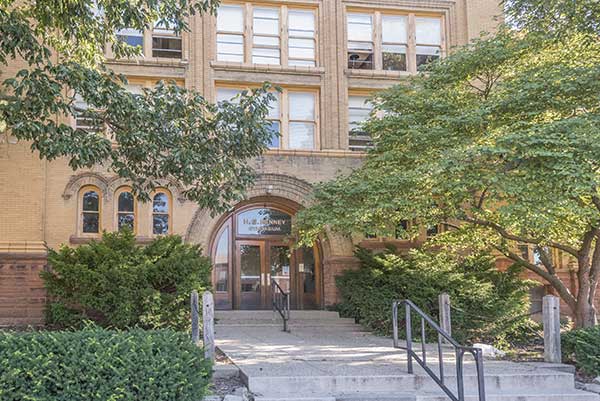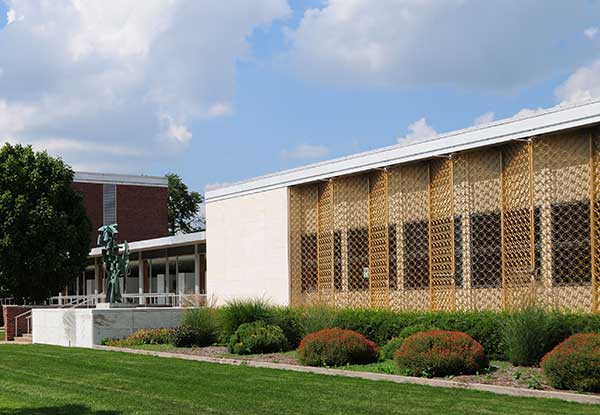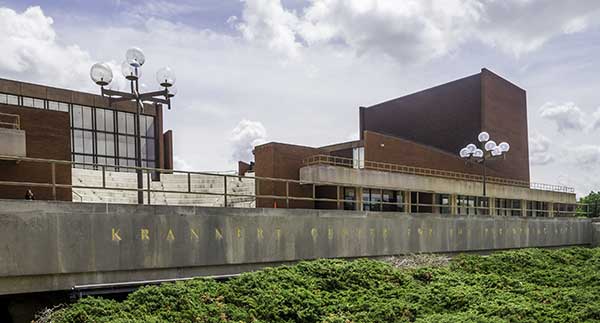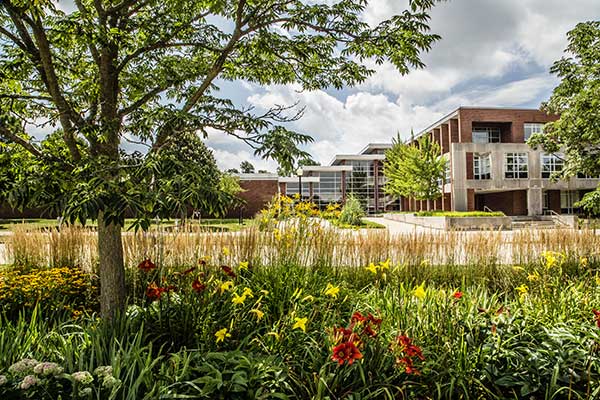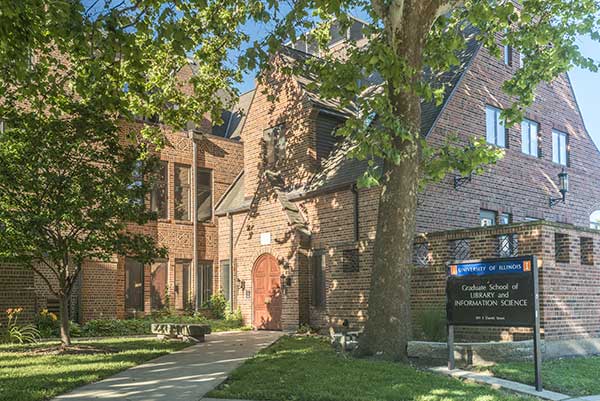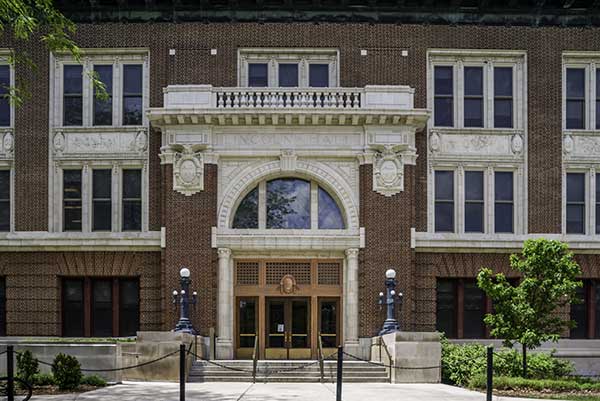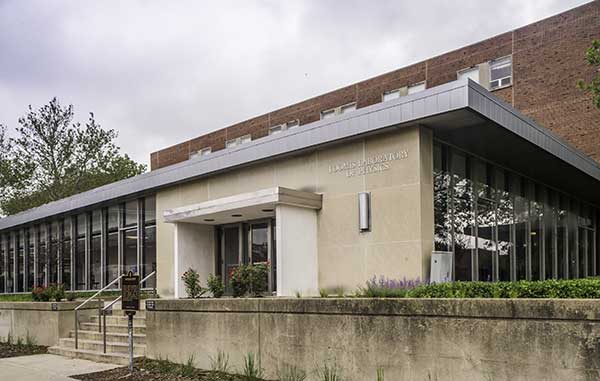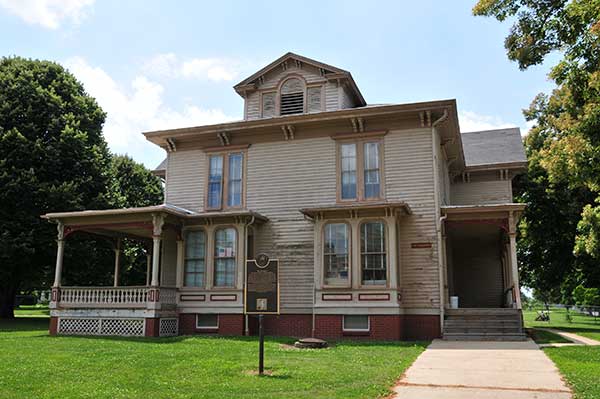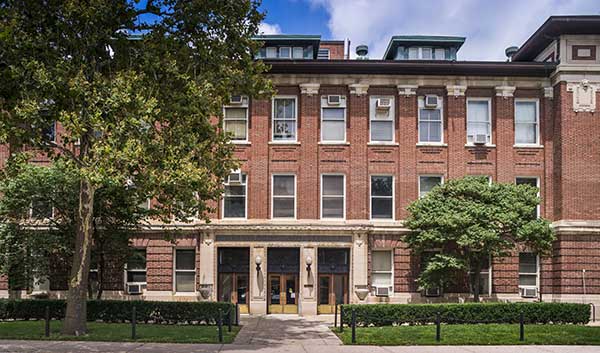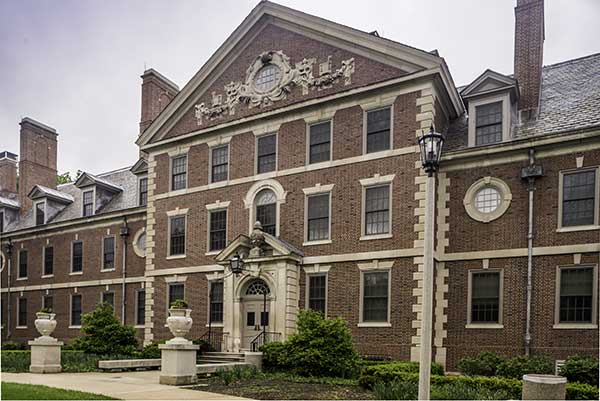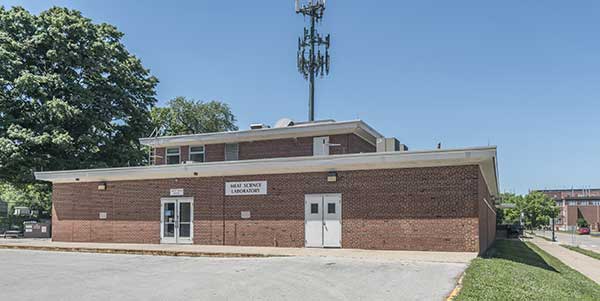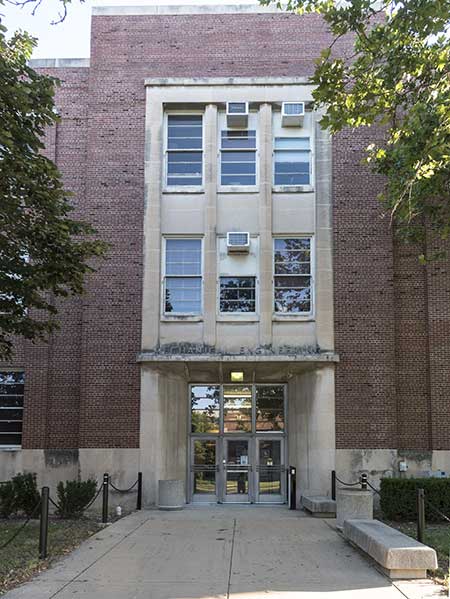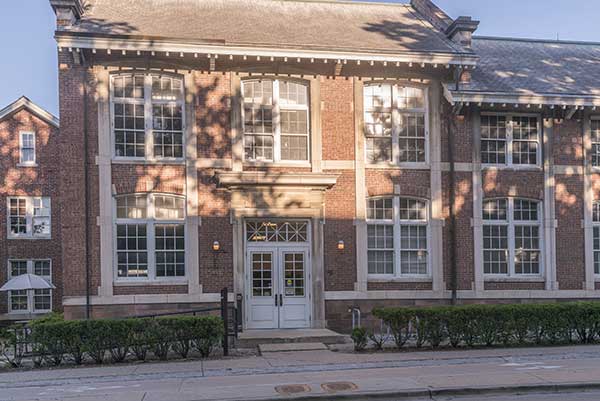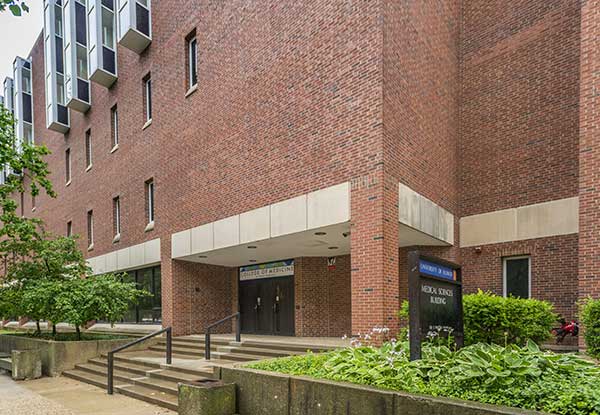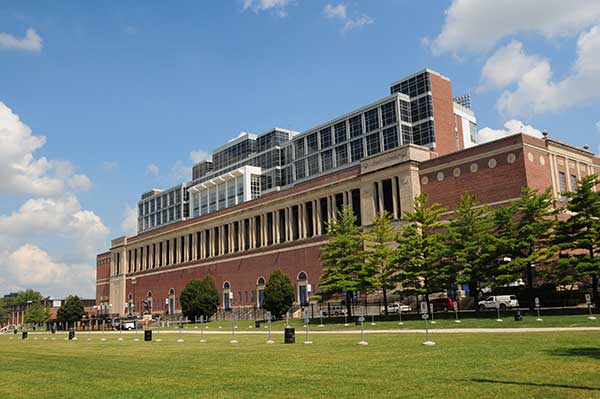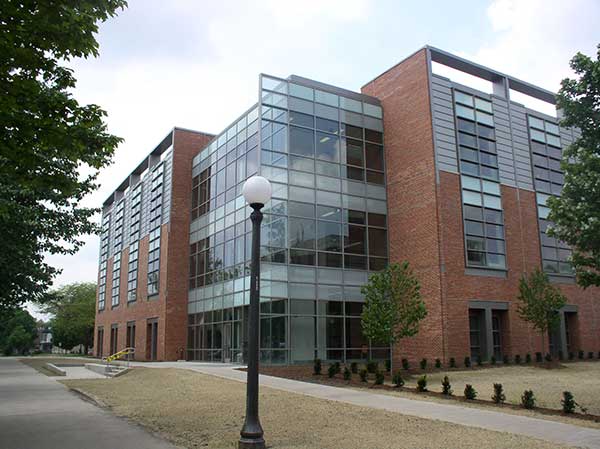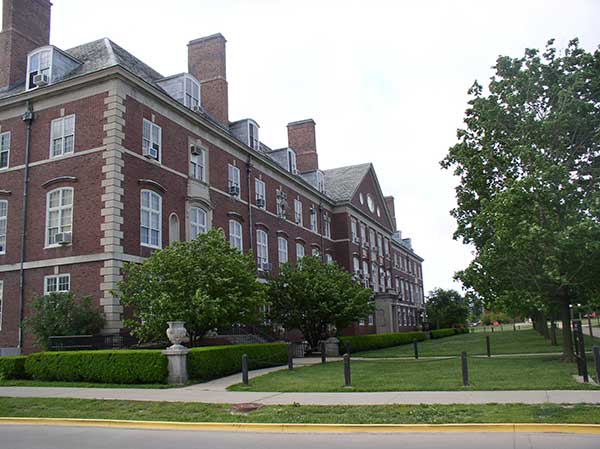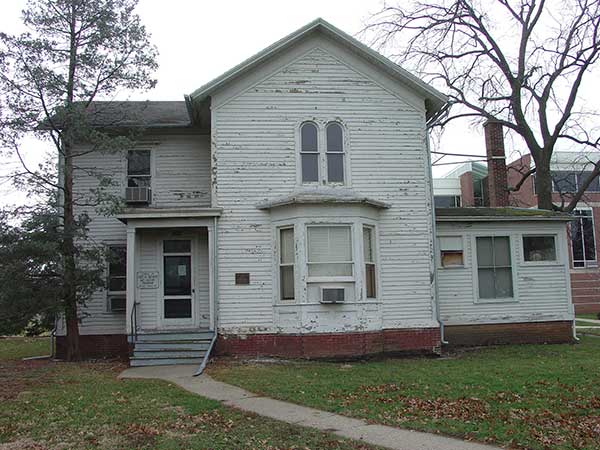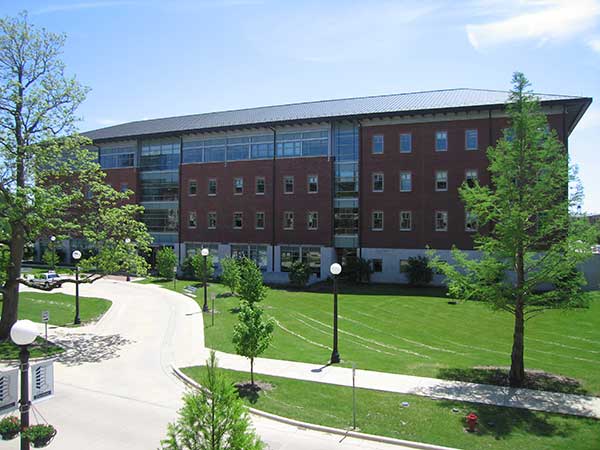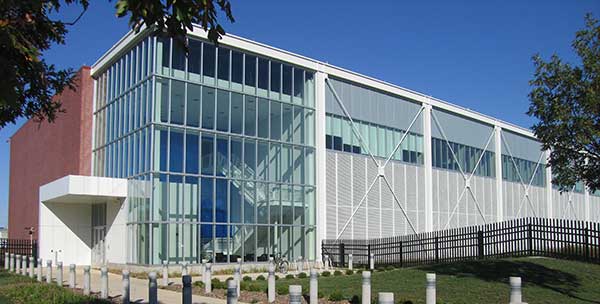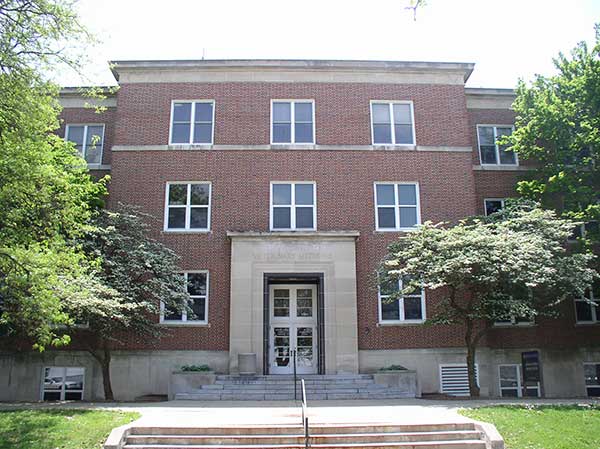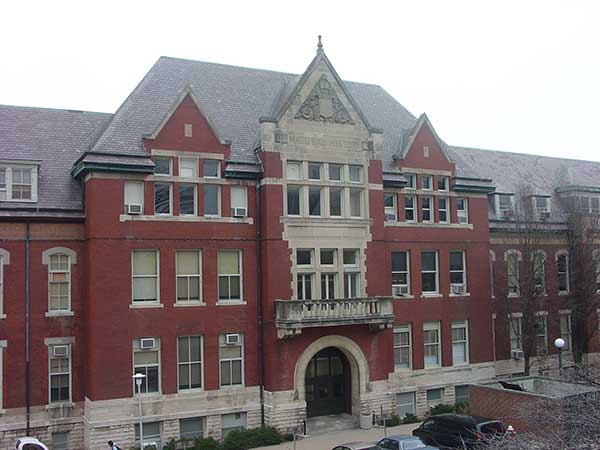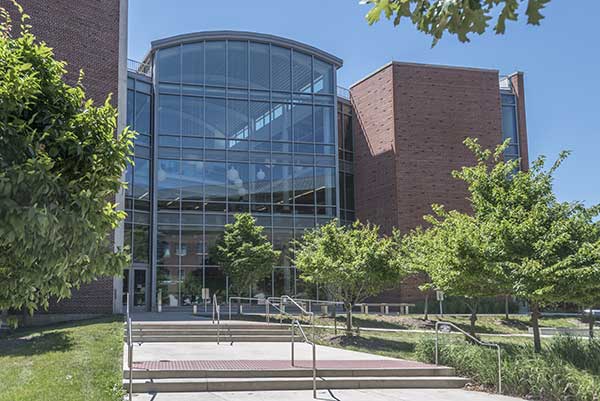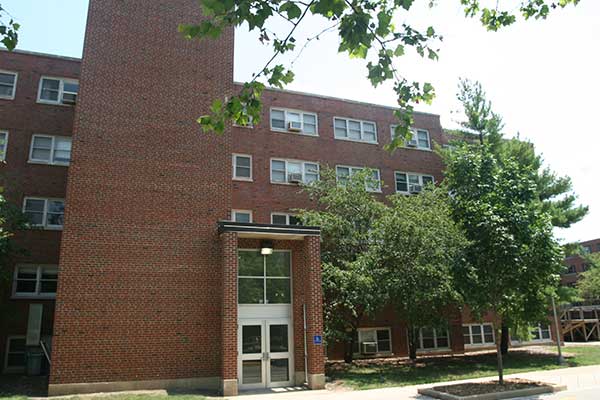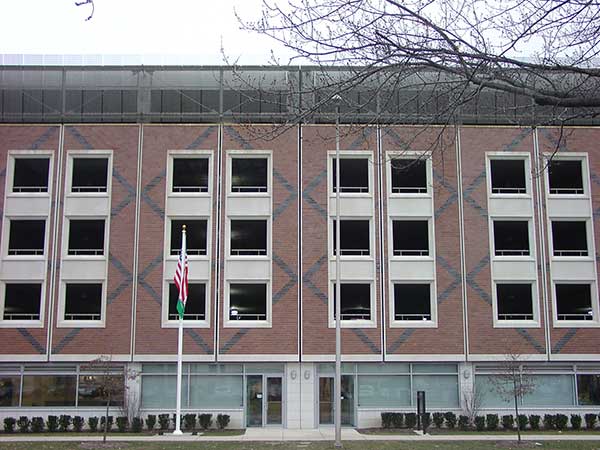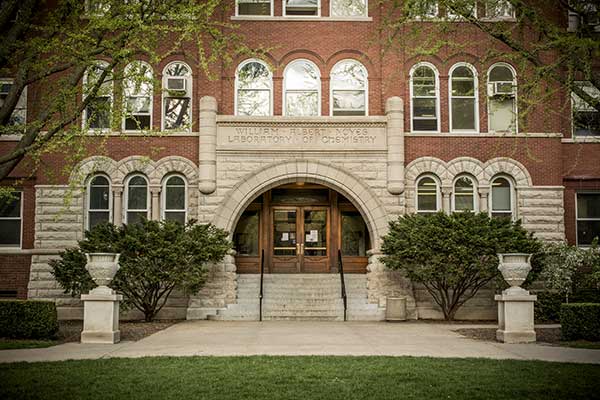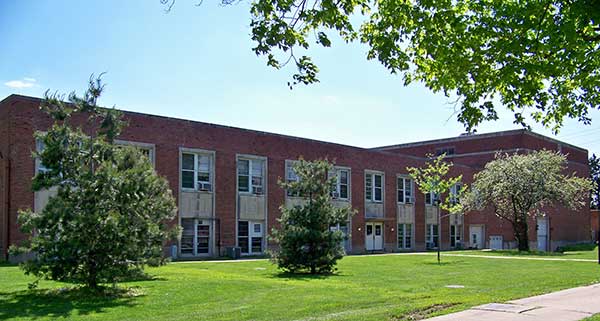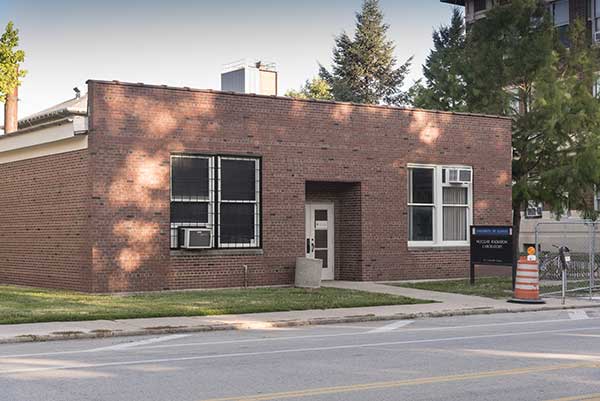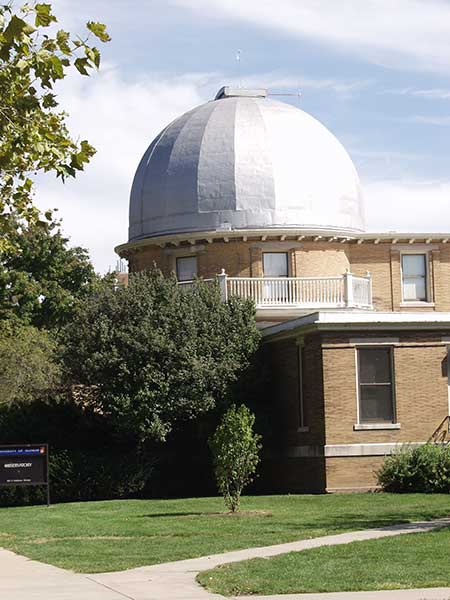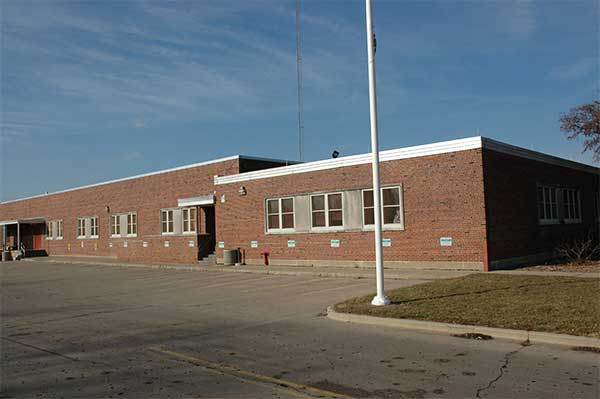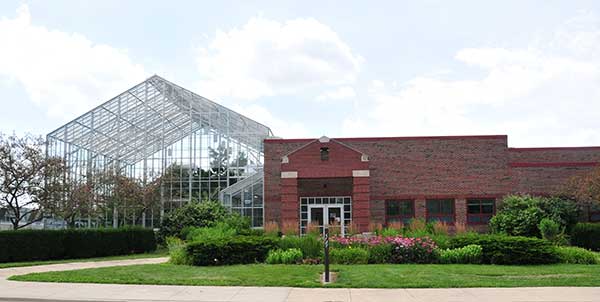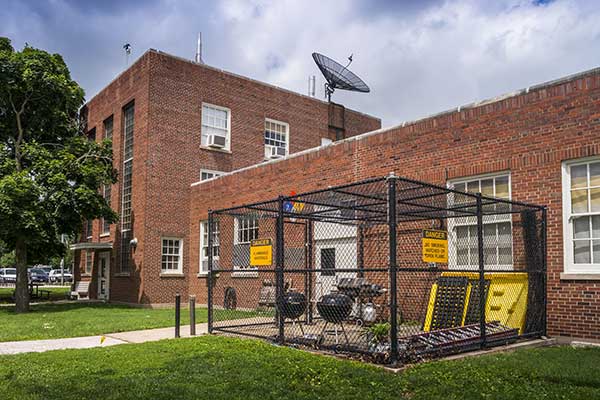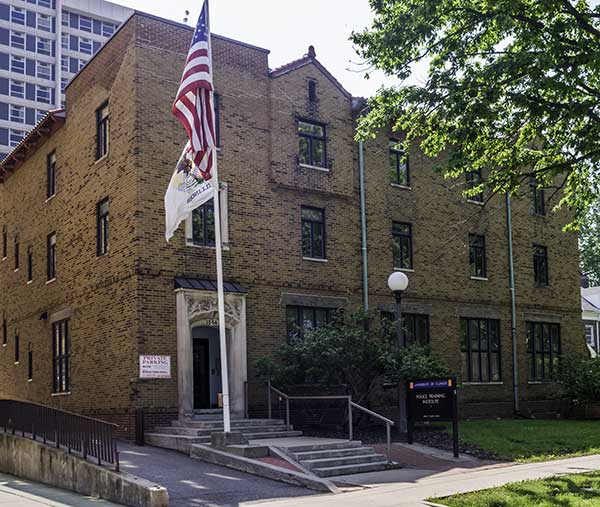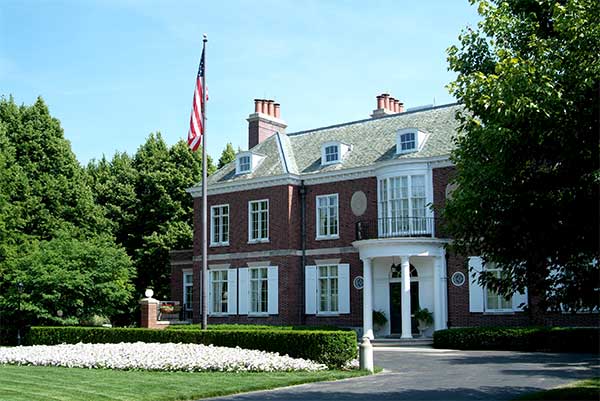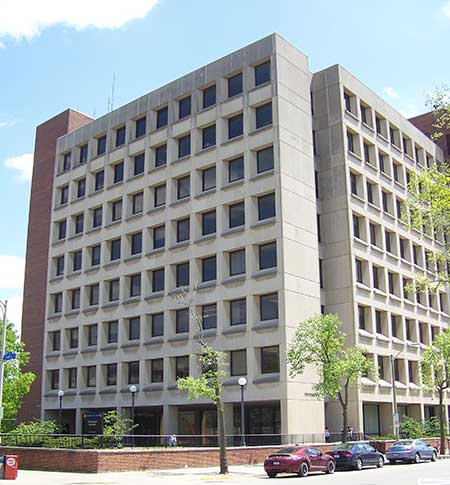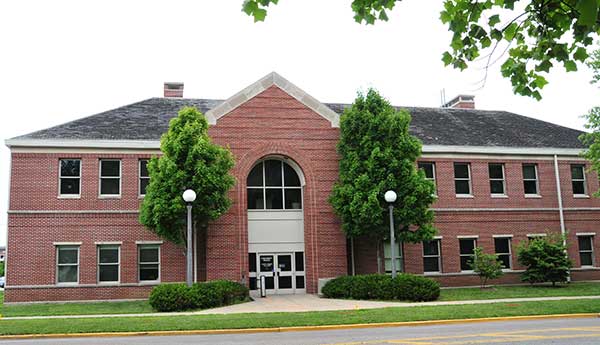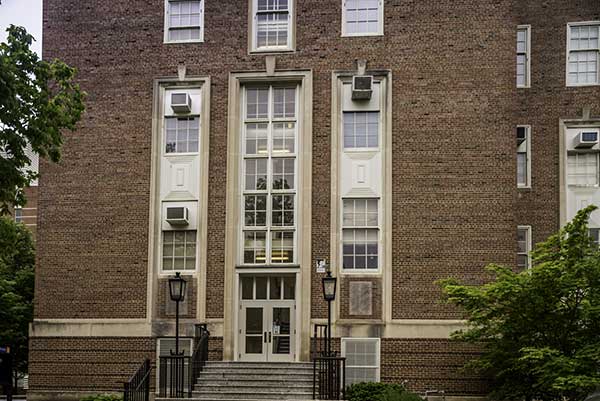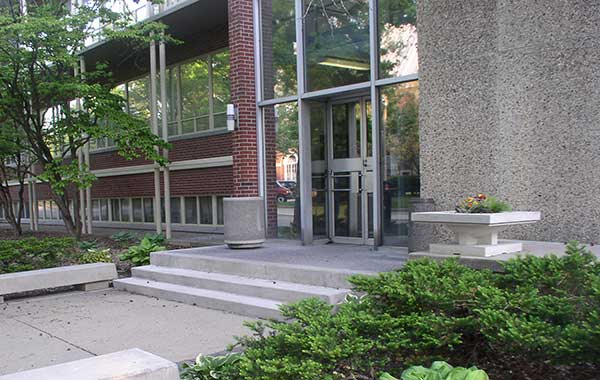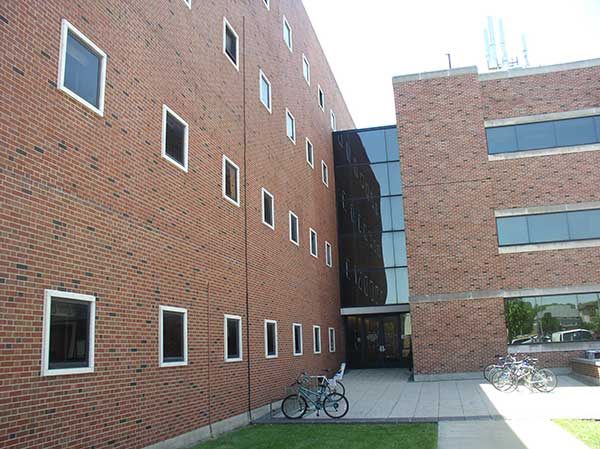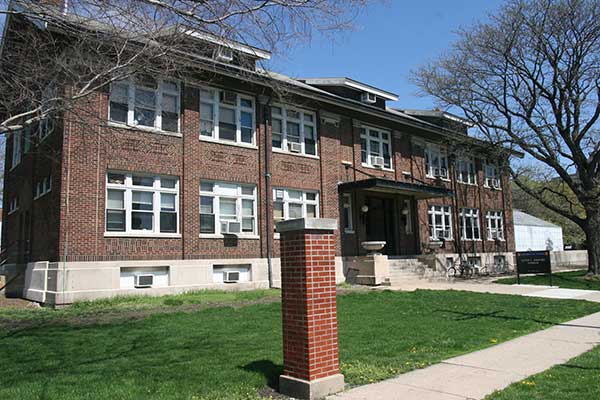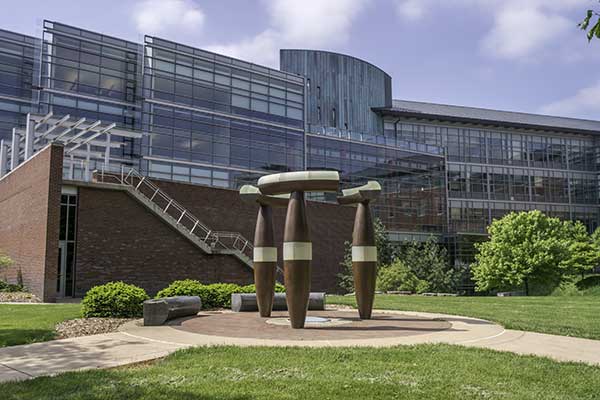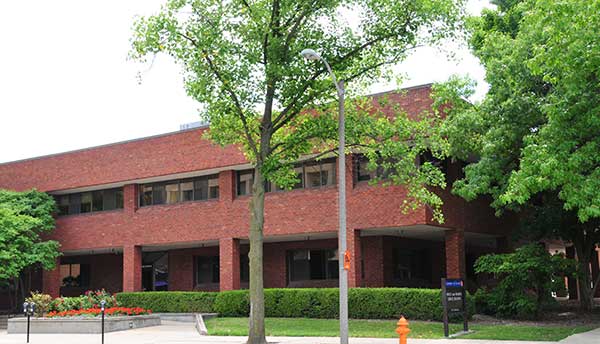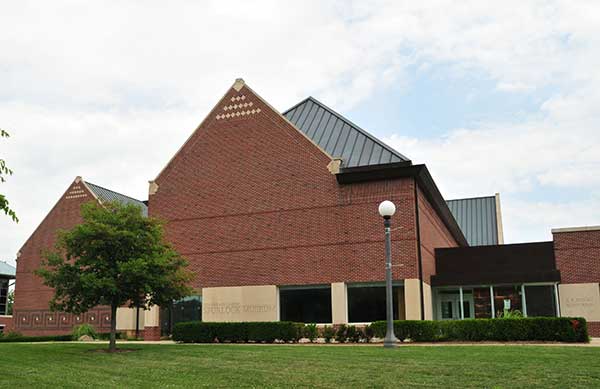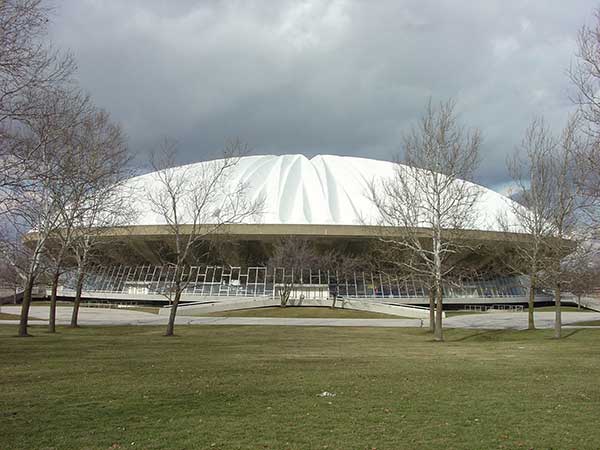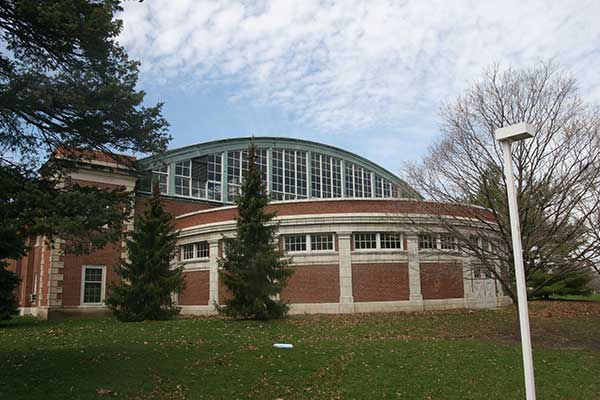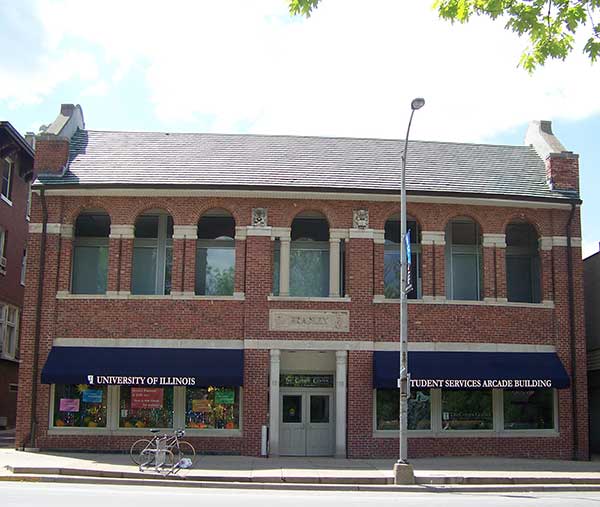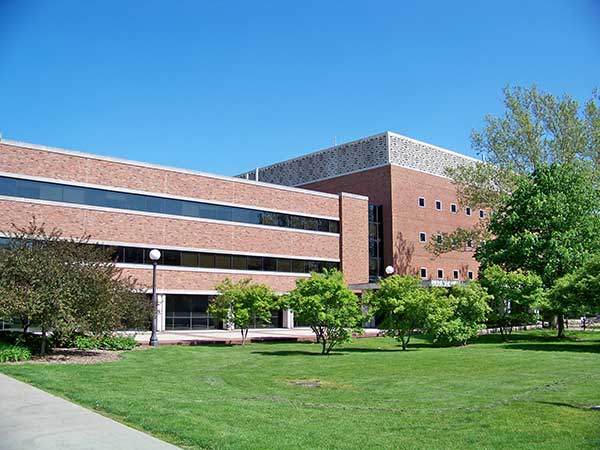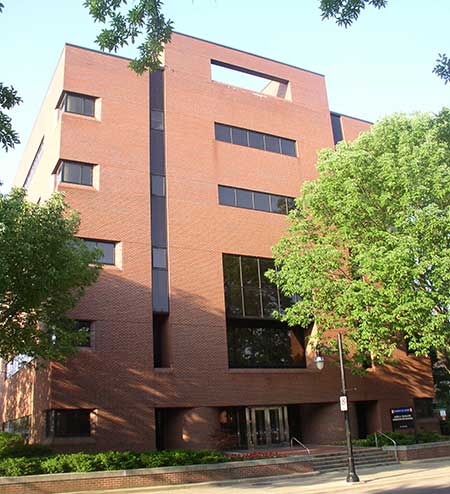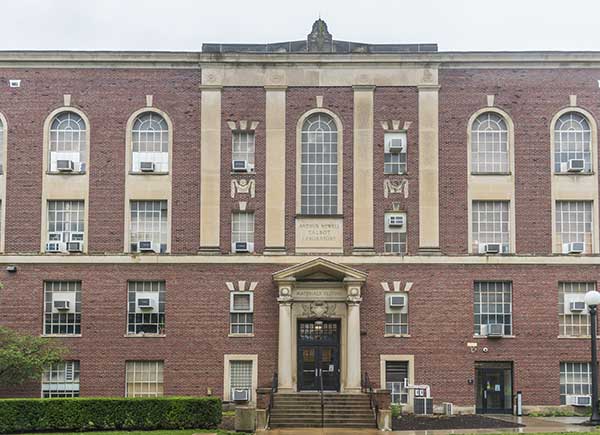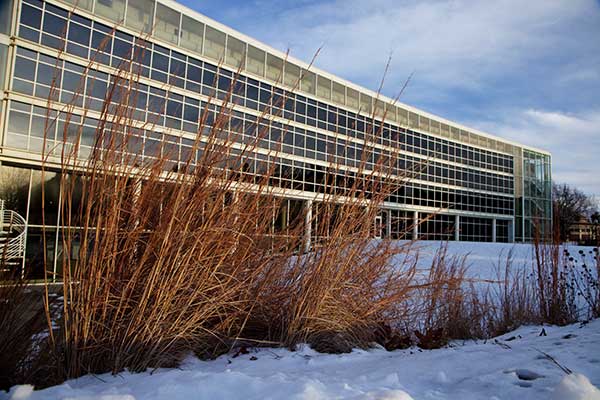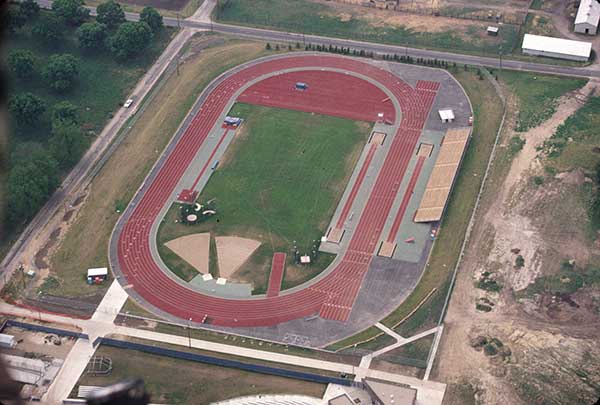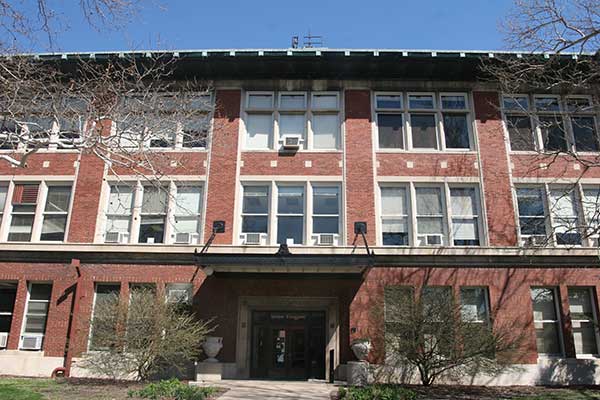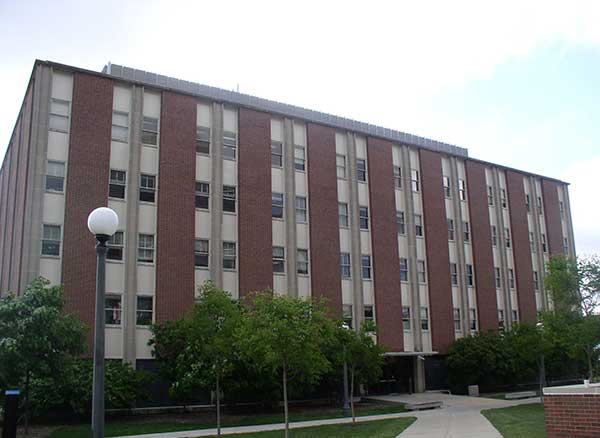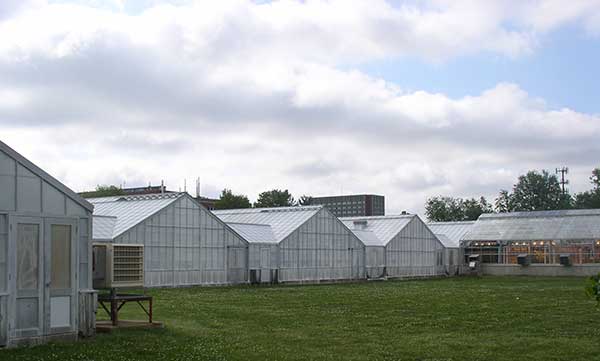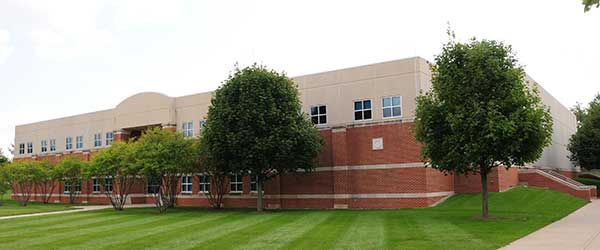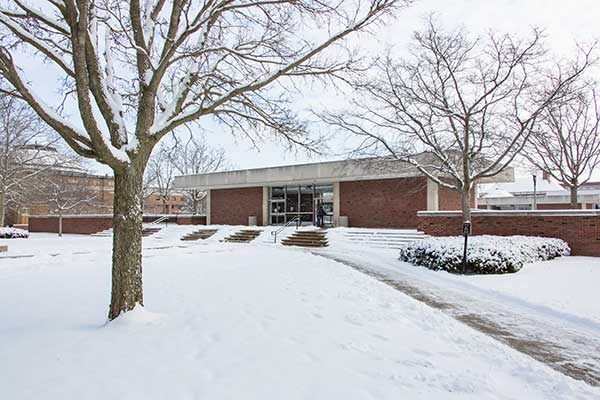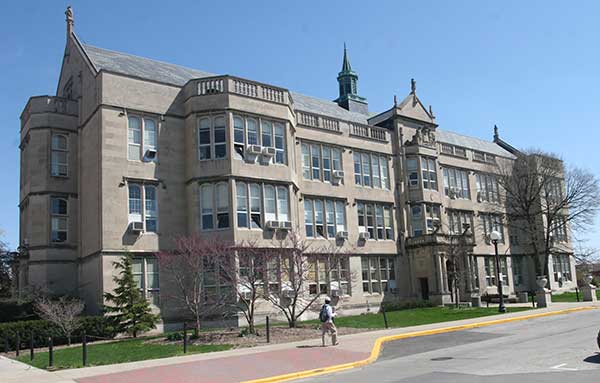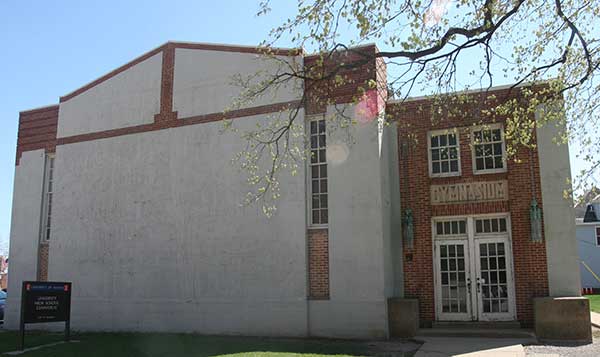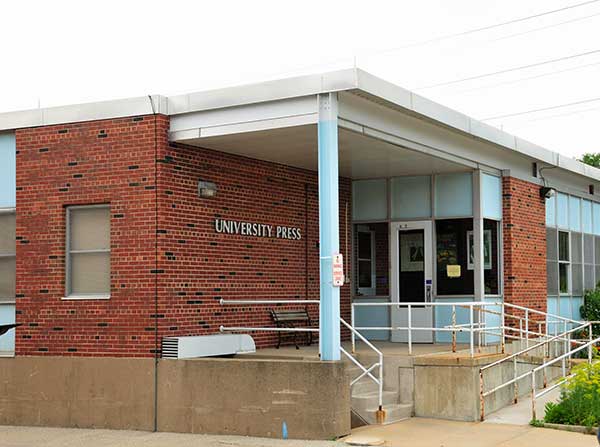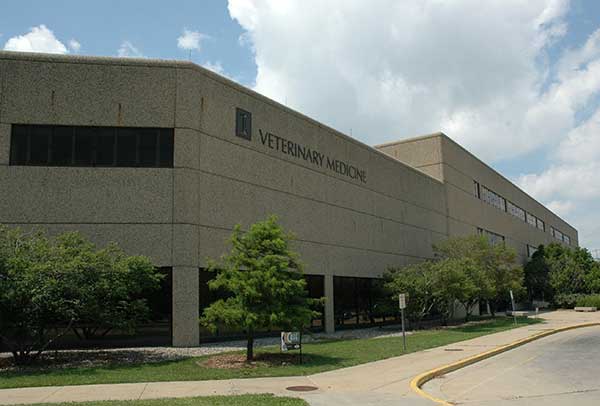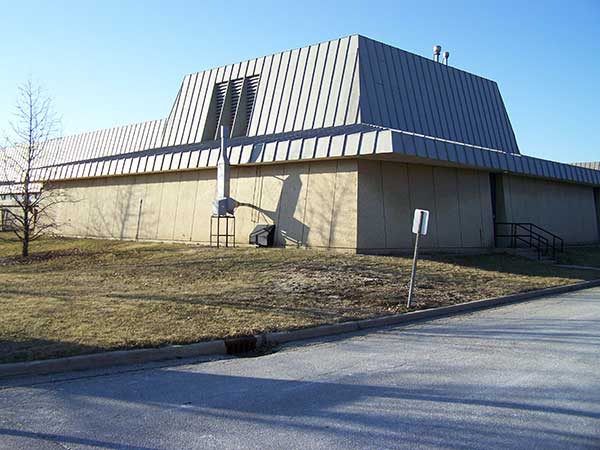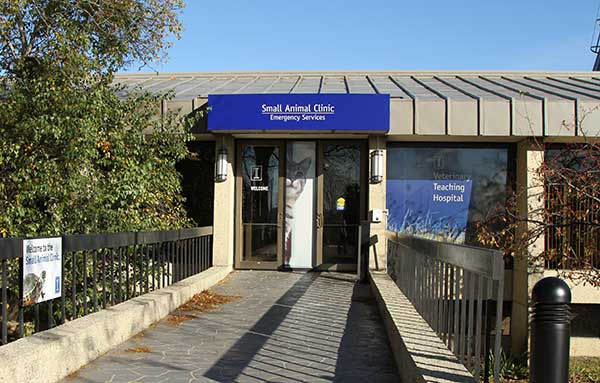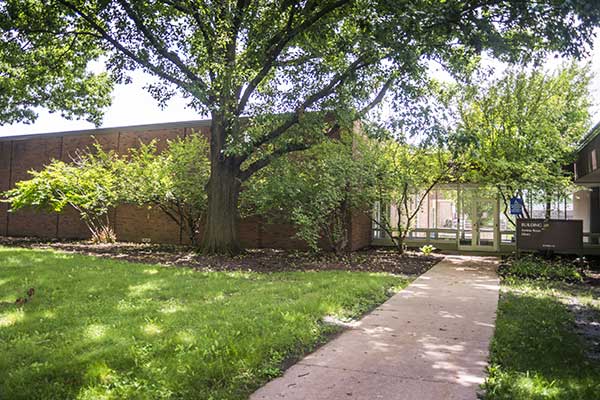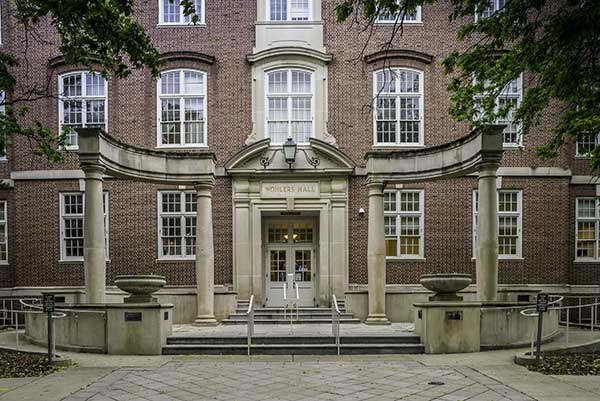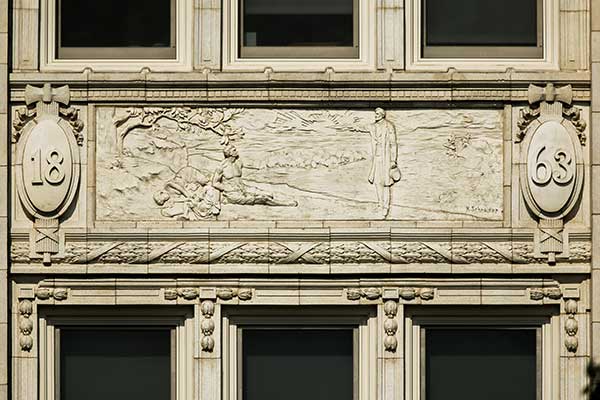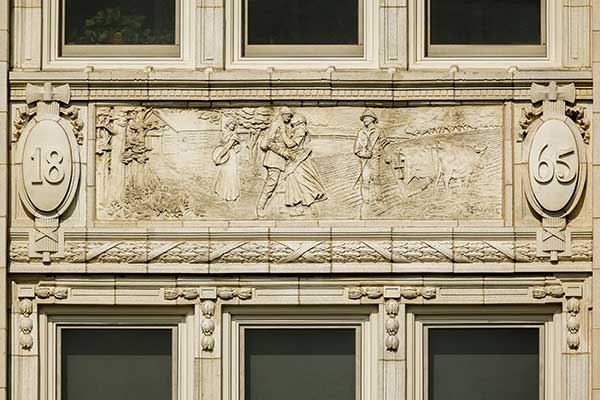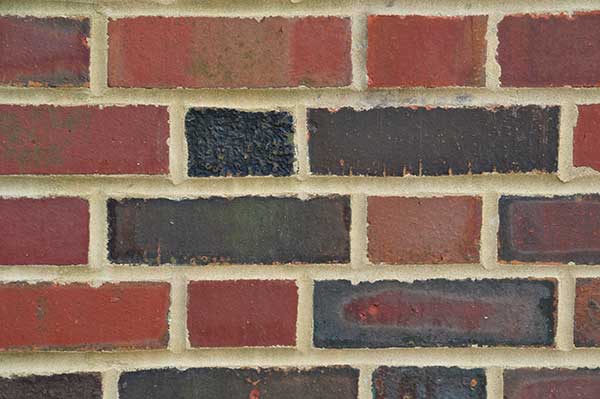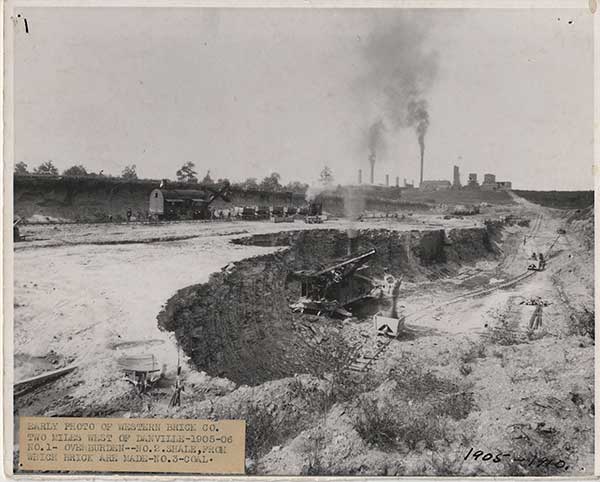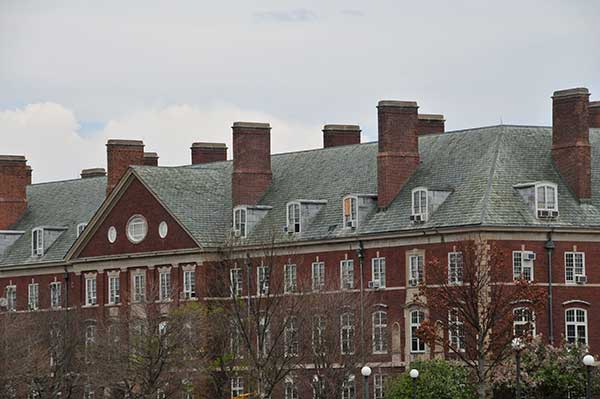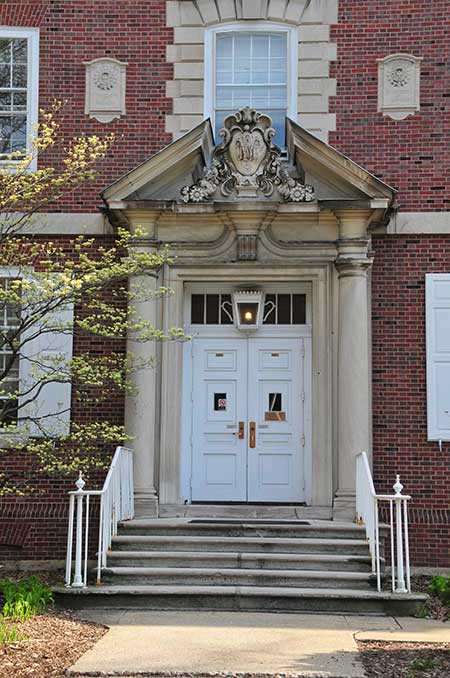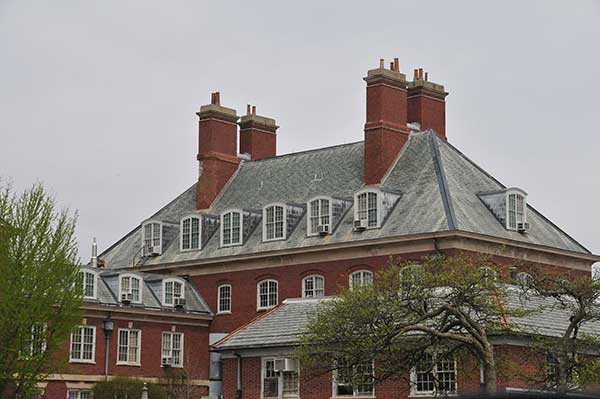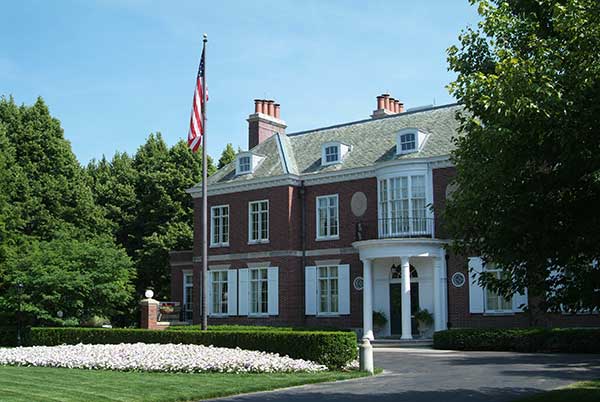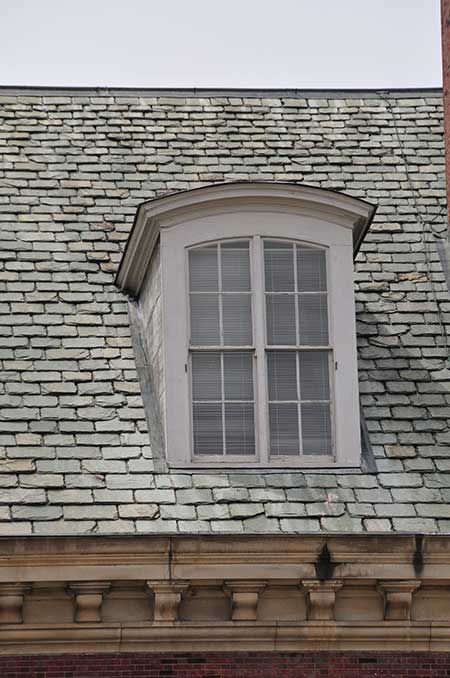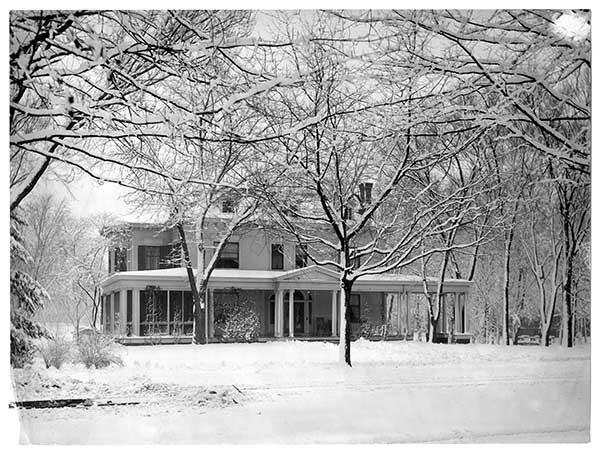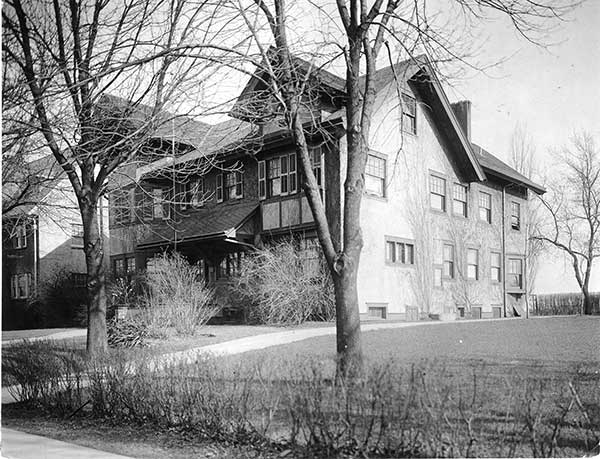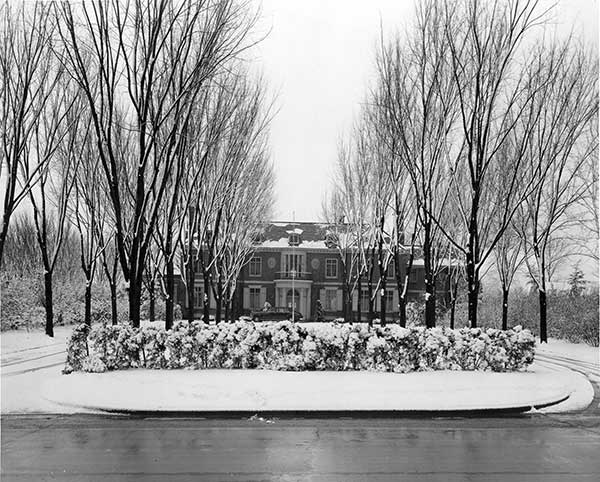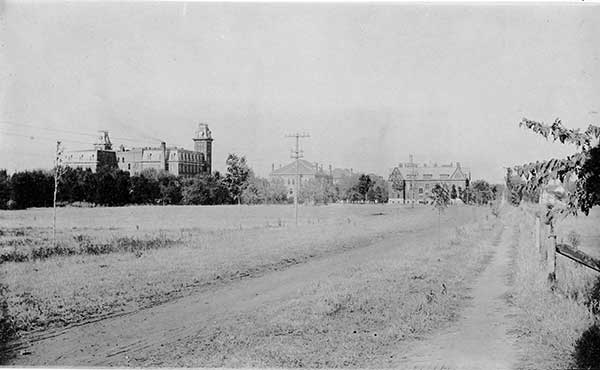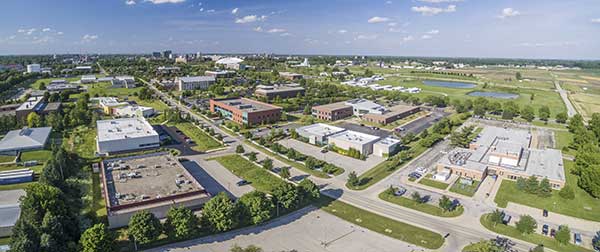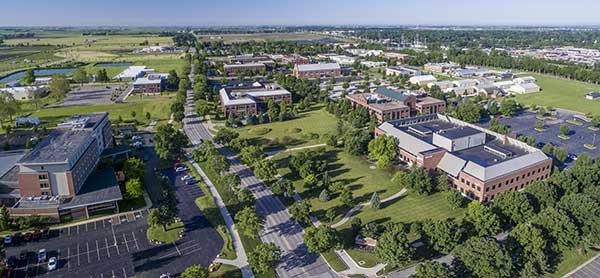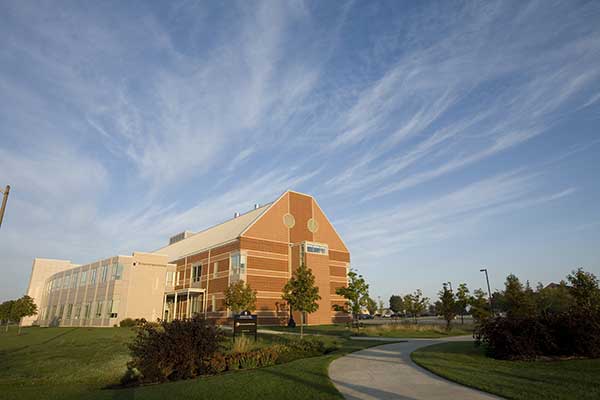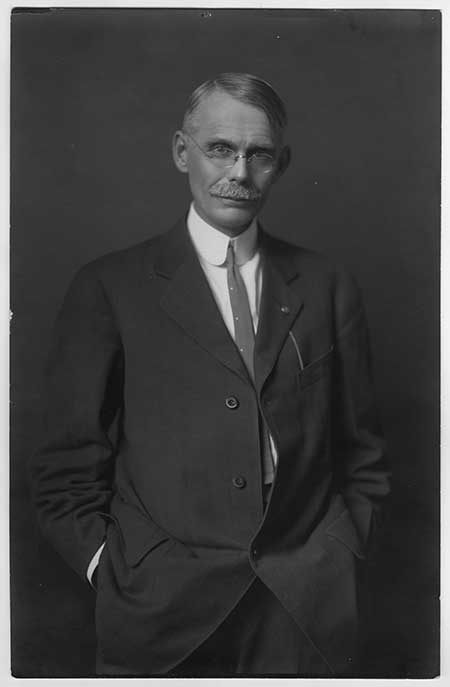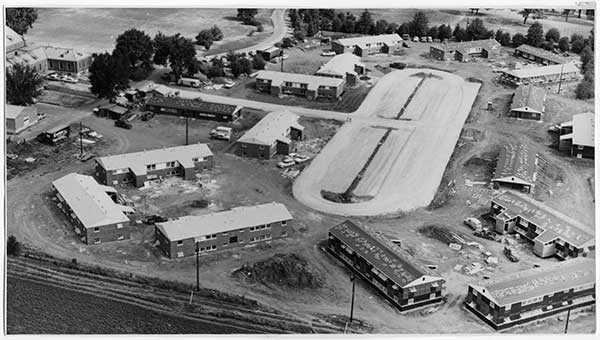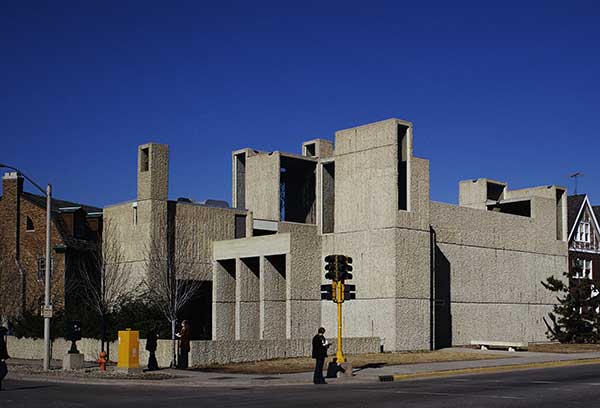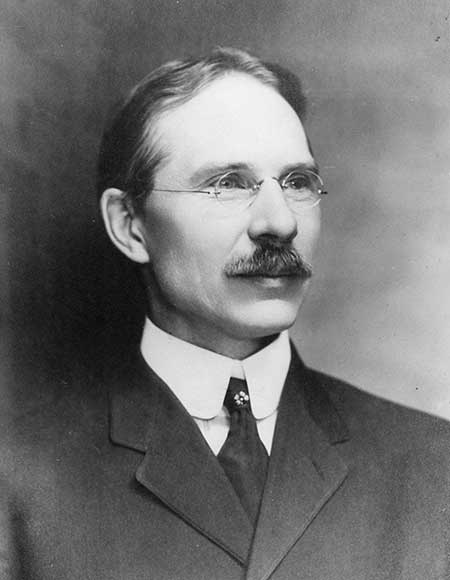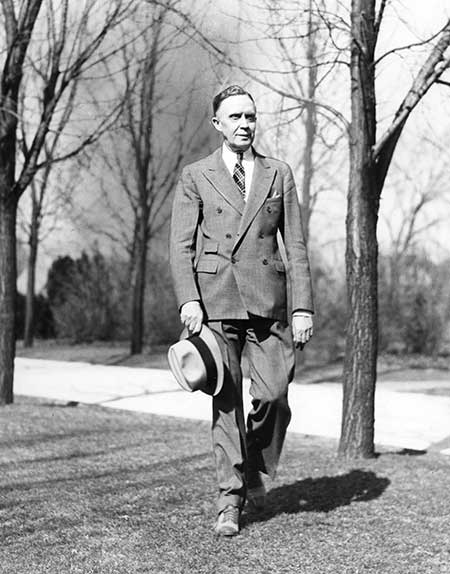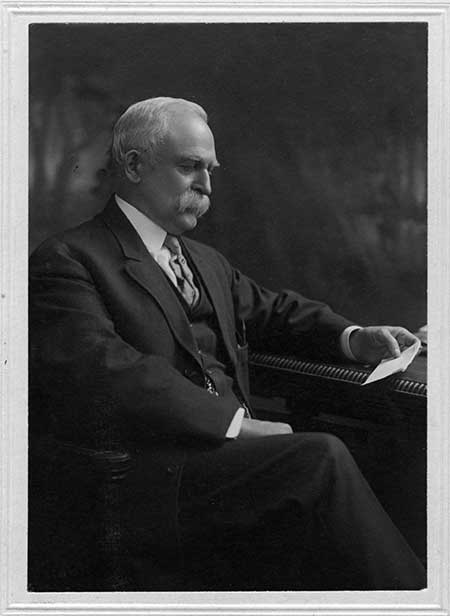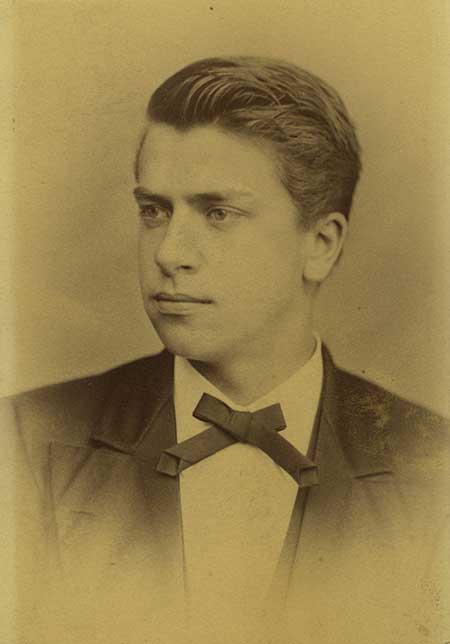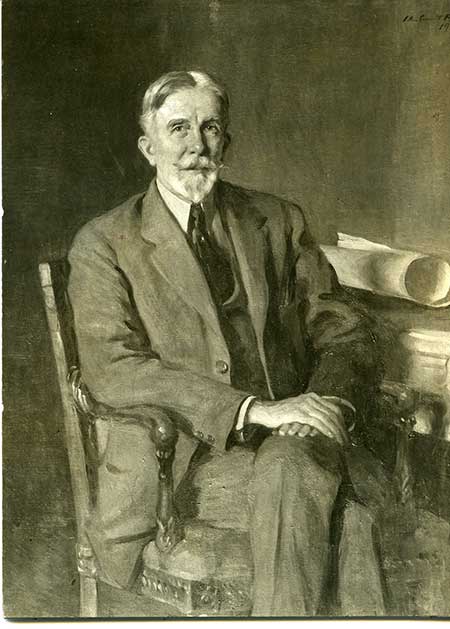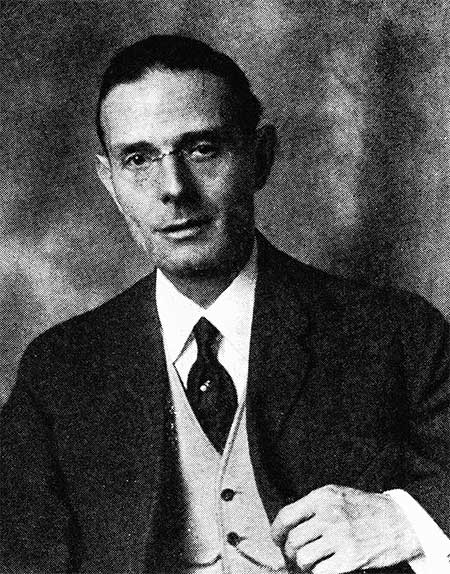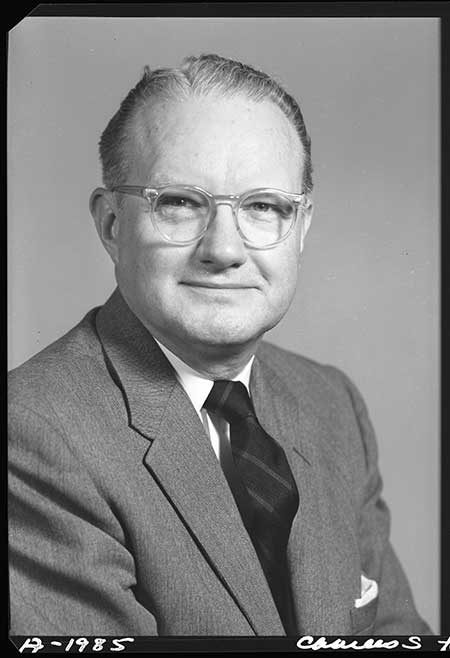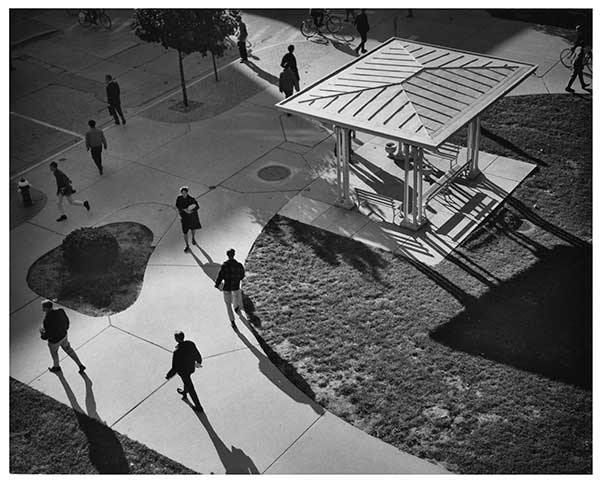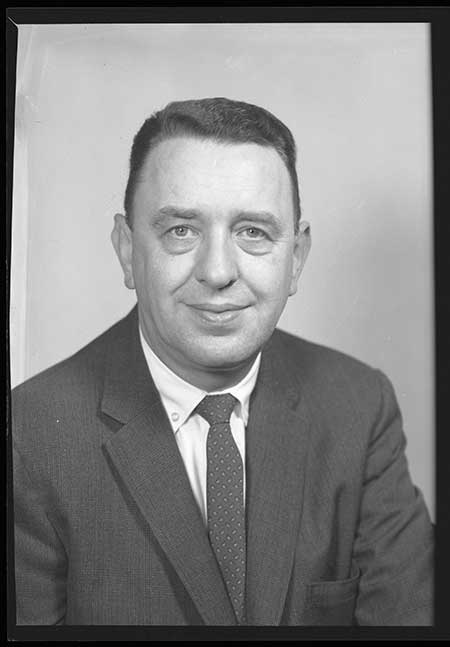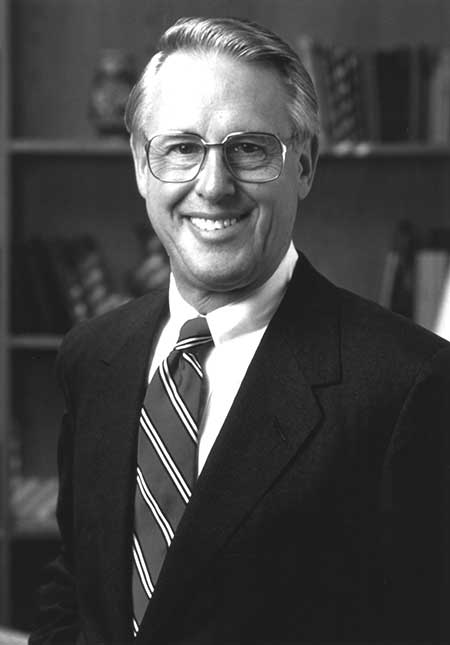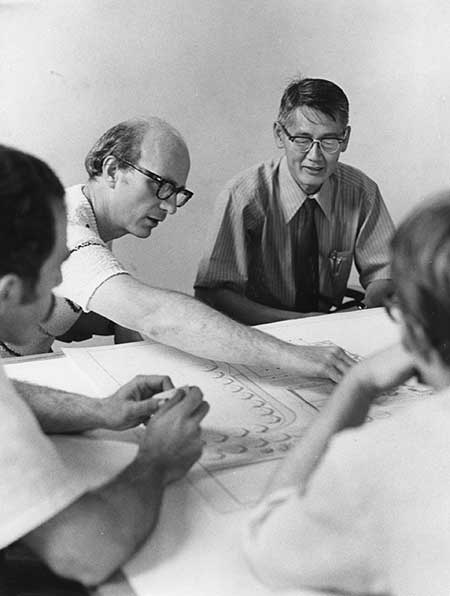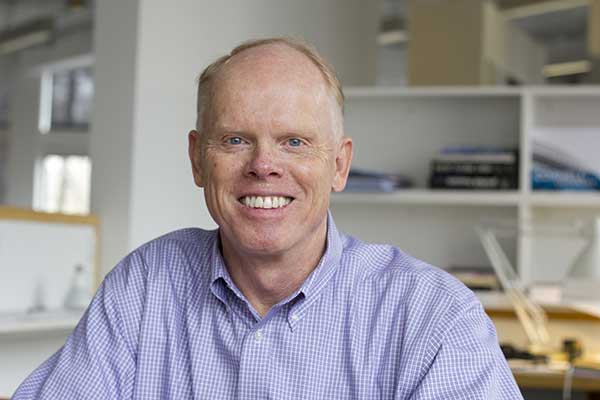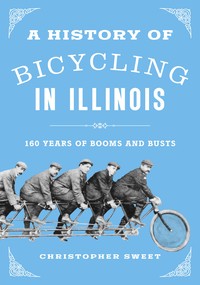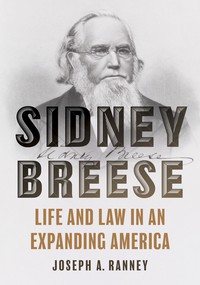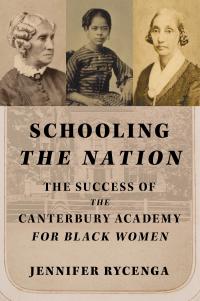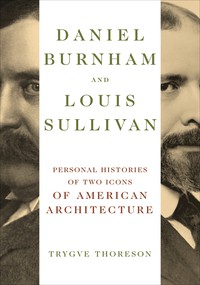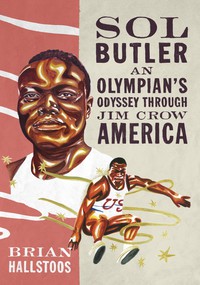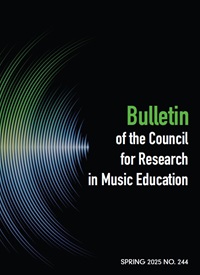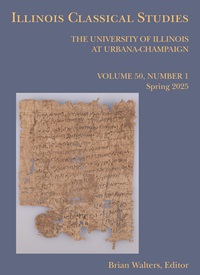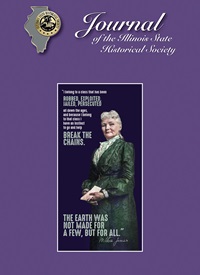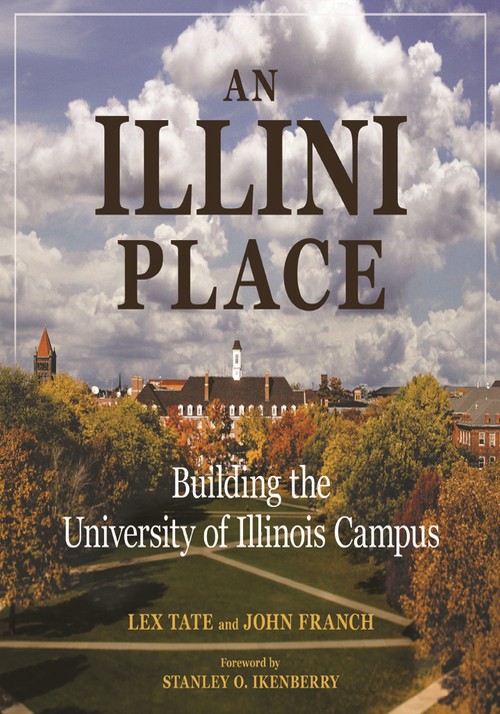
An Illini Place
About the Book
Why does the University of Illinois campus at Urbana-Champaign look as it does today? Drawing on a wealth of research and featuring more than one hundred color photographs, An Illini Place provides an engrossing and beautiful answer to that question. Lex Tate and John Franch trace the story of the university's evolution through its buildings. Oral histories, official reports, dedication programs, and developmental plans both practical and quixotic inform the story. The authors also provide special chapters on campus icons and on the buildings, arenas and other spaces made possible by donors and friends of the university.Adding to the experience is a web companion that includes profiles of the planners, architects, and presidents instrumental in the campus's growth, plus an illustrated inventory of current and former campus plans and buildings.
About the Author
Lex Tate is an adjunct lecturer in journalism and advertising at the University of Illinois at Urbana-Champaign, and served as associate director of the University of Illinois Office for University Relations. John Franch is the author of Robber Baron: The Life of Charles Tyson Yerkes.Reviews
"The colorful history of the University of Illinois (U of I) campus explored in this lavishly illustrated and pithy history. By virtue of its expert research, its thoughtful organization and writing, and its beautiful illustrations, it takes its place alongside other treatments of important institutions and landmarks of Illinois. The authors have achieved an admirable synthesis of treating the old and new, of the venerable structures (razed and remaining) and the modern construction and more recent architecture. An affectionate guidebook to this prairie cathedral and its plucky evolution." --Journal of the Illinois State Historical SocietyBlurbs
"Ours and every generation owes a debt to those who went before. An Illini Place enables us to grasp a sense of how it all began, the obstacles that were overcome, the opportunities that were seized, the people who made it happen, and the vision and values that sustained it."--from the Foreword by Stanley O. Ikenberry, President Emeritus of the University of Illinois
Supplemental Links
Visit the companion website to the bookSupplemental Material
Leading Men: Ten Central Figures in the Physical Development of the Campus
Lex Tate is an adjunct lecturer in journalism and advertising at the University of Illinois at Urbana-Champaign, and served as associate director of the University of Illinois Office for University Relations. John Franch is the author of Robber Baron: The Life of Charles Tyson Yerkes.
Appendix 1
List of Campus Plans
with University Regents/Presidents and Chancellors
This chronological inventory of campus plans from 1871 to 2015 at the University of Illinois at Urbana-Champaign broadly construes what a "plan" is.
It lists formal plans—some accepted, endorsed, or adopted/approved by the University of Illinois Board of Trustees, some not. It includes studies and sketches that found their way into larger plans, or didn't. It includes plans limited to athletics, the research park, traffic issues, or retail assessments of the near-campus neighborhoods.
The eighty-six plans cited represent fervid or barren periods of campus planning. Between January 19, 1912, and March 18, 1912, for example, six plans were developed, while there was no visible planning for fully fifteen years beginning in 1971.
Many of the plans are digitized and available to view on campus Web sites.
John Milton Gregory, University Regent (1868–1880)
1. Map of Farms, Buildings, Grounds, 1871
2. Plan of Illinois Industrial University's Arboretum Ornamental Grounds, 1871
Harald M. Hansen, Instructor in Architecture
3. Plan of Part of the Grounds of the Illinois Industrial University, 1877
4. Alignment, 1878
Selim Hobart Peabody, University Regent (1880–1891)
5. Plane Table Survey of University Grounds and Vicinity, 1885
Thomas Jonathan Burrill, University Regent (1891–1894)
6. Grounds of the University of Illinois, Surveyed and Drawn by the Civil Engineers Class of 1890, 1888
7. Grounds of the University of Illinois, 1894
Andrew Sloan Draper, University President (1894–1904)
8. An Overview of the University of Illinois, 1903
Edmund Janes James, University President (1904–1920)
9. Proposed Arrangement of the Grounds of the University of Illinois, C. H. Blackall, class of 1877; 1905
10. Grounds of the University, 1906
11. Bird's-Eye View Looking Northwest over a Possible Development of the College of Engineering, 1908
12. Development of Engineering College, University of Illinois, View toward N.W., part of a letter to President James from Dean Goss, College of Engineering, titled "Concerning Plans for the Development of the Buildings of the College of Engineering," dated September 26, 1908. Note: This perspective drawing is different from the Bird's-Eye View of the same year.
13. Proposed Campus Plan, University of Illinois, W. C. Zimmerman, state architect, December 1908
14. Study for the Development of the University of Illinois Campus, including "Curves Showing Relation of Floor Space and Cost of University Buildings to the Number of Students at Urbana," James M. White, supervising architect, and Archie M. Hubbard, associate architect, December 23, 1909; note: two versions.
15. "Our Campus Development," James M. White, class of 1890, supervising architect, Alumni Quarterly of the University of Illinois 5, no. 2 (April 1911)
16. Sketch for General Block Plan University of Illinois, C. H. Blackall, June 10, 1911 (drawing: L.D.T., December 20, 1912)
17. A Study of the Development of the Campus of the University of Illinois, James M. White, supervising architect, 1911
18. A 50-Year Plan for the Development of the Campus of the University of Illinois, July 1911, C. E. Noerenberg
19. Sketch for the Extension of the University of Illinois, C. H. Blackall, January 19, 1912
20. Study for the Extension of the University of Illinois, James M. White, supervising architect, February 2, 1912
21. Suggested Plan for the Development of the Campus University of Illinois, C. H. Blackall, February 2, 1912
22. A Study of the Campus Development of the University of Illinois, James M. White, supervising architect, March 8, 1912
23. Plan for the Campus Development of the University of Illinois, C. H. Blackall, March 13, 1912
24. Study of the Campus Development of the University of Illinois, an alternative suggested by F. M. Mann, March 18, 1912
25. Residence Location of Women Students (map), White/James folder, no specific date, September 4, 1912–August 26, 1913
26. A Study for the Development of the Campus of the University of Illinois, J. M. White, supervising architect, 1913
27. Study for the Development of the University of Illinois Campus, James M. White, Supervising Architect, with George E. Wright, December 1914
28. Plans for Gregory Memorial, James M. White, ca. November 1916
29. Sketch Plan Showing Rearrangement of Walks and Drives of Middle Campus University of Illinois Urbana, Ills. James M. White, supervising architect of the university, (drawing: G. W. M., no date). Lincoln Hall (1911) is shown; Tina Weedon Smith Memorial Hall (1917) is not. Placement on this list is estimated.
30. Study for the Development of the College of Engineering as Suggested by Dean W. F. M. Goss, University of Illinois, James M. White, supervising architect of the university of Illinois (initials "G. E. W." at bottom—George E. Wright), February 16, 1917
31. Birds'-Eye View, no date or artist credited; date/order on list derived by extant buildings (the Armory and the Stock Pavilion) and Smith Hall (1917) not being shown
32. Proposed University-Champaign Boulevard Link, Frank L. Venning for the Champaign Chamber of Commerce, 1917
33. A Study for the Development of the Campus of the College of Engineering, Prepared by the Staff of the Department of Architecture, part of The College of Engineering and Engineering Experiment Station of the University of Illinois: A Pictorial Description, University of Illinois Bulletin 16, no. 19, January 6, 1919
34. Suggestion for a Memorial Fountain to start the Orderly and Beautiful Development of our LA & S Quadrangle, "A hasty sketch by L.D. Tilton, '15," April 3, 1919
35. Plan for the Development of the Campus of the University of Illinois, James M. White, supervising architect, with L. D. Tilton, landscape architect, Office of the Supervising Architect, August 14, 1919
36. History of the Growth and Development of the Campus of the University of Illinois, Leon Deming Tilton, class of 1915, landscape architect, Office of the Supervising Architect, December 10, 1919
David Kinley, University President (1920–1930)
(Note: Acting President, when James was on leave)
37. A Study for a Campanile, University of Illinois, James M. White, supervising architect, 1920
38. Study for Quadrangle, University of Illinois, James M. White, supervising architect; no date: placement on list estimated
39. Plan for Campus Development, Urbana, 1920, Illinois, James M. White, supervising architect, Holabird & Roche, consulting architects
The Memorial Stadium, Holabird and Roche
A Campus Plan Study showing Stadium on Site First Proposed
40. Proposed Campus Development, University of Illinois, Urbana, James M. White, supervising architect; prepared by Stanton, Dillenback, and Stewart of the Department of Architecture, 1921
41. Plan for the Development of the Campus of the University of Illinois, Charles A. Platt, 1922
42. Study for the DEVELOPMENT OF THE CAMPUS of the UNIVERSITY OF ILLINOIS, James M. White, supervising architect, February 1923
43. Study for the Development of the Campus of the University of Illinois, James M. White, supervising architect, March 1924, revised January 1925
44. Plan for the Development of the Campus of the University of Illinois, supervising architect J. M. White, associate architect C. A. Platt; August 26, 1925, in ink; in pencil within the inner border, lower right corner is "3.31.26"
45. Study for L.A. & S. Quadrangle Development, University of Illinois at Urbana, James M. White, supervising architect, February 28, 1927
46. Plan for the Development of the Campus of the University of Illinois, James M. White, supervising architect; Charles A. Platt, consulting architect, 1927
47. Plan for the Development of the Campus of the University of Illinois, James M. White, supervising architect, Charles A. Platt, January 8, 1927; revised March 6, 1928.
48. University of Illinois General Planting Plan of the Campus, Ferruccio Vitale and Alfred Geiffert Jr., landscape architects; Charles A. Platt, architect; James M. White, supervising architect, May 17, 1929.
49. Study for the Development of the Campus, University of Illinois, James M. White (no title noted), December 1927; penciled below that date is a very faint "R. 10-9-29"
Harry Woodburn Chase, University President (1930–1933)
50. Block Plan of Campus, 1930
51. History of the Campus Plan of the University of Illinois, 1867–1930, Leon Deming Tilton, class of 1915, B.S., A.S.L.A. (for the period 1867–1919) and Thomas Edward O'Donnell, class of 1913, M.S., M.Arch., A.I.A. (for the period 1919–1930), 1930
52. Plan for the Development of the Campus of the University of Illinois, J. M. White, supervising architect, and C. A. Platt, associate architect, August 11, 1930
53. Proposed South Campus Development, "Museum & Proposed Agriculture" in pencil, August 4 [?], 1930, initials A. B. G. or C
54. Plan of Campus, University of Illinois, James M. White, supervising architect, October 1932
55. Key Plan. Campus Plan. University of Illinois, Vitale and Geiffert, landscape architects, 101 Park Avenue, New York, February 17, 1933
Arthur Hill Daniels, University President (1933–1933)
Arthur Cutts Willard, University President (1934–1946)
56. University, Urbana, Champaign View Looking Southeast, G. Fleming, 1937
57. Proposed Student Center, University of Illinois; Proposed Student Center for the University of Illinois Plot Plan "A"; Proposed Student Center University of Illinois Scheme "B"; and Proposed Student Center for the University of Illinois Scheme "C," Ernest L. Stouffer, physical plant superintendent, mid-1930s
58. Scheme A: Study for Campus Development, Biological Group East of Axis, no credit, but likely Ernest L. Stouffer, university architect, September 1937; Scheme B: Study for Campus Development, Biological Group West of Axis, likely Stouffer, September 1937
59. University of Illinois Campus-Location of Projects
60. Study for Campus Development, no credit, likely Ernest L. Stouffer, February 6, 1942
61. Proposed Post-War Building Projects on the Urbana Campus, authorized by physical plant architect Ernest Stouffer; May 8, 1944
62. Campus Plan—Urbana Campus, University of Illinois, no credit, likely Earnest L. Stouffer, December 5, 1944; Proposed Campus Development, no credit, likely Stouffer, December 6, 1944 (almost identical to December 5 plan)
George Dinsmore Stoddard, University President (1946–1953)
63. Proposed Campus Traffic Plan, Cecil Briggs of Gregg & Briggs, architectural consultants, 1950
Lloyd Morey, University President (1953–1955)
64. 20-Year Development Program of the Urbana Campus, University of Illinois, Physical Plant Department, Ernest L. Stouffer, architect, September 14, 1954
David Dodds Henry, University President (1955–1971)
65. Proposed Long-Range Program University of Illinois Campus Development Plan, Richardson, Severns and Associates, architects, 1956
66. Ten-Year Development Plan for the Urbana-Champaign Campus, Richardson, Severns, Scheeler & Associates, September 28, 1960
67. Biennium Plan—Fall Use, no artist credited, dated on back: "Physical Plant Dept. Received Sep 26, 1961"
John E. Corbally Jr., University President (1971–1979)
Jack Peltason, Chancellor (1967–1977)
Morton W. Weir (acting) (1977)
68. Provisional Long-Range Campus Planning Report, 1971–1980, Division of Planning and Construction, September 14, 1970
Stanley O. Ikenberry, University President (1979–1995)
William P. Gerberding, University President (1978–1979)
John E. Cribbet, Chancellor (1979–1984)
Thomas E. Everhart, Chancellor (1984–1987)
69. North Campus Master Plan, Sasaki Associates Inc., April 10, 1986 (with separate Executive Summary)
70. South Campus Master Plan, Sasaki Associates, September 11, 1986 (with separate Executive Summary)
Morton W. Weir, Chancellor (1987–1993)
71. Central Campus Master Plan, Sasaki Associates, October 27, 1989 (with separate executive summary)
Michael Aiken, Chancellor (1993–2001)
72. South Farms Master Plan, Sasaki Associates, September 1990
73. Historic Preservation Plan, Adopted in 1995, no date/no author on publication (see Illinois State Agency Historic Resources Preservation Act, PA 86-707)
James J. Stukel, University President (1995–2005)
74. University of Illinois Campus Master Plan, Executive Overview, Office for Capital Programs, revised June 6, 1996, as an update of the November 9, 1989, plan, officially dated October 1996
75. South Campus Master Plan Executive Summary, Sasaki Associates, June 1999 ("South Campus" is redefined)
76. Master Plan and Building Design, South Center of the Research Park at the University of Illinois, Fox/Atkins Development LLC, March 2, 2000
77. Campustown Revitalization Plan, Campustown Design Team, 2000
78. College of ACES (Agricultural, Consumer, and Environmental Sciences) Preliminary South Farms Phasing Plan, prepared by the College of Agricultural, Consumer, and Environmental Sciences, the Office for Project Planning and Facility Management, and the University of Illinois Office for Capital Programs, Champaign, March 2000, revised November 2001 (responds to 1999 plan, which responded to 1986 South Campus plan)
Nancy E. Cantor, Chancellor (2001–2004)
79. Infrastructure for Economic Development: A State of Illinois/University/Corporate Partnership, University Office for Capital Programs/University Office for Planning and Budgeting, February 2001, revised July 2001
80. University of Illinois Heritage Master Plan, Division of Intercollegiate Athletics: Conceptual Master Plan for the Athletic Campus, including Interpretive Elements, Site Development and Architecture, Isaksen-Glerum PC Architects, SmithGroupJJR, Gerard Hilferty & Associates Inc., May 22, 2001
81. Campus Parking Master Plan, Division of Campus Parking and Transportation, Office for Project Planning and Facility Management, Carl Walker Consultant, May 23, 2001
82. Master Plan: University of Illinois Arboretum, Sasaki Associates Inc., June 2001
83. South Campus Master Plan Update, prepared for the Board of Trustees of the University of Illinois by SmithGroupJJR, July 2001 (north boundary of "South Campus" is now St. Mary's Road; south boundary is Windsor Road)
Richard Herman, Chancellor (2004–2009)
84. A Vision for Growth: Research Park/University of Illinois at Urbana-Champaign, Master Plan, for the Office of the Vice Chancellor for Research and Fox/Atkins Development LLC, prepared by CANNONDESIGN, 2004, updated February 2005
B. Joseph White, University President (2005–2009)
85. Retail Assessment of the University of Illinois at Urbana-Champaign, Jones Lang LaSalle IP Inc., May 2004
86. University of Illinois at Urbana-Champaign Campus Master Plan Update, Full Technical Report, Sasaki Associates Inc., University Office of Facilities Planning and Programs, and University of Illinois at Urbana-Champaign Facilities and Services, March 2007 (with separate Executive Summary, same date)
Stanley O. Ikenberry, University President (interim October–December 2009, president 2010)
Michael J. Hogan, University President (2010–2012)
Robert A. Easter, Chancellor (2009–2011 interim)
Phyllis M. Wise, Chancellor (2011–2015)
Robert A. Easter, University President (2012–2015)
Timothy L. Killeen, University President (2015-present)
Appendix 2
An Inventory of Buildings
This inventory, while not comprehensive, includes all major or otherwise important buildings located at the Urbana-Champaign campus.
By design it excludes most parking structures; warehouses, sheds, and service buildings (example: Duplicating/Quick Copy Building); student cultural centers; former houses converted to academic or administrative uses; all off-campus Extension and College of ACES structures/facilities, such as the St. Charles Horticulture Center; and all university-owned housing. Exceptions include historic buildings, such as Mumford House and Taft House, and dual-purpose structures such as Parking Garage F-29 on the east campus that contains a fully equipped and manned fire substation.
The campus has more than 22.2 million square feet of built space; some 13.5 million square feet is useable built space (as of 2015) counted as "assignable," which includes classrooms, labs, lounges and offices, housing, recreation, and so on, but excludes lavatories, corridors and stairwells, atriums, mechanical rooms, and the like. The inventory uses gsf for "gross square feet" and nasf for "net assignable square feet."
The campus has 647 total buildings spread over 7.1 square miles covering 4,552 acres.
This inventory of buildings originated with a database in Facilities and Services; it was corroborated, expanded, and corrected with additional research into the official minutes/transactions of the University Board of Trustees, annual reports of the physical plant, and other building files housed in University Archives and Facilities and Services. Campus records differ slightly from place to place and year to year; this inventory reflects the authors' best judgment as to the validity of any single piece of information.
The authors and editors of the inventory are John Franch, Lex Tate, former U of I architecture graduate student Daniel Audette, and former U of I journalism student Marie Wilson. Melvyn Skvarla, campus historic preservation officer, also contributed.
Listed, in the following order, are: current name; date of build; cost at time; original name and renames (if applicable); architects of record; style; additions and/or major renovations (with date, cost, and architects); and square footage (nasf and gross).
Abbott Power Plant: 1940, $1.7 million. Ernest L. Stouffer of University Architects Office; Georgian revival/modern. Additions: turbine unit 3, boiler unit 4, 1947, $1 million, Sargent & Lundy; turbine unit 4, 1951, $880,000, Sargent & Lundy; turbine unit 5, 1955, $850,000, Sargent & Lundy; boiler unit 5, 1957, $1.75 million, Sargent & Lundy; turbine unit 6, 1958, $1.85 million, Sargent & Lundy; boiler unit 6, turbine unit 7, 1962, $4 million, Sargent & Lundy; boiler unit 7, 1963, $2 million, Sargent & Lundy; conversion to oil-fired boilers, 1971–73, $3.4 million, Sargent & Lundy; reconversion to coal-fired boilers and installation of precipitator and scrubber, 1987–88, $21.9 million, PRC Consoer Townsend Inc.; renovation, 2005, $60 million. Total 8,308 nasf, 194,900 gross. The plant was named for William Lamont Abbott, an 1884 graduate recognized as the "dean of the electric light and power industry" by the Washington Award Commission.
ACES Library: 2001, $21 million. Phillips Swager Associates and Woollen, Molzan & Partners Inc.; modern Georgian. Total 51,710 nasf, 82,742 gross. The Funk ACES Library was dedicated in 2001 to the family of Isaac and Cassandra Funk, farmers and early settlers of McLean County.
Activities and Recreation Center: 1971, $11.3 million. Intramural Physical Education Building, 1971–2008; Activities and Recreation Center, 2008–present. Holabird & Root; modern. Renovation and expansion, 2005–08, $82.7 million as a combined project with the renovation of Campus Recreation Center-East, VOA Associates. Total 174,021 nasf, 340,000 gross. This building is supported by student fees.
Admissions and Records Building: 1996, $6.7 million. Isaksen-Glerum PC Architects; modern Georgian. Total 18,530 nasf, 32,931 gross.
Advanced Computation Building: 1971, $1.08 million. Advanced Computation Building, 1971–79; Astronomy Building, 1979–90; Advanced Computation Building, 1990–present. Clark, Altay and Associates; modern. Remodeling: 1985, $1 million, Isaksen & Matzdorff; 1991, $2.7 million, Isaksen, Matzdorff, Glerum; addition, 2001, $6 million, Holabird & Root. Total 22,628 nasf, 45,346 gross.
Aeronautical Engineering Laboratory A: 1913, $25,000. Locomotive Testing Lab, 1913–44; Aeronautical Engineering Laboratory, 1944–50; Aeronautical Engineering Lab A, 1950–present. W.C. Zimmerman; industrial. Total 8,905 nasf, 10,443 gross. This laboratory was constructed as part of the building program for the Department of Railroad Engineering; others in this project were Aeronautical Engineering Lab B and the Transportation Building.
Agricultural Bioprocess Laboratory: 1925, $200,000. DairyManufactures Building, 1925–86, Agricultural Bioprocess Laboratory, 1986–present. Charles A. Platt and James M. White; Georgian revival. Renovation: 1988, $1.2 million, Robert P. Simon Associates with Bradley, Likins, Dillow, Drayton. Total 14,963 nasf, 24,281 gross. This is the least significant Charles A. Platt building on campus. Connected to the Integrated Bioprocessing Research Laboratory in 2016.
Agricultural Engineering Sciences Building: 1983, $11.2 million. Helmut Jahn of Murphy/Jahn; postmodern. Total 57,247 nasf, 103,567 gross. This building has two lawn sculptures: Auroral by Bruce White on the west and Agronaut III by Edward McCullough on the north.
Alice Campbell Alumni Center: 2006, $16.1 million. BLDD Architects; modern Georgian. Total 21,966 nasf, 63,003 gross.
Altgeld Hall: 1896, $160,000. Library, 1896–26; Law Building, 1926–40; Altgeld Hall, 1940–present. Nathan C. Ricker and James M. White; Romanesque revival. Additions: 1914, $34,739; 1919; $73,000; 1925, $90,000; all James M. White. Remodeling: 1927, $35,000, James M. White; addition/remodeling, 1957, $494,000; bell installation, 1920, $14,000, McShane Bell Foundry Company. Total 44,024 nasf, 79,720 gross. This is one of a set of buildings at Illinois state universities named for Gov. John Peter Altgeld and is the only Altgeld building not Tudor-Gothic.
Animal Sciences Laboratory: 1952, $2.5 million. Shaw, Naess & Murphy; modern. Addition/remodeling: 1991–93, $17.5 million, Phillips Swager Associates. Total 80,746 nasf, 138,490 gross. A stainless steel sculpture of domesticated animals titled Origins by 1971 alumnus Preston Jackson decorates the south exterior entryway.
Architecture Annex: 1907, $33,000. Farm Mechanics Building, 1907–32; Agricultural Engineering Building, 1932–98; Art-East Annex-Studio 1, 1998–2014; Architecture Annex, 2014–present. Seth Justin Temple and James M. White; Jacobean revival. Additions: 1911, $8,500; 1924, $15,000; 1928, $5,619; all James M. White. Total 34,317 nasf, 47,836 gross. The building had a penthouse until the 1911 addition.
Architecture Building: 1928, $493,000. Charles A. Platt and James M. White; Georgian revival. Total 48,037 nasf, 73,846 gross. The Architecture Building was the long-time headquarters of the School of Architecture, the second-oldest in the nation.
Armory: 1914, $229,119. W. C. Zimmerman; Georgian revival. Additions: outer section of classrooms, 1925–27, $425,000, Charles A. Platt and James M. White; east addition, 1962, $378,000, Clark, Daily & Dietz; west addition/remodeling: 1963, $962,263, Clark, Daily & Dietz. Total, 141,556 nasf, 220,863 gross. As many as fifteen hundred members of the Student Army Training Corps used the Armory as a barracks during World War I.
Art and Design Building: 1961, $1.95 million. Fine and Applied Arts Building, 1961–78; Art and Design Building, 1978–present. Ambrose M. Richardson & Associates with Mittelbusher & Tourtelot; modern. Total 47,777 nasf, 75,077 gross. This was one of the buildings Richardson was contracted to design after resigning from a faculty position in the mid-1950s to start a private practice.
Astronomy Building: 1990, $2.25 million. Bradley, Likins, Dillow and Drayton (now BLDD); modern. Total 12,565 nasf, 19,169 gross. The board of trustees approved a new building for the Astronomy Department, so the National Center for Supercomputing Applications could use the original Astronomy Building.
Atkins Tennis Center/Khan Outdoor Tennis Complex: Atkins: 1991, $5.2 million. Unteed, Scaggs, Nelson, Ltd.; modern. Kahn addition: interior renovation and twelve outdoor courts, 2007–09, $6.4 million as a combined project with Eichelberger Field expansion; Bailey Edward Design. Total 49,516 nasf, 61,002 gross.
Atmospheric Sciences Building: 1987, $1 million. Rettberg-Gruber Architects Inc.; modern. Total 7,379 nasf, 11,328 gross.
Beckman Institute: 1989, $52 million. Alternate name: Beckman Institute for Advanced Science and Technology. Ralph Youngren of Smith, Hinchman & Grylls Associates; modern neo-Georgian. Total 187,090 nasf, 329,192 gross. This is the second-largest building on campus, after the Main Library. It was built on the site of the university's first building, demolished in 1881, and Illinois Field; the institute terminates the campus's north-south axis at the north.
Bevier Hall: 1956, $3.85 million. Naess and Murphy; modern. Total 91,357 nasf, 157,191 gross. This building was named for Isabel Bevier, head of the Home Economics Department from 1900 to 1921.
Bielfeldt Athletic Administration Building: 1996, $7.2 million. OWP&P; modern. Total 24,448 nasf, 40,084 gross.
Burnsides Research Laboratory: 1963, $900,000. Glenn G. Frazier & Associates; modern. Total 13,544 nasf, 23,943 gross. Ethel Burnsides, a registered nurse from Paris, Illinois, who inherited a fortune in oil and farmland, donated $250,000 for the lab and put aside $25,000 to $30,000 per year for its upkeep. Her generosity began with a $6,000 donation to U of I professor Fred Kummerow through the Illinois Heart Association. The endowment still operates; Kummerow continued to do research past the age of one hundred.
Burrill Hall: 1959, $4.7 million. Holabird & Root; modern. Addition: 1972, $1.9 million, Fugard, Orth & Associates; annex, 1986, $750,000, Rettberg-Gruber. Total 105,297 nasf, 178,640 gross. This building was named for botanist Thomas Jonathan Burrill, who was also U of I president (1891–1894).
Business Instructional Facility: 2008, $62 million. Phillips Swager Associates with Cesar Pelli & Associates; modern. Total 82,058 nasf, 162,250 gross. This building was designed by Argentinean-born alumnus Cesar Pelli and his son, Rafael, to meet Leadership in Energy and Environmental Design standards for energy conservation and is the first LEED building on campus.
Campbell Hall for Public Telecommunication: 1999, $9.6 million. VOA Associates Architects; modern. Total 25,411 nasf, 40,731 gross. Richmond Studio, a broadcast journalism teaching studio, is part of the public telecommunications building, which houses WILL radio and TV, now called Illinois Public Media.
Campus Recreation Center—East: 1989, $1.6 million. Satellite Recreation Facility, 1989–91; Campus Recreation Center—East, 1991–present. Isaksen, Matzdorff, Glerum & Associates; modern. Additions: 1992, $660,000, Isaksen, Matzdorff, Glerum & Associates; 2003–05, $82.7 million as a combined project with the renovation of the Activities and Recreation Center, VOA Associates. Total 73,843 nasf, 105,372 gross. The aquatic facility at CRCE includes a 435-square-foot "wet meeting room."
Ceramics Building: 1916, $132,500. James M. White and C. L. Gustafson with James B. Dibelka; Renaissance revival. Total 30,887 nasf, 54,017 gross. The Ceramics Building was paid for from the proceeds of a mill tax appropriated by the 49th General Assembly.
Ceramics Kiln House: 1912, $25,000 (includes cost of Mining Laboratory). W. C. Zimmerman. Total 8,513 nasf, 15,703 gross. Illinois was the fourth state to support a Ceramics Department, following New Jersey, New York, and Ohio.
Chemical and Life Sciences Laboratory: 1996, $61 million. Ralph Johnson of Perkins & Will; modern. Total 105,221 nasf, 231,376 gross. A sky bridge crosses California Street and connects a wing for the Department of Chemistry with another for the Department of Molecular and Cellular Biology.
Chemistry Annex: 1930, $335,000. James M. White; Georgian/art deco. Total 30,239 nasf, 42,466 gross. This building is linked to Davenport Hall. A $24.9 million addition is expected to be completed in 2016.
Chez Family Foundation Center for Wounded Veterans in Higher Education: 2015, $14 million. LCM Architects. Total 30,183 nasf, 32,000 gross. The Chez Family Foundation contributed $6 million for this project.
Child Development Laboratory: 1956, $595,000. Naess and Murphy; modern. Total 19,172 nasf, 29,745 gross.
Children's Research Center: 1967, $1.2 million. Richardson, Severns, Scheeler & Associates; modern. Total 25,814 nasf, 46,806 gross.
Christopher Hall: 2006, $9.7 million. Booth Hansen; modern. Total 13,298 nasf, 34,703 gross. The building was made possible by a gift from Doris Kelley Christopher, 1967 graduate who founded The Pampered Chef, and her husband, Jay W. Christopher.
Civil Engineering Hydrosystems Laboratory: 1970, $4.15 million. Richardson, Severns, Scheeler & Associates, with Berger, Kelley, Unteed & Associates; modern. Total 21,091 nasf, 31,870 gross. This building was financed by the Illinois Building Authority and a grant from the National Science Foundation; it was part of a phased development of civil engineering buildings begun in 1962.
Coble Hall: 1913, $65,000. YWCA (McKinley Hall) 1913–66, sold to U of I and in 1969 became Coble Hall. Renaissance revival. Addition: 1924. Total 18,011 nasf, 28,176 gross. U.S. Sen. William McKinley contributed $35,000 ($15,000 as loan) to build the YWCA building, which was across the street from the YMCA (now Illini Hall), for which McKinley donated $30,000.
College of Fine and Applied Arts Design Research Laboratory: 1968. Building Research Council Building, 1968–2014; College of Fine and Applied Arts Design Research Laboratory, 2014–present. Paul E. Dixon and faculty members known as Small Homes Council Architects; modern. Total 5,820 nasf, 8,153 gross. The original Small Homes Council began in 1944 and worked on meeting postwar demand for affordable housing.
College of Fine and Applied Arts Performing Arts Annex: 1905, $17,000. Agronomy Field Laboratory, 1905–32; Agronomy Storehouse, 1932–67; Forest Science Laboratory, 1967–98; Art—East Annex—Studio 2, 1998–2014; College of Fine and Applied Arts Performing Arts Annex, 2014–present. Seth Justin Temple and James M. White; Jacobean revival. Total 7,891 nasf, 12,168 gross.
Colonel Wolfe School: 1905, $14,943. Spencer & Temple; Georgian revival. Remodeling, 1966, $198,000, Smith, Seaton & Olach. Total 9,992 nasf, 16,308 gross. The university acquired the building from the Champaign School District in 1965; it is now used by the College of Education.
Computing Applications Building: 1950, $300,000. Water Resources Building, 1950–86; Computing Applications Building, 1986–present. Royer & Davis; modern. West addition: 1965, $725,000, Berger, Kelley, Unteed & Associates; remodeling: 1986, $967,900, Isaksen & Matzdorff. Total 25,224 nasf, 42,529 gross. This is one of three buildings on campus used by the National Center for Supercomputing Applications.
Coordinated Science Laboratory: 1992, $15.42 million. Computer and Systems Research Laboratory, 1992–2001; Coordinated Science Laboratory, 2001–present. VOA Associates with Smith, Hinchman & Grylls Associates; modern neo-Georgian. Total 77,875 nasf, 124,008 gross. The state provided $10 million for this building; the College of Engineering financed the rest.
Dairy Experimental Round Barns: 1907, 1908, 1910, 1911, 1912, and 1913. Barns #1 and #2 are each sixty feet in diameter on two oversized stories; Barn #3 is seventy feet in diameter on two stories with basement and attached rectangular wing. Barn #1 estimated to cost $3,600 in Agriculture Experiment Station Bulletin No. 143. Wilber J. Fraser, head of the Department of Dairy Husbandry from 1902 to 1913, believed the shape of round barns made them low maintenance, labor efficient, and better able to withstand prairie winds. He, James M. White, and Kell and Bernard are credited as designers and engineers.
Dance Studio: 1988, $500,000. Architectural Spectrum; total 5,333 nasf, 7,592 gross.
Davenport Hall: 1900, $165,000. Agricultural Building, 1900–46; Davenport Hall 1946–present. Joseph C. Llewellyn; Renaissance classical. Minor additions: 1908, 1912, 1916, $25,325 total, James M. White. Total 60,027 nasf, 110,943 gross. On January 26, 1916, the Illinois Agriculture Association was founded in this building.
David Kinley Hall: 1925, $500,000. New Commerce Building, 1925–46; David Kinley Hall, 1946–present. Charles A. Platt and James M. White; Georgian revival. Total 48,333 nasf, 80,773 gross. Named for David Kinley, president of the university from 1920 to 1930.
Demirjian Indoor Golf Facility and Lauritsen/Wohlers Outdoor Practice Facility: Demirjian: 2007, $5.07 million. RATIO Architects; modern. Total 14,050 nasf, 14,150 gross. Lauritsen/Wohlers: 2015. Jeff Brauer, golf course architect. Twenty-four acres of target fairways, greens, bunkers.
Digital Computer Lab: 1958, $380,000. A. Epstein and Sons; modern. Additions: 1964, $476,000, A. Epstein and Sons; 1966, $1.5 million, A. Epstein and Sons; 1990, $18.5 million, Holabird & Root. Renovation: 1991, $1 million, Holabird & Root. Total 109,375 nasf, 195,280 gross.
Early Child Development Laboratory: 2003, $5.2 million overall project, $2.04 million for building. BLDD Architects; modern. Total 15,152 nasf, 23,182 gross.
Education Building: 1964, $3.3 million. A. Richard Williams with Lundeen and Hilfinger; modern. Total 52,798 nasf, 91,952 gross. The building's red brick and limestone tie it to the Georgian revival buildings nearby, an architectural style Williams broadly criticized.
Eichelberger Field and Martin Softball Complex: Eichelberger: 2001, $2 million. JJR Incorporated; Martin Complex addition: $1 million for permanent press box, locker rooms, clubhouse, 2007–09, as part of $6.4 million in a combined project with expansion of the Atkins Tennis Center, Bailey Edward Design.
Electrical and Computer Engineering Building: 2014, $95 million. SmithGroupJJR; modern. Total 121,060 nasf, 230,000 gross. Built as "net zero" with an array of photovoltaic cells and a chilled-beam system to minimize its carbon footprint.
Engineering Hall: 1894, $162,278. Engineering Hall, 1894–49; Civil Engineering Hall, 1949–65; Engineering Hall, 1965–present. George Wesley Bullard; Renaissance revival. Renovation, 1998–2000, $15.3 million, A. Epstein and Sons International Inc. Total 44,566 nasf, 93,189 gross. Engineering Hall was designed and built by Bullard, 1882 graduate, who won a design contest open only to university students and graduates.
Engineering Sciences Building: 1963, $202,000. Coordinated Science Laboratory, 1963–93; Engineering Sciences Building, 1993–present. Kruegel, Healy & Moore; modern. Additions: 1965, $460,000, Kruegel, Healy & Moore; 1967, $1.1 million, Kruegel, Healy & Moore. Renovation: 1995, $3.5 million, Henneman, Raufeisen and Associates. Total 60,043 nasf, 107,774 gross. NASA funded the second phase of the building's construction.
English Building: 1905, $80,000. Woman's Building, 1905–46; Bevier Hall, 1946–56; English Building, 1956–present. McKim, Mead and White; neoclassical/Georgian revival. Additions: east addition 1, 1913, $136,308, W. C. Zimmerman; east addition 2, 1924, $85,000, James M. White. Remodeling: 1981, $1.5 million, Bazzell-Phillips & Associates; 1991, $1.9 million, Rettberg-Gruber. Total 67,894 nasf, 121,013 gross.
Everitt Laboratory: 1949, $1.6 million. Electrical Engineering Building, 1949–87; Everitt Electrical and Computer Engineering Lab, 1987–present. Graham, Anderson, Probst & White; modern Georgian. Addition: fourth floor, 1963, $1.3 million, Graham, Anderson, Probst & White. Total 72,684 nasf, 122,205 gross. Major remodel and addition: 2016–18, $55 million, architect-engineer BSA LifeStructures.
Flagg Hall: 1953, $1.2 million. Was called Flagg House. Skidmore, Owings & Merrill; modern. Total 29,521 nasf, 46,933 gross. Flagg Hall was named for Willard Cutting Flagg, the first secretary of the board of trustees 1867–78, a Yale graduate and horticulturist.
Foellinger Auditorium: 1907, $135,788. University Auditorium, 1907–85; Foellinger Auditorium, 1985–present. Clarence H. Blackall; Beaux-Arts classical. Repairs and new seating, 1937–38, $55,000. Remodeling, 1953, $111,000. Renovation and expansion, 1985, $4.7 million, Walker Johnson of Holabird & Root. Total 27,607 nasf, 51,766 gross. The siting of the building created the main Quadrangle and set the north-south axis of the campus.
Foreign Languages Building: 1971, $5.2 million. Holabird & Root; modern. Total 68,451 nasf, 117,715 gross. The Natural History Survey Lab and the Agronomy annex and greenhouse were demolished to make room for this last building on the central Quad.
Fred H. Turner Student Services Building: 1963, $1.35 million. Student Services Center, 1963–79; Fred H. Turner Student Services Building, 1979–present (renamed in 1979 for Fred H. Turner, dean of students 1943–66). Perkins & Will; modern. Total 24,410 nasf, 41,265 gross.
Freer Hall: 1931, $311,000. Woman's Gymnasium, 1931–68; Louise Freer Hall, 1968–present. Charles A. Platt and James M. White; Georgian revival. Addition/pool, 1971, $1.9 million, Spangler, Beall, Salogga & Bradley associated with John F. Sweetnam. Total 53,214 nasf, 93,932 gross; U of I trustees in early 2015 approved $14 million project to fill in the pool and renovate the addition to create 19,780 gross square feet. LCM Architects. The building was named for Louise Freer, head of the women's physical education department for thirty-four years.
Geological Survey Laboratory: 1940, $95,000. State Supervising Architect C. Herrick Hammond; Georgian revival. Total 7,984 nasf, 12,938 gross.
Grainger Engineering Library Information Center: 1994, $34 million. Evans Woollen of Woollen, Molzan and Partners Inc.; modern Georgian/revival. Total 88,317 nasf, 126,838 gross.
Gregory Hall: 1940, $885,711. Ernest L. Stouffer of University Architects Office; Georgian revival. Total 68,103 nasf, 110,757 gross. Named for John Milton Gregory, the university's first president (1867–1880).
Harding Band Building: 1958, $870,000. Band Building, 1958–74; Albert A. Harding Band Building, 1974–present. Ernest L. Stouffer of University Architects Office; modern with Georgian revival details. Total 15,144 nasf, 27,840 gross. The Harding Band Building was the first designed specifically for use by a university band department.
Harker Hall: 1878, $40,000. Chemical Laboratory 1878–1902; Law Building, 1902–27; Old Law Building, 1927–29; Entomology Building, 1929–41; Oliver A. Harker Hall, 1941–present. Nathan Ricker and John M. Van Osdel; Second Empire. Rebuilt after lightning strike, 1896, $9,180, James M. White; renovated for College of Law, 1902, $8,000, James M. White; remodeled for Entomology Department, 1927, James M. White; remodeled, 1950, $4,650; restored for use by the University of Illinois Foundation, 1993, $5.5 million, Walker Johnson of Holabird & Root with BLDD Architects. Total 21,395 nasf, 33,189 gross.
Henry Administration Building: 1912, $101,326. College of Commerce and Business Administration, 1912–26; Administration Building, 1926–87; David Dodds Henry Administration Building, 1987–present. W. C. Zimmerman; Chicago commercial. Additions: west addition, 1915, $160,000, James B. Dibelka; south addition, 1964, $1.8 million, Spangler, Beall, Salogga & Bradley associated with John F. Sweetnam. Total 81,686 nasf, 164,173 gross. This building houses the offices of the president, other executive officers, and the board of trustees, plus classrooms; dedicated to university's twelfth president.
Horticulture Field Laboratory: 1923, $240,000. Holabird & Roche; Georgian revival. Total 30,397 nasf, 46,557 gross. Now used by the Student Life and Culture Archival Program of the University Archives and the Public Service Archaeology and Architecture Program, the building fronts a meadow once planned as gardens and now planted as natural prairie. It is just east of the President's House and gardens.
Huff Hall: 1926, $515,000. Men's Gymnasium or New Gymnasium, 1926–37; George Huff Gymnasium, 1937–84; George Huff Hall, 1984–present. Charles A. Platt and James M. White; Georgian revival. South addition: 1927, $225,000, Charles A. Platt and James M. White; north addition Khan annex: $15 million, 2009–12, RATIO Architects. Total 100,324 nasf, 160,668 gross. Huff Hall was the home of the varsity men's basketball team from 1926 to 1963.
Ice Arena: 1931, $338,000. Holabird & Root; Georgian revival. Renovation: 1987, $2.7 million, Ferry and Walton Architects; new ceiling and floor, 1997, $1.25 million, Henneman, Raufeisen and Associates. Total 31,816 nasf, 51,681 gross. The Ice Arena was used by the Chicago Blackhawks as a training facility in the 1930s and 1940s. It also was used as a publishing house for Time Inc. (1943–45) and now is part of Campus Recreation.
Illini Hall: 1908, $107,500 (cost of building only: $78,000). YMCA Building, 1908–17; Union Building, 1919–41; Illini Hall 1941–present. Elizabethan revival. Total 23,698 nasf, 40,820 gross. Illini Hall adds to the "edge" effect along Wright Street in which an architecturally mixed array of buildings is set close to the sidewalk.
Illini Union: 1941, $1.5 million. Howard Cheney with Ernest Stouffer and John C. Leavell; Georgian revival. Additions: south, 1962, $6.9 million, Jameson and Harrison with Eggers & Higgins; enclosed south patio to create the Courtyard Café, 1993, $2.6 million, Severns, Reid & Associates. Total 169,343 nasf, 304,971 gross. The Illini Union houses student activities space, food and entertainment areas, and a small hotel.
Illini Union Bookstore: 1994, $13.8 million. Preconstruction name: Campus Bookstore; Illini Union Bookstore, 1994–present. Percy "Rebel" Roberts of VOA Associates Inc.; modern. Total 64,115 nasf, 96,407 gross.
Illinois Field: baseball: 1987, $1.9 million; Heery-FABRAP; clubhouse addition, $800,000. The fenced ball diamond stands on Florida Avenue; it replaced venerable Illinois Field on University Avenue, site of the Beckman Institute.
Illinois Simulator Laboratory, Beckman Institute: 1997, $2.26 million. Ralph Hahn and Associates. Total 11,302 nasf, 15,427 gross. The center began as the Biomedical Magnetic Resonance Laboratory, founded by Paul Lauterbur, who won the 2003 Nobel Prize in medicine for inventing magnetic resonance imaging (MRI).
Institute for Genomic Biology, Carl R. Woese: 2006, $75 million. CUH2A; modern Georgian revival. Total 102,268 nasf, 264,866 gross. Each research area is housed in a thematic lab module: biology, bioengineering or chemistry, and bioinformatics. The building was renamed the Carl R. Woese Institute for Genomic Biology in 2014.
Institute of Government and Public Affairs: 1992, $1.8 million. Bradley, Likins, Dillow, Drayton; modern Georgian. Total 7,540 nasf, 13,526 gross. Faculty at the institute, drawn from all three campuses, explore issues of state and national importance, such as tax policy, government, and health.
Integrated Bioprocessing Research Laboratory: Expected 2017–18, $24.9 million. Bailey Edward Design, modern. Total [est.] 30,000, nasf, 42,231 gross. Connected to the east side of the Agricultural Bioprocessing Laboratory, a modest 1925 Platt building. Originally slated for completion in 2016, construction on this lab was delayed more than a year when state funds dried up. Cost expected to rise.
International Studies Building: 1991, $3.4 million. Bradley, Likins, Dillow, Drayton; modern Georgian. Total 14,141 nasf, 24,473 gross.
Irwin Academic Services Center: 1920, $40,000. Sigma Pi fraternity house, 1920–74; Kappa Alpha Psi fraternity house, 1974–76; Sigma Kappa sorority house, 1976–79; Delta Kappa Epsilon fraternity house, 1980–84; Kappa Alpha Psi fraternity house, 1984–92; Irwin Academic Services Center, 1997–present. Joseph William Royer; Tudor revival. Addition, 1961; remodeling, 1996–97, $1.8 million, Rettberg-Gruber Architects; north addition, 2007, $4.6 million, RATIO Architects. Total 7,406 nasf, 13,633 gross. This building was designed by Royer as a fraternity house. Other local Tudor revival buildings by Royer include the Lincoln Lodge and Hotel and the Alpha Rho Chi fraternity house.
Richard D. and Anne Marie Irwin Doctoral Study Hall (Surveying Building): 1905, $18,000; Horticulture Field Lab/Horticulture Service Building, 1905–24; Surveying Building, 1924–2014. Seth Justin Temple and James M. White; Jacobean revival. Remodeling, 1924, $7,500, James M. White. Total 7,969 nasf, 10,550 gross; renovation, 2016–17, $4 million (gift funds).
Irwin Indoor Football Facility: 2000, $12.5 million.RATIO Architects and Severns Reid & Associates/Isaksen Glerum PC; modern. Total 66,183 nasf, 75,931 gross. This building, which is twenty yards short of a full football field, replaced an inflatable bubble erected over Memorial Stadium's field in the winter to provide space for indoor practice.
Japan House: 1998, $675,000. Jack Baker with Isaksen-Glerum PC Architects; Japanese. Total 2,044 nasf, 3,224 gross. Funded primarily through private donations, Japan House replaced an old residence just west of Lincoln Avenue in central campus and is a unique setting for teaching Japanese culture.
Kenney Gymnasium: 1901, $50,000. Men's Gymnasium, 1901–25; Men's Old Gymnasium 1925–73; H. E. Kenney Gymnasium, 1973–present. Nelson Strong Spencer; Renaissance revival. Remodeling: 1914, 1916, 1924. Total 37,582 nasf, 49,072 gross. Kenney Gymnasium was the first gym building on campus.
Kenney Gymnasium Annex:1890, $16,000. Military Hall, 1890–1899; Armory, 1899–1915; Gymnasium Annex, 1915–1973; Kenney Gymnasium Annex, 1973–present. Nathan Ricker; Romanesque revival. Reconstruction, 1914, 1916: $7,947, James M. White; addition, 1918, $18,000, James M. White; connection to Kenney Gymnasium, 1924, $125,000, James M. White. Total 19,395 nasf, 28,078 gross. The Kenney Gym Annex was the first home of the university's varsity basketball team and other varsity athletics.
Krannert Art Museum and Kinkead Pavilion: Museum: 1961, $585,000. Ambrose M. Richardson & Associates with Mittelbusher & Tourtelot; modern. Additions: 1969, $874,600, Richardson, Severns, Scheeler & Associates; William S. and Anita H. Kinkead Pavilion, 1988, $3.6 million, Laurence Booth of Booth/Hansen and Associates. Total 47,964 nasf, 72,209 gross.
Krannert Center for the Performing Arts: 1969, $21 million. Max Abramovitz of Harrison & Abramovitz; modern. Renovation: phase 1, 1977, $2 million, Richardson, Severns, Scheeler, Greene & Associates; phase 2, 1979, $550,000, Richardson, Severns, Scheeler, Greene & Associates. Total 135,617 nasf, 298,321 gross.
Law Building: 1955, $2.3 million. Ambrose M. Richardson; modern. Addition: 1993, OWP/P, $11.7 million. Total 127,831 nasf, 189,730 gross. Ruth Bader Ginsburg, U.S. Supreme Court justice, was the keynote speaker at the building's rededication in 1994.
Levis Faculty Center: 1972, $1.9 million; Harry Weese & Associates; modern; total 20,046 nasf, 35,912. Located on the site of the home of Dean Thomas Arkle Clark, this building operated as a faculty club until 1979.
Library: 1926, $750,000. Charles A. Platt and James M. White; Georgian revival. Additions: second unit, 1928, $510,000, Charles A. Platt and James M. White; third unit, 1929, $500,000, Charles A. Platt and James M. White; third stack addition, 1940, $222,216; fourth stack addition, 1958, $696,500, Graham, Anderson, Probst & White; building addition, 1964, $965,000, Graham, Anderson, Probst & White; fifth stack addition, 1970, $1,674,600, LZT Associates; air conditioning center, 1971, $785,741; sixth stack addition, 1984, $7.5 million, LZT Associates. Total 394,182 nasf, 485,440 gross. The Library terminated the south extension of Wright Street, which separates the cities of Champaign and Urbana; it is among the largest university libraries in the country.
Library and Information Science (for the renamed School of Information Sciences): 1914, $35,000. Acacia fraternity house ($1.2 million purchase price from Acacia Fraternity in 1990), 1914–85, 1987–90. Frederick M. Mann with R. C. Jones and R. T. Jones; English picturesque period revival (Tudor). Renovations: 1985, $1.8 million (paid by Acacia Fraternity); 1993, $980,500, Architectural Spectrum. Addition: 1999, $5.5 million, Architectural Spectrum. Total 28,669 nasf, 51,376 gross. The building was damaged extensively in a fire in 1985 and was rebuilt.
Lincoln Hall: 1911, $240,000. W. C. Zimmerman; Renaissance revival. Addition: west wing, 1929, $500,000, James M. White; total renovation 2010–13, $66.4 million, OWP/P. Total 107,455 nasf, 171,121 gross. Terra cotta panels with short quotations and scenes from Abraham Lincoln's life rim the four-story building, the largest classroom building on campus.
Loomis Laboratory of Physics: 1959, $1.9 million; Physics Building, 1959–77; Loomis Laboratory of Physics, 1977–present. Shaw, Metz & Dolio; modern. Addition: second stage, 1963, $2.1 million, Shaw, Metz & Dolio. Total 103,859 nasf, 175,513 gross. This laboratory was dedicated to F. Wheeler Loomis in 1977, head of the Department of Physics from 1927 to 1957.
Lorado Taft House: 1872, Queen Anne. Relocated in 1981 near the east edge of the cemetery, originally located at 601 East John Street. Total 3,484 nasf, 5,750 gross. This was the home of Lorado Taft, sculptor and alumnus, between 1872 and 1884. It housed the speech and hearing clinic from 1953 to 1974 and was moved in 1981 to make room for the Swanlund Administration Building.
Madigan Laboratory: 1991, $29 million. Plant and Animal Biotechnology Laboratory, 1991–95, Edward R. Madigan Laboratory, 1995–present. Smith, Hinchman & Grylls, Associates; modern Georgian. Total 96,123 nasf, 171,007 gross. This building was named for U.S. Rep. Edward R. Madigan, who advanced university and state agricultural goals as a member of the Congressional House Agricultural Committee.
Materials Science and Engineering Building: 1910, $250,000. Physics Lab, 1910–63; Metallurgy and Mining Building, 1963–2002; Materials Science and Engineering Building, 2002–present. W. C. Zimmerman; Renaissance revival. Total 53,896 nasf, 101,803 gross. This is an important example of a Renaissance revival-style building constructed between 1900 and 1920.
McKinley Health Center: 1925, $232,000. McKinley Memorial Hospital and Health Service, 1925–87; McKinley Health Center, 1987–present. Charles A. Platt and James M. White; Georgian revival. Additions: south wing, 1940, $181,101, Smith, Kratz and Associates; health services addition, 1962, $1 million, Smith, Kratz and Associates. Renovations: 1988, $4.6 million, Robert P. Simon Associates with Bradley, Likins, Dillow, Drayton; 2002–06, FWAI Architects Inc., $3.8 million. Total 39,404 nasf, 78,376 gross. The south wing was built in 1938–40 as a federal Public Works Administration project; the original was underwritten by U.S. Sen. William B. McKinley.
Meat Science Laboratory: 1955, $586,000; Large Animal Veterinary Clinic, 1955–77; Meat Science Lab, 1977–present. Ernest L. Stouffer of the University Architects Office; modern. Remodeling: phase 1, 1979, $600,000, Clark Altay & Associates; phase 2, 1982, $1 million, Altay & Associates. Total 15,764 nasf, 26,277 gross. The lab contains modern molecular, biochemical, and cell-culture laboratories and a USDA-inspected processing plant.
Mechanical Engineering Building: 1949, $1.6 million. Fugard, Burt, Wilkinson & Orth; modern. Total 58,149 nasf, 99,940 gross. The building contains a mural by Eric Bransby called University Research, which was commissioned in 1953 and was Bransby's thesis project for Yale University.
Mechanical Engineering Laboratory: 1905, $25,000. Seth Justin Temple and James M. White; Georgian revival. Additions: north, 1906, $15,000, Seth Justin Temple and James M. White; Ceramics Department, 1910, $42,000; reconstruction and addition, 1917, $44,736, James M. White. Remodeling: 1991, $1.9 million, BLDD Architects; 1993, $1.4 million, BLDD Architects; west, 1999–2001, $9.4 million, BLDD Architects. Total 69,909 nasf, 153,370 gross. The Illinois smokeless furnace, an innovation in pollution control in an age of widespread coal burning for power, was developed here in 1947.
Medical Sciences Building: 1975, $4.4 million. Fugard, Orth and Associates; modern. Total 65,528 nasf, 114,784 gross.
Memorial Stadium: 1924, $1.7 million. Holabird & Roche; classical revival. Additions: West Hall, 1928, $50,000, James M. White; south stands (horseshoe), 1929, $241,000, Holabird & Root; press box, 1967, $1 million, Holabird & Roche. Repairs/ remodeling: 1969, $500,000; installation of aluminum seating, 1972, $75,000; installation of artificial turf, 1975, $500,000; weatherproofing, 1980, $2.1 million; structural modification and rehabilitation, 1983–84, $1.9 million, Hanson Engineers Inc.; turf replacement, 1985, $1.7 million, Daily & Associates; northwest tower renovation, 1985, $374,000, Severns, Rishling & Associates; addition, 1986, $4.2 million, Severns, Rishling & Associates; balcony and stands renovation, 1992, $18 million, Severns, Reid & Associates; north end zone seating and press box expansion, 2006–08, $120.9 million, HNTB Illinois Inc. Total 77,170 nasf, 317,000 gross.
Micro and Nanotechnology Laboratory: 1989, $13.7 million. Microelectronics Laboratory, 1989–2002; Micro and Nanotechnology Laboratory, 2002–present. Severns, Rishling & Associates Inc., with Henneman, Raufeisen and Associates Inc.; modern. Addition, $20 million, 2007, Teng & Associates. Total 26,277 nasf, 88,065 gross. The lab is one of the finest university-based semiconductor research facilities in the United States.
Morrill Hall: 1963, $2 million; Shaw, Metz & Associates with Richardson, Severns, Scheeler & Associates; modern. Addition: six-story west wing with bridge, 1966, $4.5 million, Fugard, Burt, Wilkinson & Orth. Total 92,560 nasf, 170,128 gross. This building was named for U.S. Sen. Justin Smith Morrill, R-Vt., sponsor of the 1862 federal Land Grant Act that legislatively made the U of I possible.
Mumford Hall: 1924, $493,000; New Agriculture Building, 1924–46; Mumford Hall, 1946–present. Charles A. Platt; Georgian revival. Total 65,225 nasf, 100,150 gross. Mumford Hall is the first building on campus designed by Charles A. Platt and anchored his south campus master plan.
Mumford House: 1870, $2,500. Farm House, 1870–1939; Mumford House, 1939–present. J. S. Searfoss; Victorian Gothic revival. Total 2,524 nasf, 4,420 gross. Mumford House, a model farmhouse and home to College of Agriculture deans such as Herbert Mumford, Thomas J. Burrill, and George Morrow, as of 2009 is protected from both demolition and relocation by action of the board of trustees.
Music Building: 1972, $4.7 million. Richardson, Severns, Scheeler & Associates; modern. Total 59,977 nasf, 105,343 gross. The building's second floor holds musicological archives for Renaissance manuscript studies, a hymn tune index, and an archive of ethnomusicology.
National Center for Supercomputing Applications: 2005, $30 million. LZT Associates with Peter Bohlin of Bohlin Cywinski Jackson; modern Georgian revival. Total 70,500 nasf, 141,708 gross. The NCSA was launched in 1986 with funding from the National Science Foundation, the university, and the state of Illinois to develop high-speed, high-performance computing for industry, government, and universities.
National Petascale Computing Facility: 2011, $72.5 million. Gensler; modern. The building houses the "Blue Waters" supercomputer, a joint project of U of I and the Great Lakes Consortium for Petascale Computation. 88,000 gross sf.
National Soybean Research Center: 1952, $1.9 million. Veterinary Medicine Building, 1952–90; Environmental and Agricultural Sciences Building, 1990–99; National Soybean Research Center, 1999–present. Childs & Smith; Georgian revival. Addition/remodeling: phase 1, 1992, $2.8 million, Severns, Reid & Associates; phase 2, 1993, $2.3 million, Severns, Reid & Associates. Total 49,988 nasf, 98,855 gross. Leading soybean producers in Illinois (and Iowa, Indiana, Michigan, Minnesota, and North Carolina) helped persuade the U of I to establish this center, which was dedicated in 1993.
Natural History Building: 1892, $70,000. Nathan C. Ricker; Victorian Gothic. Fire repair, 1897, $3,600. Additions: 1909, $165,000, W. C. Zimmerman; museum addition, 1910, $27,823, W. C. Zimmerman; 1923, $150,000, James M. White. Fire repair, 1991, $1.28 million. Renovations: ongoing, $5.5 million; major renovation, $73.4 million, LCM Architects. Total 94,875 nasf, 153,287 gross. It was nicknamed the "Omnibus Building" because a museum, administration offices, and several departments were housed there.
Natural Resources Building: 1940, $582,335. Joseph F. Booton with C. Herrick Hammond, supervising architect, State Department of Public Works and Buildings; Georgian revival. Total 85,888 nasf, 140,587 gross. This building was financed by the Depression-era Public Works Administration and housed the state geological, water, and natural resources surveys.
Newmark Civil Engineering Building: 1967, $4.6 million; Civil Engineering Building, 1967–81; Nathan M. Newmark Civil Engineering Building, 1981–present. Richardson, Severns, Scheeler & Associates with Berger, Kelley, Unteed and Associates; modern. Addition: M. T. Geoffrey Yeh Student Center, 2011, $7 million, Teng & Associates with McKenzie Wagner. Total 106,613 nasf, 184,395 gross. This building is named for Nathan M. Newmark, head of the Civil Engineering Department (1956–1973) and chair of the Digital Computer Laboratory (1947–1957).
Noble Hall: 1952, $576,500. Skidmore, Owings & Merrill; modern. Total 21,069 nasf, 34,098 gross. Named for William L. Noble, a university trustee from 1921 to 1933 who advocated for residence halls for men long before the university provided them.
North Campus Parking Deck: 2004, $31.8 million. Desman Associates Inc.; modern. Total 35,316 nasf, 521,451 gross. The deck can park sixteen hundred cars on six levels and features 21,300 gsf of available retail space on the south side ground level and another 21,000 gsf of ground level office space on the north side.
Noyes Laboratory of Chemistry: 1902, $130,000. Chemistry Laboratory, 1902–39; William Albert Noyes Laboratory of Chemistry, 1939–present. Nelson Strong Spencer; Romanesque revival. East addition, 1916, $250,000, James M. White. Remodeling, 1995, $3.4 million, RUST Environment & Infrastructure Inc. Total 111,870 nasf, 184,467 gross. Noyes Lab was designated as a National Historic Chemical Landmark in 2002 by the American Chemical Society; Noyes, a pioneering organic chemist and longtime department chairman, won the Priestley Award in 1935.
Nuclear Engineering Laboratory: 1936, $49,998. Metallurgical Laboratory, 1936–1964. Nuclear Engineering Laboratory, 1964–present. Ernest L. Stouffer of the University Architects Office. Total 11,641 nasf, 17,861 gross.
Nuclear Physics Laboratory: 1947, $1.5 million. Physics Research Laboratory, 1947–80; Nuclear Physics Laboratory, 1980–present. Ernest L. Stouffer of the University Architects Office; modern. Total 24,913 nasf, 36,605 gross. Once the home of a betatron accelerator, this building now houses both space nuclear physics experiments and offices for the Illinois Transportation Archaeological Research Program.
Nuclear Radiation Laboratory (originally Nuclear Radiations Laboratory): 1931, $8,359. State Geological Survey Laboratory, 1931–40; Nuclear Radiation Laboratory, 1940–present. James M. White. Cyclotron installation, 1943, $31,500; east addition, 1957, $175,000 ($65,000 for building addition and $110,000 for rehabilitation of cyclotron equipment). Total 7,631 nasf, 9,413 gross.
Observatory: 1896, $15,000. Charles A. Gunn; colonial revival. Additions: 1957, $43,650; 1967, $164,700. Total 6,906 nasf, 12,528 gross. The university's master clock, which used to control several others across campus, was located here.
Parking Deck F-29 and Fire Substation: 2001, $14.1 million. Desman Associates Inc.; modern. Total 6,535 nasf, 265,133 gross. The project was designed to provide about 750 parking spaces as well as a fully staffed and equipped fire station for efficient and easy access to much of the campus. The previous fire station, just off Green Street east of Engineering Hall, was demolished.
Physical Plant Service Building: 1963, $2.3 million. A. Epstein and Sons; modern. Total 130,980 nasf, 161,994 gross.
Plant Sciences Laboratory: 1988, $10.1 million. Lankton-Ziegele-Terry. Total 70,572 nasf, 95,141 gross. Primary greenhouse space for faculty, staff, and students in crop sciences, natural and environmental resources, and affiliated federal USDA projects. See also Turner greenhouses.
Plant Services Building—Northeast: 1943, $45,000. Sanitary Engineering Laboratory, 1943–70; Environmental Research Laboratory, 1970–93; Plant Services Building—Northeast, 1993–present. Ernest L. Stouffer of the University Architect's Office; art deco. Total 4,430 nasf, 6,255 gross. The Sanitary Engineering Laboratory was one of the few campus buildings constructed during World War II.
Police Training Institute Building: 1927, $41,500. Spanish colonial revival. Remodeling: 1990, $1.6 million, Isaksen, Matzdorff, Glerum & Associates. Total 14,848 nasf, 26,856 gross. Formerly the Granada Club House, where independent students, including Hugh Hefner and Allen Sherman, lived.
President's House: 1931, $152,196. Charles A. Platt and James M. White; Georgian revival. Total 12,939 nasf, 18,229 gross. President Harry Chase (1930–1933), was the first to live in the house, built on Florida Avenue in the Great Depression; the house is the primary residence of all U of I presidents.
Psychology Laboratory: 1969, $6.4 million. Alternate name: Psychology Building. Gyo Obata of Hellmuth, Obata and Kassabaum; modern. Total 80,586 nasf, 156,229 gross. The building consists of two joined "L" shaped wings surrounding a courtyard; one side is for offices and the other for research.
Public Safety Building: 1994, $2.7 million. Fischer-Wisnosky Architects; modern Georgian revival. Total 12,875 nasf, 20,729 gross. Construction of the Engineering Quad required the previous police building to be demolished.
Rehabilitation Education Center: 1964, $1 million. Ganster & Hennighausen; modern. Total 22,795 nasf, 42,546 gross. The building was financed partially by a $100,000 grant from the Robert R. McCormick Charitable Trust (now Foundation), a posthumous trust of the Chicago newspaper baron.
Roger Adams Laboratory: 1950, $3.45 million. East Chemistry and Chemical Engineering Building, 1950–72; Roger Adams Laboratory, 1972–present. Graham, Anderson, Probst & White; Georgian revival with art deco details. Addition: 1966, $6 million, Holabird & Root; 2009, $7.6 million, Loebl, Schlossman & Hackl. Total 146,869 nasf, 280,130 gross. The laboratory was named for Roger Adams, head of the Chemistry Department for twenty-eight years.
School of Labor and Employment Relations: 1962, $550,000. Institute of Labor and Industrial Relations, 1962–2008; School of Labor and Employment Relations, 2008–present. Graham, Anderson, Probst & White; modern; total 13,632 nasf, 25,266 gross. A 1942 resolution of the Illinois State Federation of Labor called for this academic unit to be founded.
Seitz Materials Research Laboratory: 1966, $4.75 million. Materials Research Laboratory, 1965–92; Frederick Seitz Materials Research Laboratory, 1992–present. Shaw, Metz and Associates; modern. Total 74,617 nasf, 131,322 gross. In 1992 this building was renamed for Frederick Seitz, longtime U of I solid-state physics professor, head of the Physics Department, and later president of Rockefeller University.
Shelford Vivarium: 1916, $82,000. Vivarium Building, 1916–33; Experimental Zoology Laboratory, 1933–39; Vivarium Building, 1939–1982; Victor E. Shelford Vivarium, 1982–present. James M. White; craftsman/American eclectic. Total 16,830 nasf, 24,278 gross.
Siebel Center for Computer Science: 2004, $80 million. LZT Architects Inc. with Peter Bohlin of Bohlin Cywinski Jackson; modern Georgian revival. Total 133,474 nasf, 266,826 gross. Alumnus Thomas Siebel, founder, chairman and CEO of Siebel Systems, donated $32 million for the building.
Smith Memorial Hall: 1921, $476,000 (alternate name: Tina Weedon Smith Memorial Music Hall). James M. White and George E. Wright; Beaux-Arts classical. West wing addition, 1953, $150,000; renovation, 2014– , $5.5 million, Booth Hansen. Total 31,148 nasf, 76,307 gross.
Speech and Hearing Science: 1977, $2.1 million. Ezra Gordon of Ezra Gordon-Jack M. Levin Associates; modern. Total 17,606 nasf, 30,211 gross. For hearing testing and research, the building has three sound-treated rooms that rest on concrete slabs below the floor.
Spurlock Museum: 2000, $10.8 million. Nagle, Hartray, Danker, Kagan, McKay; modern Georgian. Total 37,497 nasf, 53,897 gross.
State Farm Center: 1963, $8.35 million. Assembly Hall, 1963–2013; State Farm Center, 2013–present. Max Abramovitz of Harrison & Abramovitz of New York City; modern. Remodeled, 1997–99, $12 million, Fischer-Wisnosky Architects Inc.; renovation underway 2014–17, $169.5 million plus interest, AECOM Services of Illinois. Total 186,357 nasf, 311,866 gross.
Stock Pavilion: 1913, $119,000. W. C. Zimmerman; Georgian revival. Renovations: 1951, $131,000, Ernest L. Stouffer; 1958–59, $256,980. Total 37,301 nasf, 50,412 gross. Adapting and reusing the Stock Pavilion is a popular student thesis proposal because it has large open spaces and is underused; some propose it house the Ricker Library of Architecture and Arts.
Student Services Arcade Building: 1912, $50,000. Bradley Building (also known as Bradley Arcade Building), 1912–27; Union Arcade Building, 1927–41; Arcade Building, 1941–98; Student Services Arcade Building, 1998–present. Archie Hubbard; Georgian revival. Renovation, 1948, $50,000; addition and renovation, 1997–98, $4.1 million, Carol Ross Barney of Ross Barney & Jankowski Architects. Total 18,631 nasf, 27,525 gross. The original Arcade Building housed businesses such as a barbershop, bowling alley, dance room, restaurant, music store, and, from 1940 to 1994, the Illini Union bookstore.
Superconductivity Center: 1995, $4.9 million. Larson & Darby. Total 18,641 nasf, 34,081 gross. Containing research labs, offices, and storage, this center bridges two existing buildings, Seitz Lab to the south and Engineering Sciences Building to the north.
Swanlund Administration Building: 1983, $2.2 million. Unteed, Scaggs, Fritch, Nelson, Ltd.; modern. Addition: top two stories, 1986, $1.9 million, Unteed, Scaggs, Fritch, Nelson, Ltd. Total 18,569 nasf, 33,805 gross.
Talbot Laboratory: 1929, $500,000. Materials Testing Laboratory, 1929–38; Arthur Newell Talbot Laboratory, 1938–present. James M. White and Hugh M. G. Garden; modern Georgian. Addition, 1954–55, $366,000; remodeling, 1989, $2 million, Isaksen, Matzdorff, Glerum & Associates. Total 82,965 nasf, 110,529 gross. Named for Professor Arthur Talbot (class of 1881), a pioneer in the field of reinforced concrete, to honor his fifty years of research, teaching, and service as the head of the Department of Theoretical and Applied Mechanics.
Temple Hoyne Buell Hall: 1995, $14 million. Ralph Johnson of Perkins & Will; modern. Total 48,350 nasf, 94,195 gross.
Track Stadium: 1986, $1.6 million. Daily & Associates. Renovation: 1998, $1.8 million, JJR Architects. Once this facility was available for the varsity track and soccer teams, the track at Memorial Stadium was removed.
Transportation Building: 1912, $86,000. W. C. Zimmerman; Renaissance revival. Addition: north wing, 1921, $90,000. Total 32,196 nasf, 51,445 gross. The Transportation Building housed the Railroad Museum and its collections of pictures, relics, and models illustrating the historical development of the railroad industry.
Turner Hall: 1964, $2.7 million. Naess and Murphy; modern. Addition, 1978, $8 million, L. Lattin Smith. Total 103,112 nasf, 180,003 gross. Named for Jonathan Baldwin Turner, a leading voice in the 1850s movement for land-grant universities.
Turner Hall Greenhouses: 1969, $998,400. Total 51,332 nasf, 57,667 gross.
Ubben Basketball Complex: 1998, $5.4 million. Isaksen-Glerum Associates; modern. Total 27,770 nasf, 39,206 gross. This facility was built as part of the athletic campus east of the Assembly Hall (State Farm Center) and is a practice facility for men's and women's basketball teams.
Undergraduate Library: 1969, $4.24 million (building construction cost only: $3.15 million). Richardson, Severns, Scheeler & Associates; modern. Total 67,364 nasf, 95,906 gross. Subterranean buildings such as the Undergraduate Library were popular during the 1960s. Going underground allowed for an open plaza that did not rival the monumental Main Library or shade the historic Morrow Plots.
University High School: 1919, $241,300. Education Building, 1919–42; University High School, 1942–present. Holabird & Roche and James M. White; Gothic revival. Total 24,577 nasf, 41,446 gross. This building opened as a practice school for the College of Education.
University High School Gymnasium: 1930, $25,000. James M. White; art deco revival. Total 5,055 nasf, 5,985 gross. Although this building is the high school's gymnasium, it is too small for athletic and physical education uses, so most competitions occur at Kenney Gymnasium Annex.
University Press Building: 1963, $180,000. Central Receiving Warehouse, 1963–1970; Visual Aids Service Building, 1970–1979; University Film Center, 1979–1993; University Press Building, 1993–present. Ernest L. Stouffer of the University Architect's Office; modern. Remodeling, 1970, $118,000; addition, 1977, $700,000, Dyer, Uggerby & LeGrande, Total approx. 29,500 nasf, 34,294 gross. The U of I Press publishes some 120 books and thirty journals a year; its first book, in 1918, was about Abraham Lincoln's literary style.
Veterinary Medicine Basic Sciences Building: 1982, $21.9 million. Lester B. Knight & Associates; modern. Total 154,622 nasf, 259,210 gross. This was the first major building project in the Food for Century III program, which was designed to increase the role of the Colleges of Agriculture and Veterinary Medicine in food production.
Veterinary Medicine Surgery and Obstetrics Laboratory: 1971, $6.3 million as a combined project with the Veterinary Teaching Hospital. Large Animal Clinic and Hospital, 1971–1981; Veterinary Medicine Surgery and Obstetrics Laboratory, 1981–present. Perkins & Will; modern. Total 13,415 nasf, 18,238 gross. The veterinary medicine buildings are built low to the ground and harmonize with the round barns to the north and the dairy barns to the east.
Veterinary Teaching Hospital: 1971, $6.3 million as a combined project with the Veterinary Medicine Surgery and Obstetrics Laboratory. Veterinary Medicine Animal Clinic and Hospital and the Veterinary Medicine Hospital, 1971–1981; Veterinary Teaching Hospital, 1981–present. Perkins & Will; modern. Total 157,965 nasf, 233,637 gross. The hospital was built with rooms for eight live-in students for emergency and overnight care.
Water Survey Research Center: 1967, $516,642. Adler Mental Health Clinic, 1967–82; Water Survey Research Center, 1987–present. Richardson, Severns, Scheeler & Associates; modern. Remodeling, 1986, $321,236, S. M. Altay & Associates. Total 6,231 nasf, 11,202 gross. The Illinois State Water Survey was founded in 1895 to trace the spread of waterborne diseases, including typhoid fever, in Illinois waters; its work is more expansive today.
Wohlers Hall: 1964, $3.3 million. Commerce West, 1964–2000; Wohlers Hall, 2000–present. Jameson and Harrison; modern Georgian revival. Remodeling, 2000, $8.6 million. Rettberg-Gruber. Total 56,302 nasf, 99,551 gross.
Appendix 3
Housing
Allen Residence Hall: 1957–58, residence and dining hall, $2.89 million. Formal name: Louisa C. Allen Residence Hall. Naess and Murphy; modern Georgian revival. Total 109,050 nasf, 156,131 gross. This building was named for Louisa Catherine Allen Gregory, professor of domestic science, preceptress (dean) of women from 1874 to 1880 and wife of the first U of I president.
Babcock Hall: 1962, residence hall, $5.75 million for all five buildings in Pennsylvania Avenue Residence Halls. Richardson, Severns, Scheeler & Associates with Fugard, Burt, Wilkinson & Orth; modern. Total 32,125 nasf, 54,236 gross. This building was named for Kendric C. Babcock, dean of the College of Liberal Arts and Sciences 1913–1931, and university provost 1925–1931.
Barton Hall: 1941, residence hall, $690,563 for Barton Hall and similar buildings Clark and Lundgren Halls. Ernest L. Stouffer; Georgian revival. Total 19,607 nasf, 21,782 gross. Barton Hall was named for Herbert Jewett Barton, professor of Latin and chair of the Department of Classics for thirty-five years.
Beckwith Hall: 1981, specialized residence hall, $983,436. Historical name: Beckwith Living Center. Lankton-Ziegele-Terry and Associates; modern. Total 10,872 nasf, 16,436 gross. Beckwith Hall was operated by the Division of Disability Resources and Educational Services for students with severe physical disabilities.
Blaisdell Hall: 1962, residence hall, $5.75 million for all five structures included in Pennsylvania Residence Halls. Richardson, Severns, Scheeler & Associates with Fugard, Burt, Wilkinson & Orth; modern. Total 31,808 nasf, 56,468 gross. This building was named for Daisy Luanna Blasidell, a member of the German Department, 1900–1926.
Bousfield Hall: 2013, residence hall, $78.1 million. Pre-construction name, Residence Hall #2. FGM Architects and Mackey Mitchell; modern. Total 182,566 gross. Named for Maudelle Tanner Brown Bousfield, the first African American woman graduate of the U of I.
Busey Hall: 1918, residence hall, $218,170. Women's Residence Hall 1918–37; Busey Hall, 1937–present. James M. White and C. L. Gustafson; Georgian revival. Renovation: 1988, $8 million, Bradley, Likins, Dillow and Drayton. Total 31,592 nasf, 48,311 gross. Busey Hall was the first residence hall on campus and exclusively a women's residence except briefly during World War I.
Carr Hall: 1962, residence hall, $5.75 million for all five buildings in Pennsylvania Avenue Residence Halls. Richardson, Severns, Scheeler & Associates with Fugard, Burt, Wilkinson & Orth; modern. Total 31,940 nasf, 54,156 gross. This building was named for alumnus Robert F. Carr, who chaired the committee that raised funds for the construction of Memorial Stadium.
Clark Hall: 1941, student housing offices, $690,563 for Clark Hall and similar buildings Barton and Lundgren Halls. Ernest L. Stouffer, Georgian revival. Total 21,552 nasf, 31,052 gross. This building was named for Dean Thomas Arkle Clark, the first dean of men at this or any university.
Daniels Hall: 1960, residence hall, $1.64 million, as part of a project for men's and graduate residence halls. Pre-construction name, Single Graduate Residence #1; Graduate Student Residence Hall, 1960–64; Arthur Daniels Hall, 1964–present. Hewitt & Bastian; modern. Addition (Single Graduate Residence #2), 1961, $1.2 million, Hewitt & Bastian; renovation, 2000, $12.1 million. Total 62,638 nasf, 108,579 gross. Named for Arthur Hill Daniels, professor, head of the Department of Philosophy and president from 1933 to 1934, Daniels Hall was the first residence hall built for graduate students.
Evans Hall: 1926, residence hall, $327,000. West Residence Hall, 1926–37; Evans Hall, 1937–present. Charles A. Platt and James M. White; Georgian revival. Additions: 1932, 1937; renovation: 1988, $8 million, Bradley, Likins, Dillow and Drayton. Total 30,606 nasf, 45,030 gross. Named for Laura B. Evans, a member of the board of trustees from 1903 to 1932.
Hopkins Hall: 1958, residence hall, $6.8 million as part of Gregory Drive Residence Halls project. Ambrose M. Richardson & Associates with Berger-Kelley & Associates; modern. Total 55,011 nasf, 83,544 gross. This building was named for Cyril Hopkins, head of the Agronomy Department from 1900 to 1919.
Ikenberry Commons and North and South Halls: In 2005, trustees approved a mammoth project to rebuild all residence halls in the area bounded by Gregory Drive, Peabody Drive, Fourth Street, and First Street; in 2008 they designated the entire project the Stanley O. Commons, including the Ikenberry Dining Hall. The projects are a cascade: one building at a time of the old "Six Pack" is demolished and a new residence hall is built. As of fall 2016, the Ikenberry Commons North halls are: Hopkins, Barton, Lundgren, Nugent, Wassaja, and Weston. (Nugent and Wassaja are new.) The Ikenberry Commons South halls are: Bousfield (new), Scott, Snyder, and Taft-Van Doren. With slight variation, each combination of demolition and new building costs $80 million. Nugent Hall houses the Beckwith Residential Support Services program for students with severe physical disabilities and is named for Timothy Nugent, an international pioneer in serving disabled students in higher education. Wassaja Hall, the campus's newest residence hall, honors Wassaja, the birth name of Carlos Montezuma, the University of Illinois's first Native American graduate and an advocate for Native American rights.
Illinois Street Food Service: 1964, cafeteria, $6.7 million combined with the entire Illinois Street Residence Halls project. Richardson, Severns, Scheeler & Associates with Mittelbusher & Tourtelot; modern. Total 36,296 nasf, 48,015 gross.
Illinois Street Lounge: 1965, residence hall lounge, $6.7 million combined with the entire Illinois Street Residence Halls project. Richardson, Severns, Scheeler & Associates with Mittelbusher & Tourtelot; modern. Total 10,522 nasf, 24,605 gross. The building included the most multipurpose space of any residence hall, an eight-hundred-seat cafeteria, and a rooftop balcony.
Lincoln Avenue Residence Hall: 1949, residence hall, $3.3 million. Shaw, Naess & Murphy; modern Georgian revival. Total 93,933 nasf, 153,398 gross. The two wings were rededicated in 1984 to honor two former deans of women: Maria Leonard (1923–1945) and Miriam Shelden, the university's last dean of women (1947–1967).
Lundgren Hall: 1941, residence hall, $690,563 for Lundgren Hall and similar buildings Barton and Clark Halls. Ernest L. Stouffer; Georgian revival. Total 18,052 nasf, 22,400 gross. Lundgren Hall is a fine example of campus dormitories built with the styling of Georgian revival architecture, in keeping with the campus master plan. The building was named for Carl Lundgren, a longtime U of I baseball coach.
Oglesby Hall: 1966, residence hall, $7 million as part of the entire Florida Avenue Residence Halls project. Richardson, Severns, Scheeler & Associates with Fugard, Burt, Wilkinson and Orth; modern. Total 69,477 nasf, 116,076 gross. A provision in the architects' contract allotted a fee to the firms if the buildings were to be duplicated.
Orchard Downs Apartments: 1961, residences, $3.6 million. Lundeen and Hilfinger; modern. Addition: 1964, $1.95 million. Total 213,004 nasf, 291,685 gross.
Orchard Place Apartments: 1959, residences, $1.2 million. Simon & Rettberg with Shapland Homes Inc.; modern. Total 65,528 nasf, 84,616 gross.
Orchard South Apartments: 1968, residences, $2.1 million. Lundeen and Hilfinger; modern. Total 133,560 nasf, 163,548 gross.
Pennsylvania Lounge Building: 1962, residence hall lounge and cafeteria, $5.75 million for all five buildings in Pennsylvania Avenue Residence Halls. Richardson, Severns, Scheeler & Associates with Fugard, Burt, Wilkinson & Orth; modern. Renovation, 2007–08, $12 million, DeStefano and Partners. Total 26,312 nasf, 52,669 gross. Pennsylvania Avenue Residence Halls were the first group of dorms designed for coed use.
Saunders Hall: 1962, residence hall, $5.75 million for all five buildings in Pennsylvania Avenue Residence Halls. Richardson, Severns, Scheeler & Associates with Fugard, Burt, Wilkinson & Orth; modern. Total 32,134 nasf, 54,177 gross. This building was named for alumna Alta Gwinn Saunders, a faculty member from 1917 to 1948 and director of the University's Alumni Association.
Scott Hall: 1960, residence hall, $6.9 million with all of Peabody Drive Residence Halls. Ambrose M. Richardson & Associates with Berger-Kelley & Associates; modern. Total 57,025 nasf, 90,435 gross. Named for Franklin W. Scott, professor of English (1901–1925) and chairman of the board of the Illini Publishing Company.
Sherman Hall: 1965–66, residence hall, $4.1 million. Richardson, Severns, Scheeler & Associates with Mielke and Smith; modern. Total 67,807 nasf, 122,199 gross. This building was named after Stuart Pratt Sherman, chairman of the English department from 1914 to 1924.
Snyder Hall: 1960, residence hall, $6.9 million as part of the entire Peabody Drive Residence Halls project. Ambrose M. Richardson & Associates with Berger-Kelley & Associates; modern. Total 60,127 nasf, 90,483 gross. This building was named for Edward Snyder, who was the university's first professor of military science and tactics and later dean of the College of Liberal Arts and Sciences.
Ikenberry Student Dining and Residential Programs Building: 2010, cafeteria and lounge, $75.7 million as a combined project with Nugent Hall. Booth Hansen and Nagle Hartray Danker Kagan McKay Penney Architects Ltd.; modern. Total 137,000 gross.
Student-Staff Apartments: 1949–50, family and graduate student housing, $2.5 million. Skidmore, Owings & Merrill; modern. Total 94,569 nasf, 134,780 gross. The apartments were built on the former site of the home of Andrew F. Fay, an Urbana banker.
Taft Hall: 1957, residence hall, $1.3 million as combined project with Van Doren Hall. Schaeffer & Wilson; modern. Total 25,112 nasf, 45,671 gross. This building was named for Lorado Taft, who created the Alma Mater sculpture.
Timothy J. Nugent Hall: 2010, residence hall, $75.7 million as a combined project with the Student Dining and Residential Programs Building. BLDD and Booth Hansen; modern. West addition, 2012, $46.7 million, 4240 Architecture and KSQ Architects. Total 234,000 gross. Named for Timothy Nugent, the longtime director of the university's Division of Rehabilitation Education Services.
Townsend Hall: 1964, residence hall, $6.7 million as a part of the Illinois Street Residence Halls project. Richardson, Severns, Scheeler & Associates with Mittelbusher & Tourtelot; modern. Total 78,504 nasf, 110,266 gross. Named for Edgar J. Townsend, the U of I's first mathematician and later head of the Mathematics Department.
Trelease Hall: 1966, residence hall, $7 million as part of the Florida Avenue Residence Halls project. Richardson, Severns, Scheeler & Associates with Fugard, Burt, Wilkinson and Orth; modern. Total 75,530 nasf, 121,378 gross. Named for Leah Trelease, teacher, author, counselor, and dean of women (1946–1947).
Van Doren Hall: 1957, residence hall, $1.3 million as combined project with Taft Hall. Schaeffer & Wilson; modern. Total 27,820 nasf, 37,557 gross. This building was named for Carl Van Doren, who won the Pulitzer Prize in 1935 for his biography of Benjamin Franklin.
Wardall Hall: 1964, residence hall, $6.7 million as part of the Illinois Street Residence Halls project. Richardson, Severns, Scheeler & Associates with Mittelbusher & Tourtelot; modern. Total 70,227 nasf, 102,752 gross. At twelve stories tall, Wardall Hall was the tallest residence hall on campus when it was built. Named for Ruth A. Wardall, head of the Home Economics Department (1921–1936).
Wassaja Hall: 2016, residence hall, $80 million, part of Ikenberry Commons. FGM Architects. Total 155,000 gross. Cost includes storm-water detention in playing fields west of South First Street.
Weston Hall: 1961, residence hall, $6.9 million as part of the Peabody Drive Residence Halls project. Ambrose M. Richardson & Associates with Berger-Kelley & Associates; modern. Total 58,096 nasf, 90,488 gross. Since 1997 this residence hall has been designated to a living-learning community called Weston Exploration, which focuses on learning about different majors and career possibilities. Named for Nathan A. Weston, the first dean of the College of Commerce and Business Administration.
Appendix 4
Demolished Buildings
Aeronautical Engineering Lab B: 1895, $20,000. Machinery Hall, 1895–97; Metal Shop, 1897–1921; Machine and Forge Laboratory, 1921–31; Machine Laboratory, 1931–37; Machine Tool Laboratory, 1937–50; Aeronautical Engineering Lab B, 1950–93. Demolished 1993. Nathan C. Ricker; industrial. Addition: one room, 1905, James M. White. Total 11,146 nasf, 13,980 gross. The building reflected Nathan C. Ricker's educational philosophy: an architect should be a safe and economical builder first, a good businessperson second, and an artistic designer last.
Animal Genetics Building: 1915, $12,000. Genetics Laboratory, 1915–44; Animal Genetics Building 1944–2001. Demolished 2001. James M. White; bungalow. Addition, 1949, $52,000; remodeled 1967, $31,000. Total 5,830 nasf, 8,022 gross. This building was demolished to create "green space" in front of the ACES Library.
Davenport House: 1905, $12,500. 809 South Wright Street, 1905–22; Woman's Cottage No. 1, 1922–23; Davenport House, 1923–92. Demolished 1992. James M. White; craftsman with Queen Anne influence. Addition: link to former Kappa Kappa Gamma sorority house, 1928, $15,000. The building was demolished to clear a site for the Illini Union Bookstore.
Electrical Engineering Annex: 1898, $37,935. A combined project with the Electricaland Mechanical Engineering Lab. Boiler House, 1898–1930; Electrical Engineering Annex, 1930–94. Demolished 1994. Cyrus Daniel McLane and Seth Justin Temple; industrial. Total 10,413 nasf, 20,960 gross. This building was demolished in 1994 for the development of the Engineering Quad.
Electrical Engineering Research Lab: 1898, $37,935. A combined project with the Boiler House. Electrical and Mechanical Engineering Laboratory, 1898–1905; Electrical Engineering Laboratory, 1905–48; Electrical Engineering Research Laboratory, 1948–94. Demolished 1994. Cyrus Daniel McLane and Seth Justin Temple; industrial. Additions: south building (originally called the Laboratory of Applied Mechanics and later the Theoretical and Applied Mechanics Laboratory), 1902, $30,000, Nelson Strong Spencer; link with the Theoretical and Applied Mechanics Lab, 1929, $67,000, James M. White. Renovation: room 215, 1946, $50,000, Graham, Anderson, Probst and White. Total 29,581 nasf, 58,490 gross. The second floor of the building was converted to a gymnasium in 1902.
Filtration Plant: 1931, $75,000. Partially demolished, 1987; completely demolished, 1992. James M. White; industrial art deco. Total 5,694 gross sq. This building was built to purify all water used on campus.
Fire Station: 1901, $8,000. Pumping Station, 1901–36; Fire Station, 1936–2002. Demolished 2001. Nelson Strong Spencer and Arthur N. Talbot; Renaissance revival. Added room to house firemen, 1911, $400; remodeled (new entrance built), 1948, $6,773; second story added, 1953, $41,353, as a combined project with the renovation of the fire station garage. Total 6,714 nasf, 9,130 gross. The University of Illinois was the first institution of higher education in the world to operate its own fire department.
Fire Station Garage: 1906, $2,000. Ceramics Kiln, 1906–14; Fire Station Garage, 1914–98. Demolished 1998. James M. White. Renovation, 1953, $41,353 as a combined project with the second story addition to the fire station; total 660 nasf, 828 gross. This building was originally the first building dedicated to the Department of Ceramics.
Forbes Hall: 1958, residence hall, $6.8 million as part of Gregory Drive Residence Halls project. Demolished 2013. Ambrose M. Richardson & Associates with Berger-Kelley & Associates; modern. Total 55,603 nasf, 83,637 gross. This building was named for Stephen Alfred Forbes who was curator of the Natural History Museum and director of the State Laboratory of Natural History.
Garner Hall: 1958, residence hall, $6.8 million as part of Gregory Drive Residence Halls project. Demolished 2012. Ambrose M. Richardson & Associates with Berger-Kelley & Associates; modern. Total 55,586 nasf, 83,621 gross. Garner Hall was the first residence hall to be demolished to make way for construction of the Ikenberry Commons.
Gregory Food Service Building: 1958, cafeteria, $6.8 million as part of Gregory Drive Residence Halls project. Demolished 2010. Ambrose M. Richardson & Associates with Berger-Kelley & Associates.
"Illini Orange" Snack Bar: 1960, $488,000. Demolished 2007. Richardson, Severns, Scheeler & Associates with Berger-Kelley & Associates; modern. Total 10,949 nasf, 16,000 gross. The Illini Orange was demolished to make room for the new dining and housing programs facility as the first stage of the Ikenberry Commons Residence Hall development. "Illini Orange" was the snack bar's nickname.
North Greenhouse: 1897, $7,000. Demolished 1994. Lord & Burnham; industrial. Additions: 1899, $500; 1909, $800; 1911, $800. Total 6,200 gross. This was known as the President's House Greenhouse while it was standing.
Nuclear Reactor Laboratory: 1960, $357,000. Demolished 2012. Richardson, Severns, Scheeler & Associates with Clark, Daily & Dietz; modern. Addition, 1968, $1.4 million. Total 4,530 nasf, 5,408 gross. The nuclear reactor was used not to produce electricity but for research and instruction from 1960 to 1968. Decommissioned in 2004.
Ornamental Horticulture Building: 1913, $86,000 as a combined project with theVegetable Crops Building and greenhouses. Floriculture Building, 1913–72; Ornamental Horticulture Building, 1972–2002. Demolished 2002. James M. White; craftsman. Addition: greenhouse, 1928, $27,000. Total 7,776 nasf, 10,998 gross.
Peabody Food Service Building: 1961, cafeteria, $6.9 million as part of the entire Peabody Drive Residence Halls project. Demolished 2010. Ambrose M. Richardson & Associates with Berger-Kelley & Associates; modern. Total 44,203 nasf, 73,703 gross. This structure and the Gregory Food Service Building were razed to make way for the Ikenberry Commons.
University Building: 1864, ~$80,000. Champaign and Urbana Institute Building, 1864–67; University Building, 1867–81. Demolished 1881. The University Building was the only structure on campus when the Illinois Industrial University opened its doors in March 1868. A tornado ripped off a portion of the University Building's west wing in April 1880; the structure was torn down the following year.
University Hall: 1874, $160,000. Demolished 1938. John Mills Van Osdel; Second Empire. Total ~90,000 gross sf. In 1873 the University of Arkansas purchased Van Osdel's plans for University Hall and used them to construct its Old Main—a structure nearly identical to University Hall. Extensively renovated between 1989 and 1991, Old Main still stands on the Arkansas campus.
University Health Service: 1896, $15,000. President's House, 1896–1917; YMCA Headquarters, 1917–19; University Health Service, 1919–47. Demolished 1947. Solon S. Beman; New England colonial. Beman also designed palace-car manufacturer George M. Pullman's model town.
Vegetable Crops Building: 1913, $86,000 as a combined project with the FloricultureBuilding and greenhouses. Demolished 2008. James M. White; craftsman. Additions: greenhouse, 1928, $23,000 (demolished in 1988). Total 6,515 nasf, 9,050 gross. The site for the Vegetable Crops Building, north of Mt. Hope Cemetery, was donated by the citizens of Champaign County.
Veterinary Clinic-Small Animal: 1905, $28,000. Beef Cattle Barn/ Building, 1905–19; Animal Pathology Laboratory, 1919–45; Veterinary Pathology Laboratory, 1945–52; Veterinary Clinic, 1952–55; Veterinary Clinic—Small Animal, 1955–76. Demolished 1976. James M. White; Jacobean revival. This structure and the similar Surveying Building were both designed by James White and completed in the same year, 1905.
Wood Shop and Foundry: 1901, $31,000. Wood Shop, 1901–04; Wood Shop and Foundry, 1904–21; Pattern Laboratory and Foundry Laboratory, 1921–31; Wood Shop and Foundry, 1931–92. Demolished 1992. Nelson Strong Spencer; Renaissance revival. Addition: foundry, 1904, $10,770, Seth Justin Temple and James M. White. Total 25,275 nasf, 38,726 gross. Demolition of this lab for Grainger Engineering Library created controversy about the preservation of the original campus.
Chapter 7
Leading Men: Ten Central Figures in the Physical Development of the Campus
Even a casual observer of the Illini Place can see the basics: strong north-south axes, tidy grid of streets, big but mostly low-rise classroom buildings, farms and sports venues clustered south, engineering planted north, a neighborhood of restaurants and bars, high-rise retail and housing drawing students close to the campus, and Greek houses cheek-by-jowl with churches.
Most of the physical place of the University of Illinois at Urbana-Champaign is not accidental or haphazard. Many hands worked to plan, build, and plant the campus, too many to cite. But the genius or doggedness of two handfuls of planners, designers, and leaders is evident. Ten men can be credited with having a major influence on the campus . . . although the impact of many others would warrant their stories being told, too, such as President David Dodds Henry and architects/managers Robert Chamberlin and Ernest Stouffer. Lists by definition exclude.
Here is the rationale for inclusion. The list, first, tries to capture the breadth of important activities and positions necessary to build and develop a mega-campus, such as the U of I. And so the list has presidents, architects, planners, and bureaucrats. The list, second, attempts to capture the passage of time. While it is heavily front-loaded to the campus's earlier decades, it moves nearly to the present and is in chronological order. Third, with a couple of exceptions, the "ten who matter" had long relationships with the campus. Fourth, the tenth man is actually an ensemble, Sasaki Associates, founded by Hideo Sasaki, a U of I landscape architecture graduate whose firm had major planning assignments beginning in the mid-1980s
Edmund Janes James
It was an inauguration worthy of the man who would become the University of Illinois's greatest president.
For five days in October 1905 the university celebrated the selection of fifty-year-old Edmund Janes James as the school's fifth chief executive. A riot of arc lamps (including two positioned in Altgeld Hall's tower) and orange and blue banners greeted the hordes of VIPs who showed up for the event. The list of people who attended reads like a who's who of Progressive Era notables, including Illinois Governor Charles Deneen, U.S. Senator Albert J. Hopkins, U.S. Speaker of the House Joseph Cannon, Chicago architect Daniel H. Burnham, and University of Wisconsin President Charles Van Hise. Almost two hundred universities and colleges, from seven countries, sent delegates to the inauguration. Students, for whom classes were canceled, got into the act, holding a massive torchlight parade with two thousand participants and twenty floats.
The enormous turnout demonstrated the tremendous reputation that Edmund James already enjoyed in academic and political circles. That reputation would only grow during his years at the helm of the University of Illinois, so much so that in 1916 he was talked of as a possible gubernatorial and even presidential candidate. During those sixteen years he transformed the U of I from a humble cow college into one of America's great universities.
"His have been large and far reaching plans," David Kinley, a future U of I president, said of James. "He has seen the vision and has dreamed the dream."
James's ambitious nature was evident at an early age. The Jacksonville, Illinois, native, son of a Methodist minister, left both Northwestern and Harvard Universities after one year because he didn't like their course offerings. He found the kind of education he was looking for overseas, in Germany, at the University of Halle, and came away, at age twenty-two, with a PhD in political economy and a lifelong belief in the state as a force for economic and social justice. While at Halle, he also met the love of his life, Anna Margarethe Lange, the accomplished, well-educated daughter of a Lutheran clergyman. They married in 1879.
Following stints as a high school principal in Evanston and Bloomington, James landed a plum academic post at the University of Pennsylvania in 1883. Here, as the first director of the Wharton School of Finance and Economy, he made a name for himself in the academic world as a forceful advocate of the so-called German school of economics, which called for greater state involvement in the economy. An organizer as well as a thinker, James helped found the American Economic Association and the American Academy of Political and Social Science.
Running afoul of a conservative trustee, James left Pennsylvania in the fall of 1895 and landed at the University of Chicago, where he spent six years as a professor of public administration and director of University Extension. Then, in 1902, the rising academic made the giant leap from professor to university president.
Mired in mediocrity, Northwestern University wanted a dynamic new chief executive to revive its flagging fortunes. James seemed to fill the bill: as a bonus, he was a devout Methodist, and Northwestern was a Methodist university. James had grand plans for the school, but the financial support never materialized to make them a reality. When Illinois came calling, the Northwestern president was more than ready to jump.
"I sometimes feel that James's wide horizon and his eagerness to plan for the years ahead were, from a practical standpoint, a source of weakness," William Dyche, Northwestern's business manager, asserted. "Possibly if he had not had so many things in mind . . . he might have been better satisfied with his labors." For William Deering, president of Northwestern's board of trustees, the lesson of the James years was clear: "No more kite flyers."
Northwestern's loss was Illinois's gain. After years of less-than-inspired leadership, Illinois needed a president who was a visionary—"a kite flyer." "He lived largely in the future," Carl Stephens, the longtime Illinois alumni magazine editor, said of James. "His breadth of view, too, was panoramic rather than 4x5 or 5x7."
But James was a dreamer who got things done. Within six months of his arrival at the university, he had managed to secure from the Illinois Legislature an appropriation almost half a million dollars larger than the previous one. In ten years the university was receiving $5 million from the legislature—more in one biennium than the total amount the school had received from the state in the first thirty-six years of its existence.
All of this money was a means to an end, and that end, in James's view, was to create nothing less than "the greatest University of America." In pursuit of this goal, James reorganized the Graduate School, championed professional training, put the Library on a glide path to world-class status, and attracted top-notch professors. James's success drew attention. Former Harvard president Charles Eliot warned his successor that "the great competitors of Harvard in the future will not be Yale or Columbia or Princeton but these gigantic and progressive institutions called State Universities, and among them all none will give you more reason to look to your laurels than the University of Illinois."
A masterful promoter as well as administrator, James forced the university into the public consciousness. He was adept at mobilizing support for the school and could always count on the newspapers and the alumni for assistance. Good public relations helped radically change popular perception of the university. According to an Illinois legislator, before James, the school was usually referred to as "the Agricultural College of Illinois" and later as "the Champaign University," but "today it is spoken of as the University of Illinois."
James built the modern University of Illinois, and they came. During the sixteen years of the James era, enrollment (including the Chicago departments) jumped from 3,734 to 9,208. By 1920, thanks to the university's growing reputation, twenty-seven out of every one hundred students hailed from states other than Illinois, and five out of every one hundred were from other nations. An internationalist, James had encouraged foreign students to attend the university.
The university's physical plant had grown to meet this increasing enrollment. Some twenty-five major buildings were erected during the James era, and more than six hundred acres of land purchased. As detailed in chapter 2, James also ushered in a hectic period of planning that would bring order and beauty to a haphazard campus.
Appearing before a packed, student-only audience in October 1914, President James spoke optimistically of the university's future. "There is no limit to the growth of this institution as far as one may see," he declared. "I have been asked repeatedly by members of the legislature, `When are you going to cease asking for more funds?' First, when the people of Illinois cease sending up young people to the University to secure an education; second, when the human race ceases to develop science, and has no longer any interest in increasing its knowledge."
Only two weeks after James gave this speech, his beloved wife of thirty-five years died. He was devastated. "Peace came to her dear soul!" James wrote in his diary. "Help me, O God!" According to the Daily Illini, Mrs. James had been "the driving wheel of the President in many respects—the governor of the machine." After Anna's death, the machine broke down, and President James was never really the same again. In the spring of 1919 he suffered a stroke, and after being given a leave of absence from the university, retired the following year. Edmund Janes James died on June 17, 1925; he had just turned seventy.
"President James taught us to be discontented with the second rate," the U of I English professor Stuart Sherman once remarked. "He gave us a permanent bias toward excellence and distinction. He made us all feel that courage, serenity, wisdom, magnanimity, and creative imagination were at work in his administration, bringing us every year nearer to the University of his vision and ours."
James McLaren White
He was born in 1867, the same year the Illinois Industrial University was chartered, and the two would be bound for life. During forty-three years serving the university, first as professor and later as supervising architect, James McLaren White would have a significant influence on the Illini place.
"If you seek his monument look about you," reads the gravestone of John Milton Gregory, the university's first president. The stone rests in a small grove just south of Altgeld Hall, a building co-designed by James White. The same epitaph should mark the tomb of White, the campus masterbuilder, who designed or co-designed some fifty new or renovated campus buildings and a dozen faculty homes, and created seven campus plans in his long and productive career.
Jim White didn't like to talk about himself; he was as modest as he was productive. So most biographies of him tend to be sketchy, especially about his early life. He grew up when the myth of the self-made man was particularly strong; that could explain his reticence about his privileged boyhood. Or maybe the untimely death of his father, Samuel White, a dedicated educator, colored his youth.
In September 1868—nearly a year after his son James's birth in Chicago—Samuel H. White, an early graduate of the University of Michigan, moved his family to Peoria, where he was to be principal of the county's first normal school, as schools for the teaching of teachers were called. He won praise from his pupils not only for his excellence as a teacher but for "the example of the beautiful life he lived before them."
At age fifty-two, Samuel White died of an unspecified lingering illness in March 1882, when James was a freshman at Peoria High School. "He was emphatically a worker—a toiler," a friend said of Samuel. "He was thoroughly in earnest, and all who struck hands with him felt the presence of a man that lived for a purpose." Hard work and purposefulness also would be hallmarks of his son's much larger and longer life.
James had met several Illinois Industrial University professors at his father's house, including Regent Selim Peabody (1880–1891)—who mounted a butterfly specimen for him—so it was natural that he would attend the Champaign-Urbana school, abandoning the study of agriculture for architecture. First young James hoped to be a farmer: he cultivated corn and raspberries near his semi-rural home. But architecture became his new passion when he helped put up buildings on his father's Iowa sheep ranch. "He found a new thrill in fitting joists and tenons, stiffening struts, and lapping joints," a 1918 biography relates, "but the joy of driving nails was really what won him over."
In 1886 White enrolled in the only architecture school west of the Atlantic seaboard, at the newly christened University of Illinois. Occupying the fourth floor of the northeast tower of University Hall (where the Illini Union is today), the Architecture Department was headed by the legendary Nathan Clifford Ricker, who taught all architecture classes White took his freshman year. The pair quickly became friends.
But White did not spend his undergrad years buried in his books and drafting table. He was too busy. A natural leader and a commanding presence, the tall, well-built, bass-voiced White earned the respect of his classmates, who elected him president of the sophomore class. White belonged to the Philomathean Literary Society and to Phi Gamma Delta fraternity, one of many Greek social organizations that secretly existed on campus despite a ban imposed by the board of trustees. What should have been a triumphant end to his undergraduate career was drowned out when his scheduled commencement oration, "Lotteries in the United States," was canceled because of the racket caused by rain pelting the tin roof of the Ricker-designed Drill Hall (now Kenney Gym Annex).
Fresh out of school, White was appointed an assistant in architecture on Ricker's recommendation, and within eleven years he was a full professor. In 1894–95, the young academic studied in Europe for a year and came away convinced that his mentor Ricker was correct and that the highly technical and practical German system of architectural education was superior to that of the French.
Back in Urbana-Champaign, White soon was given the opportunity to help design his first building. After the great Chicago architect and planner Daniel H. Burnham bowed out of a project to design a new university library, Ricker and White came to the rescue. In less than a month the pair whipped up four sketches and accompanying cost estimates, with their Romanesque plan winning out and even meeting the exacting expectations of Illinois governor John Peter Altgeld. Ricker later said White was an "equal partner" in the planning of the Library but U of I art historian Muriel Scheinman believes that the latter was involved merely with "the decorative aspects of the design." Whatever the case, White had a hand in the design of one of the university's most notable buildings—the future Altgeld Hall with its famous bell tower.
Shortly after their Library triumph, the relationship hit a rough patch when White began hobnobbing with certain local society women. A disapproving Ricker warned his protégé to refrain from such behavior. White did not take this suggestion "kindly," in Ricker's words. Ricker then appealed to a higher authority—President Andrew Draper (1894–1904)—to talk to White.
"I believe that Professor White should be cautioned in reference to certain society women in Champaign, especially Miss Niles and Miss Sherfy," the architecture dean wrote to Draper early in 1897. "He is too good a man to associate with such persons, and there is risk for an innocent man. . . . Moreover, I think he ought to devote more time to preparation for his University work and less to society. . . . He ought to marry and settle down." A little over two years later the thirty-one-year-old White did just that, marrying college classmate Edith Shattuck, daughter of a venerable mathematics professor.
In June 1907 White accepted the position he would hold for the next twenty-five years: university supervising architect. President Edmund James (1904–1920) created the post because he believed the growing campus needed "a competent architect" who would oversee and keep up to date "the buildings and permanent plant of the University." James White was not only competent as an architect but even more so a skilled administrator.
Early in his quarter-century as supervising architect, White did little in the way of building design, which primarily was the province of state architect W. C. Zimmerman. But when a change of administration in Springfield cost Zimmerman his job, White began designing university building after university building. In a remarkable fifteen-year run, he played a part in the design or renovation of some fifty structures: the Ceramics Building (1916); the Vivarium (1916); the Woman's Residence Hall (1918, now Busey Hall); Smith Memorial Music Hall (1920); and the Education Building (1920) among them.
White is credited as co-architect on some of the buildings Charles Platt designed, which were erected on the South Campus in the 1920s, a distinguished group of Georgian revival buildings, all red brick with limestone trim, steep green slate roofs, elegant entries, and broad chimneys. As Platt got older, he spent more time in New York and mailed his designs to the university, where White would both critique them, and, eventually, do more of the work himself.
White did private work as well, planning about a dozen residences for prominent faculty members such engineering professors Arthur Talbot, Ira O. Baker, and Lester P. Breckenridge. He is also the architect responsible for St. John's Catholic Church and Newman Center, which looks like a campus building, all red brick and limestone and punched windows.
White's design labors were not confined to the U of I environs. He planned the Illinois State Buildings for both the 1901 Pan-American Exposition in Buffalo, New York (with the aid of S. J. Temple), and the Lewis and Clark 1905 Exposition in Portland, Oregon. His portfolio also includes the U.S. Biological Laboratory in Fairport, Iowa, and the Douglas County Soldiers and Sailors Monument, this latter with Newton A. Wells, who fabulously decorated the interior of Altgeld Hall.
White was a planner as well as a designer, but his work in this area has been largely overshadowed by the efforts of Clarence Howard Blackall and Charles Adams Platt, creators of the 1906 and 1922 campus plans, respectively. White himself produced at least seven university campus plans, though none had the impact of the Blackall and Platt schemes. White's interesting 1919 plan, drawn up with the assistance of Leon Deming Tilton, features an Engineering Quad—some seventy years before Sasaki Associates made it a reality.
White's University of Illinois work gave him "a nation-wide reputation as a campus planner," according to his obituary, "and he was called in as a consultant by colleges and universities in all parts of the country." The University of Texas at Austin was one. White created two campus plans for Texas, but neither had much enduring influence. His controversial initial scheme called for the demolition of all but two of the buildings on the Texas campus. This idea is eerily similar to the 1910 suggestion of his mentor Nathan Ricker that every structure north of the Auditorium be razed.
Like his father, White was "emphatically a worker—a toiler." As if he weren't busy enough designing, planning, and overseeing the university's vast and ever-growing physical infrastructure, White in 1921 became the superintendent of business operations. He worked long hours and rarely went on vacation: his old green Packard could often be seen parked in front of the Administration Building on Saturdays and holidays. After developing a serious heart condition, he was forced to give up golf and tennis, his two great hobbies. All he had left was work.
Like his father, White was purposeful. In November 1932 he suffered a heart attack. Despite his weakened state, he still hoped to host a planned party for members of the Illini Union student group. "Even after he had been put to bed he was determined to have the party," his wife recalled. "He thought that he might be able to dress and go downstairs for a short time or that the boys could come to his room in small groups and visit with him. It was only Dr. Bennett's `no' that prevented his having the party and it was a great disappointment for him." Edith White explained: "He enjoyed such contacts with the fine young men who were trying to do worthwhile things."
Like his father, James McLaren White died too young. He seemed to rally late in November, and Trustee George Barr sent him a warm letter: "All of the other members of the Board feel that we should immediately lighten your load so as to have the benefit of your service without your continuing any longer to overwork." The rally continued, and, in late December, U of I President Harry Chase (1930–1933) wrote Jim White a short note that spoke volumes: "I miss you greatly and am delighted to know that you are going to begin to send me official letters again pretty soon." The sixty-five-year-old White was dead within six weeks.
In early 1940 friends and former colleagues began agitating to get the university to remember White with a suitable memorial, starting perhaps with a bronze tablet in the Engineering Building, where the supervising architect's office first was located. That didn't happen, but President Arthur Cutts Willard (1934–1946) promised to look into doing something. In 1941 Willard and Ernie Stouffer, who replaced White, said they would send to the board a recommendation to name the new men's residence complex for White.
That didn't happen either. Instead, the halls of the new complex on Fourth Street were named for Thomas Arkle Clark, Herbert Barton, Carl Lundgren, and William Noble. That's two members of the board of trustees, a dean of students, a professor of Latin, and a former baseball coach.
Seventy years later, there still isn't anything on the campus named for James McLaren White, masterbuilder.
Nathan Clifford Ricker
At midnight on Sunday, January 2, 1870, the bone-weary and cold traveler had just arrived in Champaign, a small town of some fifty-four hundred, having trekked almost 150 miles over several days. Unable to find a hotel room in the sleeping, gas-lit town, the bearded, distinguished-looking twenty-six-year-old man trudged on in the freezing temperatures, walking another half-mile east to his actual destination—the barren and windswept campus of the Illinois Industrial University with its single building. Here, in the ramshackle five-story "Elephant," he rustled up a place to sleep on the floor of a twelve-foot-square room, the only bed being occupied at the time by three dozing students.
This was beginning of Nathan Clifford Ricker's career at the University of Illinois. He would remain at the university for more than a half-century and become a campus legend: the first architecture graduate in the nation, the builder of a top architecture school, and the designer of several iconic buildings.
Ricker was born in southern Maine in 1843. His childhood home stood on the slope of a hill in a rolling country "with forests full of flowers, summer berries and nuts, an ideal location for boys in growth," Ricker would remember in a 1922 memoir. From the top of the hill, some fifty feet above his house, he could glimpse on clear days the White Mountains sixty miles distant and easily see to the south the picturesque valley carved by the roaring Salmon Falls River—the valley that marks the border with New Hampshire.
It was a hard existence. Maine farmers, like Ricker's father, endured harsh conditions: long, brutal winters, short growing seasons, and poor, stony soils. "Hay, corn, and grain were the chief crops, together with boulders of all sizes," Ricker dryly noted.
When Ricker was thirteen, his father sold the farm and opened a mill in nearby Springvale, where the teenager worked long hours grinding the corn brought in by his neighbors, and in the winter he attended a high school that didn't even have a library. Still, he loved learning, and it showed. In 1861 Ricker was tapped to teach at a country school for several months; he enjoyed it. Plus, the additional income let Ricker buy textbooks on Latin, French, botany, and geology, which he used for a rigorous three-year course of self-study.
Though teaching would be his true calling, Ricker spent the next decade in random employment. During the Civil War he worked a winter in Washington, D.C., as a commissary agent "weighing and measuring rations issued to negroes and civilians in the District." Ricker claimed that his life in Washington was free of difficulties, except for the one time when, he says, he "barely escaped death by the carelessness of an Irishman." (Unfortunately, Ricker does not elaborate on this incident in his memoir.)
In 1864 Ricker started work at a piano-case factory owned by his aunt, and he soon became "versed in making a common wood appear to be more elegant by a covering of glue and rosewood veneer." After two and a half years of piano-case work, the restless young man moved out west, following an uncle to La Harpe, Illinois, near Macomb, where Ricker bought a half-interest in a blacksmith shop and became a wagon maker.
Ricker could have remained an obscure craftsman the rest of his life, if not for a chance meeting in late 1869 with a university student, home for Christmas vacation. The student described to Ricker the opportunities offered by his school, the newly opened Illinois Industrial University. The twenty-six-year-old wagon maker and frustrated scholar was won over, and he acted decisively.
"At once it was decided that such an opening for an education could not be neglected, for it had long been sought in vain," Ricker recalled. He sold his interest in the blacksmith shop, and with the considerable sum of $750 in his pocket—"the result of work and economy for five years since leaving home"—set off 147 miles across the state to the inconsequential towns of Urbana and Champaign.
When Ricker first arrived on campus, the university was home to 147 male students—women weren't admitted until the following autumn. Though age twenty-six, Ricker said he didn't feel out of place, since many of his fellow Illini were "of mature age, much older and more experienced than present students." A number of Illinois students had served in the Civil War, including two chums who had fought on opposite sides of the conflict.
Though interested in civil engineering, Ricker decided to study architecture at the university because of his experience in carpentry. In 1870 the Illinois Industrial University had established the second architecture school in the nation—MIT having founded the first only two years before. Ricker proved to be a natural at architecture, and he ended up overseeing his own education, even giving exams to himself! Receiving his certificate on March 12, 1873, Ricker became the first architecture graduate in the country, beating out MIT's first grads by two months.
University regent John Milton Gregory (1867–1880) recognized Ricker's talent and dispatched him to Berlin (and England, Belgium, and France) for the spring and summer of 1873 on condition that he would return in the fall and take over the architecture program. Ricker jumped at the offer. "This was an unusual case for a senior student to be entrusted with the care of a department, which is not likely to occur in modern times," he blandly but accurately noted in his memoir.
Back at Illinois, Ricker put together an architecture program heavy on math and engineering. Materials, chemistry, physics, and architectural history were also key parts of the program, with design taught only in the fourth year. This practical, nuts-and-bolts curriculum was modeled on the German Bauakademie system, which wowed Ricker when he visited Berlin, and not on the more popular French Ecole des Beaux-Arts system emphasizing aesthetics and design.
Ricker was a busy man. He not only headed the architecture department for thirty-seven years (ending in 1910); he also was dean of engineering from 1878 to 1905. Architecture was part of engineering until 1928, when it moved to the new College of Fine and Applied Arts. In the early 1890s he established the first university program of architectural engineering in the country, encouraged by the great Chicago architect Dankmar Adler, a pioneer skyscraper designer and partner of the brilliant Louis Sullivan. Working with Adler, Ricker promoted a state law to license architects. The law ultimately passed: Ricker was named to the first State Board of Examiners in 1897 and served as board president from 1899 to 1916.
Ricker also was the university's go-to person for building design in the first thirty years of the school's existence. He designed no fewer than five campus buildings: the chemistry building (now Harker Hall, where the Foundation operates); the drill hall (Kenney Gym Annex); the Natural History Building; the Metal Shop (later called "Aeronautical B"); and, last but certainly not least, the library, now Altgeld Hall, which he worked on with James M. White, a young architecture professor and future U of I supervising architect.
Ricker apparently didn't think much of the buildings he designed. Asked in 1910 to offer his views on campus development, he made the radical suggestion that the university build an entirely new campus south of the Auditorium consisting of four quadrangles, each one devoted to a different college: Literature and Arts; Science and Mathematics; Agriculture; and Engineering. "The new university can then be laid out on a noble original plan, in a harmonious style of architecture," he wrote. As for the old campus north of the Auditorium, he recommended that the structures there (including the ones he designed) should be removed eventually and be replaced by "a noble plaisance or boulevard approach to the university," artistically landscaped with lawns, sidewalks, shrubs, and trees.
Ricker's influence on campus architecture was the direct result of his role as teacher and mentor. Former students of his regularly returned to the campus as architects on other major buildings: George W. Bullard for Engineering Hall; Joseph C. Llewelyn for the agriculture building we know as Davenport Hall; Nelson S. Spencer for the chemistry building we call Noyes Hall; and Charles Blackall for the Auditorium. And then, of course, there was the ubiquitous James M. White, the Ricker student who stayed and who, as university supervising architect for twenty-five years, oversaw the construction of dozens of structures.
Shortly after Ricker's retirement in 1910, Mary, his wife of thirty-five years whom he had met when she was a student at the university, committed suicide by drinking carbolic acid. Ethel, the couple's only child, who had earned a university architecture degree in 1904, assumed control of the household at 612 West Green Street and became Ricker's constant companion.
Ricker spent his last years painstakingly translating classic French and German architectural texts into English. He had embarked upon this project in 1880, and by the time of his death he had translated nearly fifty works. Bound in red leather, the neatly typewritten volumes were shelved in the architectural library on the fourth floor of Engineering Hall. Named for Ricker in 1917, the library, with its fabulous collection of nineteenth-century material, occupies the second floor of the Charles Platt-designed Architecture Building.
Nathan Clifford Ricker died on March 19, 1924, at Burnham Hospital at age eighty following what was termed a "stroke of apoplexy" the day before at his home. U of I president Edmund James was once asked, "How did Illinois build up that great school of architecture on the banks of the stream called the Boneyard and which is known for reasons other than aesthetic?" James's answer was simple: "Professor Ricker."
Clarence Howard Blackall
Clarence Howard Blackall designed the Auditorium and created the university's first campus plan—the plan responsible for the Quad—and yet his achievements were largely unrecognized in his day. Even Carl Stephens, the longtime Alumni Association director and campus historian, remained largely unaware of Blackall's planning work until 1930, when he read the manuscript of Tilton and O'Donnell's forthcoming book on campus development. Blackall's name pops up throughout that book. Well it should.
Born in 1857 in Brooklyn, Blackall had a nomadic childhood. His mother Eliza died when he was ten, and his father, Rev. Christopher Ruby Blackall, sent him to live with an aunt in Concord, Massachusetts. He was a resident of Chicago when he enrolled at the Illinois Industrial University in the fall of 1873. That semester University Hall, just south of Green Street about where today's Illini Union is, opened its doors, and even then the sixteen-year-old nascent architect was aware of the building's shortcomings. "My class was the first to enter that building (University Hall)," Blackall wrote U of I President Arthur Willard (1934–1946) in 1938, "but it never was right and could have come down long ago without any architectural loss to anyone."
One of Nathan Clifford Ricker's first students, Blackall graduated from the university in 1877. He followed up Ricker's nuts-and-bolts curriculum with more study; he attended the Ecole des Beaux-Arts, with its emphasis on aesthetic design and orderly composition. After several years in Paris and stints in New York and Colorado Springs, he gravitated to Boston, where he began working for Peabody & Stearns. While employed by this architectural firm, he became the first winner of the Rotch Traveling Scholarship. Established in 1883 for "the advancement of education in architecture," this scholarship—the first of its kind—paid the fortunate recipient $2,000 for two years of study abroad. (Today the Rotch scholarship provides $35,000 or more to the winner.)
Returning to Boston after the European sojourn made possible by "the Rotch," the architect in 1889 organized his own firm, Blackall, Clapp and Whittemore. This firm, which Blackall would be connected with for the rest of his long career, specialized in the design of theaters, including such Boston landmarks as the Colonial, Wilbur, Modern, and Metropolitan. The Tremont Temple, longtime headquarters of the Baptist Church in Boston, is considered to be one of Blackall's outstanding works. It's notable that in the early 1890s, the progressive-minded Blackall used steel skeleton construction—that revolutionary innovation of Chicago architects—in his design of the nine-story Carter Winthrop Building. Now a national landmark, this building was the first steel-frame skyscraper in Boston.
Blackall loved his alma mater. In 1903, apparently on his own initiative, he began drawing up tentative plans for "a more dignified treatment" of Green Street as a gateway to the university campus. The Boston architect, however, quickly abandoned the effort, telling President Andrew Sloan Draper (1894–1904) that "it would be of questionable value to attempt a solution of that part of the problem without reference to the broader scheme of the whole grounds."
Blackall boldly suggested that the university hire the renowned landscape architect John C. Olmsted, the nephew and later adopted son of Frederick Law Olmsted of Central Park fame, to develop a comprehensive campus plan. Reportedly believing that the university wasn't destined to grow much, Draper didn't take the bait, and it would be years before such a plan was done.
But Blackall persisted, and in 1905, as the newly elected president of the U of I Alumni Association, he persuaded the group to go on record in favor of "a systematic laying out of the grounds of the University." Fortunately for Blackall, the university had a dynamic new president in the diminutive form of Edmund Janes James who was far more likely to respond favorably to the architect's radical notions than the conservative Draper.
Blackall's grand opportunity to shape the campus arrived in June 1905 when he was tapped both to design the Auditorium and to help locate it. President James proved to be a dreamer of big dreams for the university and one of his earliest was to build an Auditorium—"a noble monument" dedicated to music. "I am interested in having this the greatest hall of the kind in the Mississippi Valley," James told Blackall.
The commission charged with locating the Auditorium contained an astonishing cast of characters, including the following alumni: Chicago sculptor Lorado Taft, class of 1879, who later would design the Alma Mater grouping; prolific and pioneering architect Nathan C. Ricker, class of 1873; future University Supervising Architect James McLaren White, class of 1890, who served the campus and profession for more than four decades; and finally, Blackall himself, class of 1877.
Blackall used his position on the commission to forcefully argue that a general campus plan was needed before the Auditorium could be sited. On January 30, 1906—a signal day in the history of campus development—the Boston architect presented to the Board of Trustees what Leon Deming Tilton and Thomas Edward O'Donnell call "the first true campus plan" of the University of Illinois.
"I know that the suggested treatment of grounds is radical," Blackall had told President James a few weeks before, "but the effects are radical also and I feel that a campus such as I have suggested, which would be far ahead of that possessed by any university I know of, is worth some pretty radical treatment."
Blackall did not exaggerate. Under his "treatment," the Auditorium, situated on a slight natural rise, formed the southern terminus of a vast grassy quadrangle sweeping north to Green Street. Two avenues flanked the quadrangle on the east and west, providing a dual gateway to the campus. University Hall and the Law Building (Harker Hall) interfered with the symmetry of Blackall's plan, and the architect called for their eventual removal. He dismissed both buildings, one of which had been designed by his old professor Nathan Ricker, as not being of "special worth."
Blackall's wild scheme made an impression, and the Trustees appropriated $250 for additional planning help in the person of John C. Olmsted, the famous landscape architect. Visiting the campus in March 1906, Olmsted helped fix the exact location of the Auditorium. It is clear that the key placement of the Auditorium defined a vital space that continues to be what the American Society of Landscape Architects calls "places of the heart."
It is equally clear that the Auditorium, which should have cost more than twice what the legislature appropriated, was about half the size Blackall originally envisioned; its dome was clad in sheet metal instead of copper, its backstage was truncated, and its acoustics were awful.
According to his daughter Marian, Blackall expressed "great, great, great disappointment with the acoustics." She continued: "He visited every kind of hall that had ever had any good acoustics or bad to study them both and find out what it was and what had gone wrong. If he had been a girl, he would have cried. He felt terribly, terribly about it." A physics professor, Floyd Rowe Watson, would spend six years both fixing the acoustics and developing the field and discipline.
Even with the improved acoustics, Blackall remained unhappy with the building he designed. "I came just too soon on the auditorium," the architect lamented to James White in 1923. "My best wish for that building would be to have it go up in smoke some night and somebody would have a chance to rebuild it right."
Blackall's work for the university did not end with his design of the Auditorium. In April 1909 he was appointed to a campus plan commission along with the world-famous Chicago architect Daniel H. Burnham and W. C. Zimmerman, the state architect. During his three years on the commission, Blackall drew up four plans and helped determine where the Armory, the Stock Pavilion, and the Horticultural Greenhouses would be built.
Blackall enjoyed a long, productive life; he died at age eighty-five in 1942. "He loved the University and he looked back with the greatest of pleasure to his life there and the people he knew," his daughter Marian Blackall Miller recalled in 1983. When the renovated Auditorium was rededicated two years later, the ninety-seven-year-old Mrs. Miller sent a telegram of congratulations. On that day—April 26, 1985—Blackall's original vision for the Auditorium was finally realized, thanks to the generosity of Helene Foellinger and the architectural skill of Walker Johnson.
Charles Adams Platt
It is ironic that the man who helped profoundly shape the campus of the University of Illinois—the quintessential midwestern university—was an eastern aristocrat, Charles Adams Platt.
The French-speaking, croquet-playing, bewhiskered Platt was born in the first year of the Civil War, but the effects of that terrible conflict were barely felt in the privileged New York City enclave where he grew up. Platt's father, John, a pioneering corporate lawyer, and his mother, Mary, the scion of a socially prominent silk-mill-owning family, provided their family of four with "an environment of intellectual and artistic sophistication." Famous figures, like the newspaper publisher Horace Greeley and the poet William Cullen Bryant, often visited the family's imposing residence at 90 Lexington Avenue, then as now an uptown address.
He showed an early interest in art; in 1878 the precocious sixteen-year-old Platt enrolled in the Antique School of the prestigious National Academy of Design. The next year he met the painter Stephen Parrish (father of Maxfield) and under the latter's influence took up etching. Though he enjoyed success as the "boy etcher," Platt soon focused his considerable talents on landscape painting.
In 1882 he moved to Paris, where he lived for five years, honed his artistic skills, and also found a wife, Annie Corbin Hoe, the daughter of a wealthy printing-press manufacturer. The match was marked by tragedy. Not long after their wedding in April 1886, both their fathers died. The following March, after less than a year of marriage, Annie died giving birth to twin daughters, both of whom also died.
Platt took years to recover. In 1889 he returned to the United States and that summer joined an artists' colony in Cornish, New Hampshire. Here, in the picturesque Connecticut River valley town, Platt hobnobbed with such notable artists as the sculptors Augustus Saint-Gaudens and Chester French and the painters Thomas Wilmer Dewing and Maxfield Parrish. Platt's Cornish friends soon began asking him to design their gardens. Just like that, Platt had moved to the next stage in his career. With help from his friends, he had become a landscape architect, and Cornish would be the lifelong hothouse for his novel experiments in design.
In 1892 Platt and his brother William traveled to Italy to study Renaissance-era gardens. Platt introduced his brother, who was an apprentice of the renowned landscape architect Frederick Law Olmsted, to formal landscape design. Unfortunately, William drowned just one month after returning home. Charles, however, had also learned a lot in Italy and these ideas would undergird his illustrious career as an architect.
He laid out these ideas in his Italian Gardens, published in 1894 by Harper Brothers. In this small book with an outsized influence, Platt introduced the modern American reader to the Renaissance-era garden and philosophy behind it.
"The evident harmony of arrangement between the house and the surrounding landscape," he wrote, "is what first strikes one in Italian landscape architecture—the design as a whole, including the gardens, terraces, grove, and their necessary surroundings and embellishments, it being clear that no one of these component parts was ever considered independently, the architect of the house being the architect of the garden and the rest of the villa." This, in a nutshell, became Platt's guiding philosophy: The house and the garden must be designed as a harmonious unit.
Platt soon became a recognized authority on Italian gardens; commissions began rolling in. He started designing houses as well as gardens; his favorite architectural styles were Italian, Georgian, and colonial revival. Signaling his new status, in 1898 he changed his occupation listing in the New York City directory from "Artist" to "Architect."
Platt's client list reads like the Social Register—populated as it is by Rockefellers, McCormicks, and Roosevelts. In 1907 Sara Delano Roosevelt, the formidable mother of Franklin, hired Platt to design a new home for her on East 65th Street in New York City. Eleanor Roosevelt later described Platt as "an architect of great taste" and the six-story, colonial revival residence he designed as "a very remarkable piece of work."
One year later, Platt wrested away from Frank Lloyd Wright a hefty commission for the design of Villa Turicum—a mansion for Harold and Edith Rockefeller McCormick, heirs to two of the nation's largest fortunes. Soon after, Wright abandoned his family and his Chicago practice and went off to Europe with the wife of a client. Some historians have speculated that Wright's strange behavior was triggered by his crushing failure to win the Villa Turicum commission. Whatever the truth of this theory, Wright certainly was no fan of Platt and his classical design philosophy. "Charles Platt is a very dangerous man—he does the wrong thing so well," Wright reportedly once remarked.
Platt also designed commercial and apartment buildings and a few public buildings, but most of his commissions were residences. Beginning in the 1910s, however, the architect received more and more opportunities to apply his talents in different ways. In 1913 he designed a museum to house the Asian and American art of the Detroit industrialist Charles Lang Freer: the Freer Gallery of Art finally opened in 1923 on the Mall in Washington, D.C. While a member of the United States National Commission of Fine Arts, a body responsible for the development of public architecture in Washington, D.C., Platt fashioned the Arlington National Cemetery headstones used to honor the World War I dead. And in 1919 he obtained his first academic commission, becoming the planning consultant for the Homewood Campus of Johns Hopkins University. Other academic commissions followed, at Phillips Academy in Andover, Massachusetts, and at the University of Illinois.
On December 13, 1921, the University of Illinois Board of Trustees appointed Charles Adams Platt to a dual role: as the architect of the new Agriculture Building (Mumford Hall) and as a consultant on the U of I campus plan. Platt was the first choice of a trustee-appointed committee headed by Martin Roche, of the renowned Chicago architectural firm Holabird & Roche. "Mr. Platt is an artist, an architect, and a landscape gardener, but he is also at bottom a practical man," Roche said in his letter of recommendation.
Platt made his first of what would be many visits to the U of I campus on December 19, 1921, a dreary and raw day. Escorted by President David Kinley (1920–1930) and Dean of Agriculture Eugene Davenport, the architect viewed the campus from ground level and from the top of an unspecified building, probably University Hall. He also watched "A Day at Illinois"—a recently filmed motion picture depicting the campus.
The Daily Illini reported that Platt expressed pleasure "at the extensive layout of our campus, as compared with campuses of eastern universities. In the east, older universities like Harvard and Yale have had their campuses hemmed in and dwarfed by the growth of cities about them." While careful to praise the "beauties in the existing layout," the architect indicated that he saw "splendid advantages and opportunities for the future campus plan."
"I have received a maze of impressions that will not be unraveled and clarified until I have time to think them over in my office," Platt told a reporter when asked about that future campus plan.
Illness confined him to a Chicago hospital early in 1922, but Platt worked quickly on the designs for the new Agriculture Building and by April had already finished the preliminary plans. Dedicated in 1924, the new Agriculture Building would set the standard for future building design on campus. Built in a Georgian revival style, new Agriculture was a three-story (plus attic) red-brick, horizontal mass trimmed in limestone with enormous chimneys and a steeply slanted, green slate roof. Platt's other campus buildings—David Kinley Hall (1925), Evans Hall (1925), Huff Hall (1925), McKinley Hospital (1925), the Library (1926–29), the Armory Additions (1927), Architecture (1928), the President's House (1930), the Agricultural Bioprocesses Lab (1931), and Freer Hall (1931)—would share many of these basic forms and features.
Having established Georgian revival as the university's dominant building style, Platt also set the course of future U of I development with his important 1922 campus plan, which was revised in 1927. The architect accepted the basic outlines of previous campus plans, including the main north-south axis established in the 1906 plan and the east-west mall proposed by Holabird & Roche in 1920, though shifted somewhat north. More radically, Platt grouped his buildings in clusters, with each structure being connected to the other via ornamental gateways. While outlining the main quad areas, the building clusters also enclosed inner courtyards: this scheme allowed, in the words of architects Karen Sullivan and Kenneth Itle, "a monumental plan of grand axes to exist simultaneously with a more human scale plan of enclosed greenspaces."
Charles Adams Platt died on September 12, 1933, at age seventy-two. "It is regrettable that . . . rarely a university can be the work of one man," he once lamented. Though certainly not the work of a single person, much of the campus of the University of Illinois reflects the purposeful planning and style of Charles Platt.
Ferruccio Vitale
The Italian-born Ferruccio Vitale was a renegade in the eyes of many of his fellow landscape architects, thanks to his ferociously original design philosophies. With a mild-mannered countenance often framed in horn-rimmed glasses, the tall and thin Vitale hardly looked the part of a rebel. Yet Vitale's landscaping plan would dramatically transform the University of Illinois grounds, providing a rational and rigorous recipe for campus planting whose influences are felt even today.
Charles Platt, designer of the far-reaching 1922 campus plan, suggested that the university hire Vitale, a frequent collaborator. Platt well knew that the university had serious landscaping issues. ("The chief problem in our academic campus is that of the plantings around the buildings," U of I Supervising Architect James White told President David Kinley.) Though he was an expert landscape architect himself, the sickly Platt did not like having to travel at night. So in an April 1926 letter to White, the New Yorker put in a plug for Vitale, suggesting that the university consult the landscape designer, since he was a man "thoroughly conversant with our views."
Platt helpfully indicated that Vitale could swing down to Urbana on one of his western trips. The latter had recently established a Foundation for Architecture and Landscape Architecture in Lake Forest, where he had many clients and where he worked with students from the foundation on designing wonderful gardens that frame the great mansions lining the lake.
Money, as always, was a problem, however, and university officials weren't certain they could afford the renowned Vitale, who in 1927 was appointed by President Calvin Coolidge to the National Fine Arts Commission. His reputation as a fee chaser preceded him. A onetime employee remembered Vitale demanding that he change a design for a new client: "Make it bigger, Norman. Make it bigger!"
James White initially hoped to secure Vitale's services for a song by having him come to the university to deliver a series of lectures on landscape gardening while also acting as a consultant on campus planting: the idea was that Vitale would be paid as a teacher and not as a high-priced landscape architect.
That scheme failed, and in June 1928, after delays occasioned by cost concerns, the board of trustees finally appointed Vitale to draw up a campus landscaping plan. The trustees perhaps reluctantly agreed to fork over to him $100 per day for a preliminary visit to the campus (plus $50 per day traveling time) and $3,500 for the preparation of the general campus plan. Vitale claimed that he had based these fees "on a minimum schedule compatible with thorough study as we realize the public spirited nature of the work involved."
The following September Vitale arrived on campus for the first time. He visited again in October and November. He found the campus to be quite impressive. "It is a great achievement and one to be proud of," he told a Daily Illini reporter. During his November visit Vitale spoke at the dedication of the Charles Platt-designed Architecture Building, which he called "one of the finest things done in this country."
Vitale worked on the landscape plan with Alfred Geiffert Jr. and James White, and in May 1929 he was back on the Urbana campus to present the scheme to the board of trustees. "This plan," he declared at the beginning of his report, "brings into organic relationship the old Campus with the new, and endeavors to establish a sound method of physical expansion maintaining order, balance, unity, and, therefore, beauty." He said that the goal of his planting scheme was to enhance the grandeur and maintain the "dignity, unity, and effectiveness" of Charles Platt's monumental 1922 campus plan.
The landscaping plan was typical Vitale: rational, simple, specific, right down to the genus and species of planting material to be used. Major features of the scheme for the South Campus included double rows of trees lining the big linear spaces, paved-in turf, hedges anchoring the buildings, and flowering dwarf trees, primarily crab apples. Courtyards were to be filled with flowering dwarf trees, massed evergreens, and seating.
In his report, Vitale argued that the university's malls and avenues should be lined with a diversity of native trees, in part "to insure protection in case of an attack by disease upon a species." Yet he didn't follow his own advice and instead recommended only nine plants for the entire campus: four tall and structured trees (American elm, sycamore, red pine, and American hornbeam); four that were small and human in scale (Washington hawthorn, Japanese flowering crab apple, Arnold crab apple, and common crab apple) and only a single hedge, the Japanese yew. Within a year of the arrival of Dutch elm disease on campus in the 1950s, ninety percent of the central campus's elms were wiped out.
Vitale did not like the idea of vines clinging to the Charles Platt-designed buildings because they obscured the beautiful architecture, though he was willing to tolerate some ivy around doorways and windows. A 1930 Daily Illini editorial actually protested against the removal of the ivy. "Mr. Ferucio [sic] Vitale . . . may know his ivy and architecture," the paper asserted, "but we daresay more Illinois citizens visiting the campus have admired the green ivy-clad walls than all our `architectural features' put together."
Who was Ferruccio Vitale, this Italian-born ivy hater? Like his great collaborator Platt, Vitale had a privileged background, but more so: his father, Lazzaro, was a distinguished architect, and his mother, Giuseppina, a countess, the descendant of a famous Renaissance Venetian family. Born in 1875 in an Italy that had only recently been reunified under Garibaldi, Vitale enjoyed a rarified existence as a child, growing up in the center of Florence in a sprawling fifteenth-century mansion that originally had been built for the Medicis.
After completing an education steeped in the classics, Vitale did the unexpected: rather than embark upon a career in the arts, he instead enrolled in a military academy. Graduating in 1893, he became a military engineer and an officer in the Italian army. Five years later, Vitale was appointed a military attaché of the Italian embassy in Washington, D.C. He arrived in the United States in the very month that war was declared against Spain.
Chosen to be an impartial observer of the Spanish-American War, the young Italian officer soon found himself on a troop transport steaming from San Francisco to the Philippines. He landed in time to witness the tail end of Commodore George Dewey's legendary three-and-a-half-month blockade of Manila Harbor as well as the battle of Malate—the first land fight in the Philippines war. Thanks to his wartime service, Vitale was named a Chevalier of the Order of the Crown of Italy and an honorary member of the Philippine army.
In 1900 Vitale returned to Italy and spent several years there working in his father's architectural office. Moving back to the United States in 1904, he began working in New York City as an apprentice to George F. Pentecost Jr., a landscape architect who had designed the National Mall between the U.S. Capitol and the Washington Monument. Before long, Vitale had become a partner of Pentecost's, and his career as a landscape architect was launched. In 1921 he was naturalized as a U.S. citizen.
A restless and ambitious man, Vitale would have several partners over time. His clients came almost exclusively from the ranks of the über-rich, including such notable names as Alfred DuPont, Isaac Guggenheim, Andrew Mellon, Percy Rockefeller, the paint manufacturer Benjamin Moore, and the publisher Conde Nast.
Vitale had little use for the naturalistic design philosophies of Frederick Law Olmsted and his many disciples. Instead, he, in common with Platt, championed formal and rational landscape plans like those found in the Italian Renaissance garden. An ideological war erupted between the two camps of landscape architects, one centered in Boston and the other in New York. The Bostonians, adherents of Olmsted, dismissed the work of the "renegade" Vitale because, they said, "he didn't design `naturally.'"
Despite this criticism, Vitale's practice flourished, and by the 1920s he was one of the recognized design deities in "the valley of the gods"—landscape architecture historian Norman Newton's admiring term for New York City.
Vitale died of pneumonia in 1933 at age fifty-eight while a member of the Architectural Commission of Chicago's Century of Progress Exposition. His U of I landscaping plan lives on, however, continuing to influence campus design. Hired in 1965 to develop a new master landscape plan for the university, Hideo Sasaki discovered that Vitale's ideas were still relevant. "It is interesting to note," Sasaki wrote, "that the statements made by the Landscape Consultant, Mr. Ferruccio Vitale, in 1929, are still valid, and the main points of the design principles he set forth in his report are the soundest advice for today."
As it happens, there were less than six degrees of separation between Hideo Sasaki and Ferruccio Vitale. As a University of Illinois student, Sasaki had been taught by Stanley White, and White had been an apprentice of Vitale's. More than that, White had helped Vitale draw up the very 1929 landscaping plan that so impressed Sasaki.
Charles S. Havens
Chuck Havens took a part-time job as a messenger and stores clerk at the University of Illinois on June 18, 1919; he was just fourteen years old and a student at Urbana High School. His father, a steamfitter foreman at the U of I power plant, died that same year in the great flu pandemic; the dad's buddies looked after young Chuck. His mother had severe rheumatoid arthritis and couldn't work. Chuck earned twenty cents an hour that year—thirty cents in 1920—en route to a career at the center of major developments in the place of the University of Illinois at Urbana-Champaign and Chicago.
Charles S. Havens, like James M. White, was embedded in the campus his entire working life, but as a manager/bureaucrat/administrator, not an architect. When White died in 1932, Havens replaced him on an acting basis immediately and in 1934 was named director of the physical plant. He had earned a bachelor's degree from the College of Commerce in 1927 and joined the Physical Plant Department full time that year; he earned a master's in 1931.
Contemporaries—and his own children—knew him as a perfectionist, a habitual list maker, a pragmatic, disciplined, consistent, short-statured, soft-spoken man who seldom took on a task he couldn't master.
His son, Charles Stewart (called Stew), said his father kept his work and personal life separate. "He was very private about the business, his job," the son said during a 2011 visit to the family's weekend cottage at the Pollywogs near Danville that was built in 1932 and bought by the Havens family in 1952.
Havens's hobbies consumed him: making split-bamboo fishing rods for fly fishing and a boat in the basement, golf (an 8 handicap), classical guitar, bridge, snare drum, fancy stereo equipment, photography, house parties with friends, and Jack Daniels Black Label with a splash before a traditional dinner at home served by his wife, Mildred "Mid" Havens, whom he met at the university, where she earned a master's degree in education and later taught in a country school.
"He tried to keep family and his work separate," said daughter Dorothy. "He found the job stressful. He was extremely modest and very polite to people. He would never get into an argument with anyone."
The university's physical plant evolved and was organized and reorganized several times during Havens's tenure at the top and, again, when he stepped down; his service overlapped the terms of seven presidents: David Kinley, Harry Woodburn Chase, Arthur Hills Daniels, Arthur Cutts Willard, George Dinsmore Stoddard, Lloyd Morey, and David Dodds Henry.
It wasn't until 1967 that the three campuses (Chicago Circle, Medical Center, and Urbana-Champaign) were reconfigured administratively so each was quasi-independent and was led by a chancellor who reported directly to the president. Until then Havens was the director of the Physical Plant Department, which included planning, construction, and oversight of new construction and additions, as well as landscape and site development and land acquisition. It was a huge portfolio that events expanded wildly.
First came the immense surge in student enrollment after World War II and the ensuing historic building boom at the downstate campus; second, there was the drive to create a full-service campus in Chicago to replace the postwar Navy Pier undergraduate division. Havens, by job description, value, skill, and nature, was in the middle of it all.
Charles Flynn, who started at the U of I in sports information and eventually was a presidential aide for Henry and his successor, John Corbally, was a colleague from 1937 and a longtime friend. "During the '60s we spent about as much time on the Panama Limited going to and from Chicago and the Circle construction site as we did at home," Flynn recalled in a News-Gazette column when he was the paper's publisher. "Chuck always said he should have received a degree from Skidmore, Owings & Merrill, the architectural firm, because he lived more than four years in that office or on the site with people like the campus designer Walter Netsch."
Havens was a key player in Chicago and not just as the über-manager of the Chicago Circle development; he clearly was President Henry's go-to man on the project. "Havens' role was most important in the actual physical selection of the site," wrote George Rosen in a 1980 book on the genesis of the new campus. "In addition, he had wide and discreet contacts among a variety of Chicago's political and business leaders concerning this matter, so that his insights into local viewpoints and interests were indispensable to the president and the Board of Trustees."
The challenges were great: the site selection for this brand-new campus was highly disputed and, at times, contentious, involving suburban interests and at least three firm inner-city locations. Plus, the university had to drum up legislative support for money and popular support for a big bond issue to pay for the new campus.
And while Havens will forever be associated with Chicago Circle, he kept a firm grip on Urbana-Champaign from his earliest years. No detail was too small. In 1942, for example, he wrote to President Willard about saving $720 in the salary line vacated by the "release" of an employee, while increasing other salaries in a newly reorganized physical plant and still staying inside the department's budget. "As these all represent recurring expenditures, in view of the financial limitations for the next biennium, I am willing to make these increases within the present Operation and Maintenance appropriation," he wrote.
But his judgment was not flawless—although in this case it certainly represents the time. The "Halfway House" was an open structure, four legs and a roof, originally used as a shelter on Green Street for campus passengers waiting for the local streetcars dating back to the 1880s or 1890s; that service ended in 1908. The structure was used as a bus shelter on Green Street until 1961, when the street was widened and the shelter disappeared. The late movie critic Roger Ebert, then the editor of the Daily Illini, and others discovered the bus shelter in pieces propped against a chicken coop on the South Farm and successfully lobbied for its return, this time to Matthews Avenue south of the Natural History Building.
But in 1941, a year before Ebert was even born, Havens supported junking the structure in a February 10 letter to President Willard. "The completion of the Illini Union Building raises the question in my mind as to the justification of maintaining what we have for many years called the `Halfway House.' I think it serves no functional purpose and merely exists as a landmark. I presume there would be many objections raised to its removal, but I believe the retention of the structure is no credit to the campus, particularly on Green Street where many visitors cross the campus and perhaps have their only view of the University buildings."
Willard's response was both short—one sentence—and swift—within two days: "Director Havens: I would leave this alone. A.C.W."
But an archive of correspondence and other written matter shows Havens a man of prodigious work at Urbana-Champaign, including managing complex projects such as the Illini Union, the Assembly Hall, and Krannert Center for the Preforming Arts, which required a square block of land occupied by houses. He also had to manage labor issues, some with racial overtones.
Charles S. Havens was given the Alumni Association's Loyalty Award in 1969 and, when he retired in 1971, the board of trustees acknowledged his "rare statesmanship." He died in 1999 at age ninety-four in Green Valley, Arizona, where he and "Midgie" retired. She died two years later.
Ambrose Madison Richardson
It was 1951, and architect Ambrose Madison Richardson couldn't take it anymore.
His tyrannical boss, Nathaniel Owings—who co-founded Skidmore, Owings & Merrill—was on his case, demanding seemingly every hour of his day. Adding to his frustrations and anxiety, Richardson often spent more time at the Tavern Club plying his clients and prospective clients with martinis than in his office at the drawing board, where he wanted to be. This Mad Men lifestyle had produced an ulcer, and he self-assessed that he was "a raving wreck."
So when the University of Illinois offered a job, Richardson jumped out of Chicago to what he believed would be a simpler life in Champaign-Urbana. And U of I architecture would never be the same.
Though born in the south, Richardson thought of himself as a Chicagoan, where he had lived since he was twelve years old. His father went broke in the Depression and relocated the Richardson family to the Windy City. Encouraged by his grandfather to become an architect, young Ambrose entered the Armour Institute of Technology (now Illinois Institute of Technology) in 1935 after a year at the University of Chicago. At the time, Richardson was very much an architectural traditionalist, like his grandfather.
"I mean, as far as he was concerned, architecture reached its absolute zenith with the World's Columbian Exposition of 1893," Richardson said of his grandfather in an oral history for the Art Institute, "and he ingrained that in me."
Richardson's comfortable outlook shattered in 1938 when, as a college senior, he fell under the spell of the pioneering modernist architect Ludwig Mies van der Rohe. "Less is more," Mies preached, and his philosophy of austere, modular design soon revolutionized architecture. The postwar urban skyline, with its forest of "aloof, anonymous glass boxes," would be one of Mies's major legacies.
A "great bear of a man" with a "rugged face," Mies swept into the Armour Institute as the head of the Architecture Department, bringing with him radical new ideas. At first the tradition-minded Richardson found it difficult to adjust to Mies's architecture and teaching methods. A fast learner, Richardson, however, eventually caught on, and Mies rewarded him with an A at semester's end. Pleasantly surprised, the student wanted to know how he earned such a high grade. "Because you were so bad to begin with and you learned so much and you came so far," Mies told Richardson.
Still in college, Richardson worked in the Chicago office of Skidmore, Owings & Merrill—an up-and-coming architectural firm that later would become world famous for its modernist skyscrapers, including the John Hancock Center and the Sears Tower (now Willis Tower). Starting in 1937 as a $10-a-week office boy, he rose up in the ranks and within a decade was the firm's chief designer—a martini-drinking man in a gray flannel suit making $9,500 a year. Perhaps not surprisingly—considering his educational background—Richardson's building designs demonstrated a strong Miesian influence, as did many other postwar architects.
"He [Mies] had shown us a way that we thought was the sensible and logical way to design," Richardson later explained. "You do it on a modular, sensible, structural system. No nonsense. This is a good way to do it, and so everything became boxes."
In 1951 Richardson escaped the Skidmore, Owings & Merrill pressure cooker for the University of Illinois ivory tower. Hired to teach graduate architectural design, the thirty-three-year-old was brought in at full professor and given tenure—an extraordinary appointment that didn't sit too well with many of his colleagues in the Architecture Department, who had labored long and hard to gain tenure.
"There were political pressures of this faculty, who were really resentful of this young guy . . . coming down getting a full professorship with tenure," Richardson recalled. "At that time, I was one of the highest-paid professors on campus."
Richardson seems to have genuinely enjoyed teaching, and he was good at it. César Pelli, one of his students, called him "the perfect guide to American practice and the American vision of architecture." But when University Architect Ernest Stouffer asked Richardson to design the new Law Building, he couldn't. Following the success of his Mies-inspired Law Building at the edge of campus, the young architect's "stock went up really high," as he later put it, and soon Stouffer and his boss Charles Havens—director of the Physical Plant Department—began assigning him building project after building project, beginning with the Gregory Drive Residence Halls. Before long, Richardson supplanted Stouffer, becoming Havens's "right-hand consultant on everything" architecturally related. He was, in effect, the university architect in all but name.
When the university refused to reduce his appointment to half time to cut his teaching load—and give him more time to design—Richardson resigned from the Architecture Department in 1956 and formed his own firm.
"I took a gamble," Richardson would say of his resignation. He was given a guarantee (made by Havens) of a year's worth of architectural work from the university. That year eventually turned into fifteen years of continuous U of I work: along the way, A. M. Richardson and Associates grew ever larger and added partners, becoming Richardson, Severns, Scheeler and Associates by the late-1950s. John Severns—"primarily an engineer"—and James Scheeler—"a very marvelous delineator and a good designer"—were old students of Richardson's.
During that watershed fifteen-year period, Richardson and his partners designed some twenty-six university buildings and produced a landmark campus plan. This trio of architects was responsible for almost all of the dormitories built in this era, both low rise—the Gregory Avenue Residence Halls, the Peabody Drive Residence Halls, the Pennsylvania Avenue Residence Halls—and high rise—the Illinois Street Residence Halls, the Florida Avenue Residence Halls, and Sherman Hall. Richardson's firm also designed the Undergraduate Library, the Krannert Art Museum, the Art and Design Building, and the Newmark Civil Engineering Building, among many others, all of which were very modern and Miesian.
Richardson considered the Undergraduate Library the most successful building he ever did. "It [the Undergrad] was a real breakthrough," he said. "Although there had been other underground structures, ideas and so on, it really kind of set a pattern for some of the academic . . . underground buildings throughout the country."
Havens's guarantee of university work had endured a full fifteen years, but, by the early 1970s, the U of I construction boom had collapsed, and Richardson was forced to look for employment elsewhere. He ended up at Notre Dame University where he headed the Architecture Department for six years and taught for several more before retiring in 1985. Richardson died ten years later at age seventy-eight.
Looking back on his career in 1990, Richardson expressed no regret at having abandoned Skidmore, Owings & Merrill just as that firm was poised to reach new heights. Rather than designing a John Hancock Center or a Sears Tower, he had reshaped the look of a major American campus, recasting it into a modernist mold. For better or for worse, Ambrose Madison Richardson had dragged University of Illinois architecture into the space age—the age of Mad Men.
Stanley O. Ikenberry
Stanley Oliver Ikenberry, son of a small-college president in West Virginia, left an indelible mark on the University of Illinois as its fourteenth and seventeenth president. The youngest chief executive when he joined the U of I at age forty-four in 1979, Ikenberry had a long and successful sixteen-year term. When he retired in 1995, he was tied for length of service with the legendary Edmund Janes James (1904–1920) and David Dodds Henry (1955–1971), who championed and built a full-service campus for Chicago.
Fourteen years after he left the presidency, the board of trustees lured Ikenberry back for a nine-month tour of duty as stabilizer-in-chief after an admissions scandal rocked the Urbana-Champaign campus in 2009, forcing out both a president and a chancellor.
In his first term, 1979–1995, he and a series of six successive Urbana-Champaign chancellors reignited campus planning after a long lull; added more than six million gross square feet in fifty new or extensively remodeled buildings (value $830 million) at the Urbana and Chicago campuses, the equivalent of two Willis Towers. At Urbana-Champaign, more than 3.3 million square feet of new or remodeled space, valued at $444 million, came on line.
Magnetic and widely viewed as both a natural charmer and a strategic lobbyist in dealings with state legislators, Ikenberry helped raise fully a billion dollars of private money, which, in turn, leveraged millions more in state and federal support. The late Judy Barr Topinka, a state senator at the time he left the presidency, was an admirer. "He's a very charming man and more adept at lobbying than anybody else in academia," she said. "His presence alone often has given the university a free pass in the Legislature on tough issues."
With a mostly compliant elected board of trustees, Ikenberry staked out two big ideas for his early presidency: stage-managing the consolidation of the Medical Center and Chicago Circle campuses—which occurred in 1982—and after confronting three cost overrun and aesthetic issues on buildings already underway at Chicago and Urbana-Champaign, he was prompted to look more broadly at "architectural issues."
"I suppose people will remember me more for the amount of concrete I helped pour and ribbons I helped cut than any other single factor," he said in 1994 as he announced his planned 1995 retirement. "I never had as my priority pouring concrete. But I have had as a priority trying to meet the needs of key academic areas of faculty members and students who didn't have the tools that they needed to do the job."
Those tools came at a price. In 1979, Ikenberry's inaugural year, U.S. inflation was 11.3 percent, rising to 13.5 percent the following year before starting a general downward trend that was, however, marked by up-and-down shifts year to year. Construction inflation for both material and labor was as high or higher, and new buildings got squeezed; the time horizon for planning, siting, designing, constructing, and furnishing major buildings is measured in multiple years. "I'm thinking, we can't let this happen again," he said in a 2008 interview.
Similarly, inflation and politics had severely throttled down the university's opportunities to generate additional revenue through tuition. For six full years beginning in the 1972–73 school year, tuition was stuck at $496, gradually moving to $634 in 1979–80, Ikenberry's first year. Against the backdrop, he worked the legislature for direct appropriations, an increase in state student financial aid, and the capacity to raise tuition. In his last full year, Ikenberry sent to Springfield tuition increases from 5 percent to 11 percent, larger than any other Illinois public university. "Ikenberry sent us an across-the-board tuition increase that was quite substantial, yet it went unnoticed through the budget process," said Sen. John Maitland, R-Bloomington. "That's a sign of very sophisticated leadership."
In between, he led a higher-education coalition of presidents, chancellors, corporate leaders, labor, and well-placed alumni in a three-year effort to raise and then make permanent a state income increase with significant new revenue directed to both K-12 and higher education. In the topsy-turvy world of Illinois politics, downstate Republican Jim Edgar, the popular secretary of state, beat Democrat machine-politician and former lieutenant governor Neil Hartigan; Edgar pledged to make the income tax increase permanent, and the Illinois General Assembly did so, giving the U of I a budget windfall. That eventually petered out.
Ikenberry's legacy in terms of master planning and building certainly matches that of Edmund Janes James from the early part of the twentieth century. Both instigated waves of planning and building, James on an underdeveloped rural campus, Ikenberry to reorganize a mature campus beginning with the north, or engineering campus, which was incoherent and unattractive, and to substantially augment existing research facilities.
A key element differentiates 1904–1920 from 1979–1994: the role of private money secured from individuals, corporations, and foundations to be applied to renovations, additions, and new buildings. Gifts made possible ten projects at Urbana-Champaign from 1981 to 1994, starting with the modest $1.3 million Beckwith Living Center and ending with the $13.8 million Temple Hoyne Buell Hall.
The centerpiece Beckman Institute for Advanced and Technology cemented Ikenberry's reputation as a fundraiser when Arnold and Mabel Beckman said they would provide the Urbana-Champaign campus with $40 million if the state would match that with another $10 million. Ikenberry called on the Four Tops—the majority and minority leaders of the Illinois House and Senate—and quickly pried $2.5 million out of each of them.
But he hit a low point mid-term in a struggle over the University Hospital in Chicago. He announced the intention to affiliate the College of Medicine with Michael Reese, a local private hospital, and then lease the U of I Hospital to Cook County. The effort divided the community, the trustees, and the state legislature, and the plan was withdrawn; the legislature raised the subsidy to the hospital by about $25 million.
Ikenberry earned his bachelor's degree at Shepherd College in Shepherdstown, West Virginia, in 1956, where his father, Oliver Ikenberry, was named president at age thirty-nine and served twenty-one years, ending in 1968. Stan Ikenberry earned master's and doctoral degrees from Michigan State in 1957 and 1960. He taught at MSU, moved on to the University of West Virginia, and then to Pennsylvania State University, where, by age thirty-five, he was a senior vice president. A national higher-education magazine put him on its list of young leaders to watch. Then it was on to Illinois.
In one way he modeled himself on David Dodds Henry: he chaired every important national higher-education organization, extending his influence far beyond Illinois. He also chaired the Big Ten Council of Presidents when it brought Penn State into the Big Ten. And, after stepping back as U of I president, he led the American Council on Education in Washington, D.C., from 1996 to 2001, when he and his wife, Judy, returned full-time to the house they built in Urbana; he worked in the College of Education and the all-campus Institute of Government and Public Affairs. They moved back to Pennsylvania in 2010.
The massive Stanley O. Ikenberry Commons is under construction on the campus's west side in a fourteen-year project to knock down and replace, one by one, the "Six Pack" student housing; the Ikenberry Dining Hall, in his and Judy's honor, is operating. Students call it "The Ike."
A local restaurateur endowed the Ikenberry Chair in the College of Education, and the Ikenberrys themselves are major donors through the U of I Foundation to establish an arts program at the Ikenberry Commons through the Krannert Center for the Performing Arts.
Chap 7.10 Sasaki and Associates
Sasaki and Associates
The tenth of the Ten Who Matter is an ensemble, Sasaki Associates, a full-service interdisciplinary planning and design firm based in Watertown, Massachusetts, in a wonderfully converted mill on the Charles River.
Among the associates germane to the Illini Place are founder Hideo Sasaki, M. Perry Chapman, Stewart O. Dawson, Joseph A. Hibbard, Martha Lampkin, and Dennis Swinford; only Lampkin (now Welborne) and Chapman are not U of I graduates.
There were few campus plans from World War II to 1986, although campus enrollment was booming and hundreds of thousands of square feet of space, student and married housing included, shot up out of the ground.
So when the $40 million Beckman gift was announced in the fall of 1985, the campus and the president seized the opportunity to take a fresh look at planning. The result over a few years was the North Campus Plan, the South Campus Plan, and the Central Campus Plan, all by Sasaki, followed by the South Farms plan and, in 2007, an omnibus plan that pulled (and modified) these district plans together. It was a long engagement.
Joe Hibbard, a tall, redheaded graduate of the U of I, literally aged into his career and profession doing plans for the U of I between 1986 and 2007.
Hibbard joined Sasaki Associates in 1979, about a year before Hideo Sasaki himself retired. Hibbard's first assignment was a complex waterfront project in Toledo, followed by several Rockefeller projects.
Sasaki Associates is shaped by its founder and guiding light, Hideo Sasaki—who escaped World War II American internment in Poston, Arizona, by working in a sugar-beet field in Colorado. He founded the firm, which has had several names and offices over time, in 1958.
Its large practice pulls together landscape architects, architects, planners, urban designers, engineers, interior designers, and graphic designers in collaboration. At Sasaki, context is critical; plans are steeped in culture, history, geography, environment, and social and economic considerations. (In a 2009 oral history, Dawson said the influence of "Hid" was profound in how he looked at his work. "But Hideo has always been on my shoulder, even when he was active [in the practice] here," Dawson said. "Whenever I was somewhere else, Hideo was really on my shoulder.")
Sasaki was born near Fresno, California, attended junior college, and then enrolled at UCLA before moving to Berkeley, where planning was offered in the Landscape Architecture Department. That ended in 1941.
After the war, Sasaki and his older brother headed to Chicago, Hideo then to Champaign-Urbana. He graduated from the U of I in 1946 with a BFA in landscape architecture. A scholarship lured him to Harvard, and he graduated from there in 1948.
He returned to the U of I as an assistant professor in 1952–53 after a short stint with S-O-M in New York; he said in a company history that he was repelled by the "pure McCarthyism" on the U of I campus, and he left to return to Harvard, this time to teach and eventually head up the landscape department, and set up his practice.
Fast forward to 1960. The elms that once arched over the walkways on the U of I Quad were long dead. The university hired Sasaki and Associates to devise a new landscape master plan. Stuart Dawson, by then a founding principal with his name on the door at Sasaki, was the lead.
Dawson and Sasaki bonded over their shared experience of attending the U of I and living in Champaign-Urbana; Dawson was a local but had "fallen in love" with Cambridge, Boston, New York, and the Atlantic Ocean. "I was beginning to pooh-pooh Illinois, especially Urbana," he said decades later. "I said, `You know, God, Hid, that's kind of an awful place to grow up. I mean, it's just corn fields and, you know, funny little houses. The university wasn't bad, you know, jeez, you get tired of corn after awhile.'" Sasaki saw it differently: "I've traveled in all of North America, and I think Urbana and the Corn Belt is one of the most beautiful parts of our country. I feel the energy coming from that land that helps keep us alive. I love the long corridors, defined usually either by corn or wheat, and the occasional silo, which is like sculpture on the plain."
Besides the landscape master plan, Sasaki and Associates designed smaller landscapes, such as around the massive Krannert Center for the Performing Arts.
But it was the "plan after plan" period launched in 1985 with the Beckman gift that brought Sasaki's engagement with this campus to full flower.
The last Sasaki work was the March 2007 omnibus plan that pulled together and updated the directional plans: north campus, south campus, central campus, and the arboretum, which were Sasaki plans, with ancillary or limited-focus plans, such as athletics heritage plan, parking, research park, and retail.
And although many elements of the 1980s–2000s Sasaki plans weren't realized, that kind of intensive planning has left the campus better positioned to manage itself. The building boom seems over for now; the state of Illinois is in poor condition to contribute to capital projects.
But the Sasaki plans, which are elegant, thoughtful, and well rendered, have brought the campus two new quads on the engineering campus, design guidelines, a reinforced central axis, and much more.
Harvard awarded Sasaki its Centennial Medal for his impact on the discipline and practice of landscape architecture at the Harvard Design School. He was the first to receive the American Society of Landscape Architects Medal and then, two years later, the Allied Professional Medal from the American Institute of Architects. He served ten years on the U.S. Commission of Fine Arts.
Today the Sasaki firm has 270 professionals, and young Joe Hibbard is a principal there as a landscape architect in the firm's campus planning and design area. His clients include colleges and universities here and in Japan and the Caribbean. Specialties include research arboretums, botanical gardens, and university ag research land and research parks.
Sasaki designed the campus Arboretum west and south of the President's House in Urbana.
Sources
Alumni Quarterly and Fortnightly Notes, October 1, 1918; March 15, April 1, 1920.
Alumni Quarterly of the University of Illinois, July 1914.
The Argus (Rock Island, Illinois), November 18 and 22, 1904.
Baker, Ira O. "Makers of the University, VI: Nathan Clifford Ricker." Alumni Quarterly 6 (April 1912): 97–101.
Barr, George. Letter to James M. White, November 21, 1932. James McLaren White Morgue File. University of Illinois Archives, Urbana-Champaign.
Blackall, Clarence Howard. "50 Years of Architecture." American Architect 138 (March 1930): 38–41, 86–90.
------. Graduate Record, University of Illinois, May 20, 1905. Clarence Howard Blackall Morgue File. University of Illinois Archives, Urbana-Champaign.
------. Letter to Arthur Willard dated March 2, 1938. Clarence Howard Blackall Morgue File. University of Illinois Archives, Urbana-Champaign.
------. Letter to James White, January 29, 1923. Clarence Howard Blackall Morgue File. University of Illinois Archives, Urbana-Champaign.
Boston Daily Globe, March 6, 1942.
Brichford, Maynard. Bob Zuppke the Life and Football Legacy of the Illinois Football Coach. Jefferson, N.C.: McFarland, 2008.
Chase, Harry W. Letter to James M. White, December 29, 1932. Harry W. Chase General Correspondence. University of Illinois Archives, Urbana-Champaign.
Courier (Urbana, Ill.), October 18, 1905; August 7 and 13, 1910; November 8, 1913; November 14, 1914; May 21 and July 31, 1919; March 9, 1920; March 20, 1924; June 18, 1925.
Daily Illini, October 14, 1909; November 8, 14, and 17, 1914; January 20, and June 19, 20, and 24, 1916; May 23, 1917; March 10, 1920; December 18, 20, and 21, 1921; February 24, March 10, April 11, and December 28 and 31, 1922; January 3 and 19, April 17, May 12 and 16, and June 12, 1923; January 20 and March 20, 1924; June 19, and October 16 and 18, 1925; March 5, 1926; November 20, 1927; November 9, 1928; March 20, and May 15 and 16, 1929; July 24, 1930; October 21, 1932; September 15, 1933; March 24, 1964.
Ebert, Roger, ed. An Illini Century. Urbana: University of Illinois Press, 1967.
"Edmund Janes James." The Presidents of Northwestern. Northwestern University Archives. Available at http://exhibits.library.northwestern.edu/archives/exhibits/presidents/james.html.
Geiffert, Alfred Jr. Letter to Harry Chase, November 10, 1932. Harry W. Chase General Correspondence. University of Illinois Archives, Urbana-Champaign.
Haar, Sharon. The City as Campus: Urbanism and Higher Education in Chicago. Minneapolis: University of Minnesota Press, 2011.
Havens, Charles. Letter to Arthur C. Willard, October 24, 1940. Physical Plant Director's Office Subject File. University of Illinois Archives, Urbana-Champaign.
------. Letter to Arthur C. Willard (and Willard to Havens), February 10, 1941.
------. Letter to Arthur C. Willard, October 22, 1942.
------. Letter to H. D. Oberdorfer, January 15, 1941. Physical Plant Director's Office Subject File. University of Illinois Archives, Urbana-Champaign.
Havens, Charles, and Dorothy Havens. Interview with Lex Tate, October 16, 2011.
Havens, Sally. E-mail correspondence with Mary Beastall, August 20, 2011.
"Ikenberry Lobbying Skill Benefited University." News-Gazette (Champaign, Ill.), June 12, 1994.
The Illini, September 14, 1904; October 4, 13, 14, and 19, 1905.
In Memoriam, Edmund Janes James, 1855–1925. Available at http://archive.org/stream/memorialoffunera00urba/memorialoffunera00urba_djvu.txt.
James, Edmund J. Sixteen Years at the University of Illinois. Urbana: University of Illinois Press, 1920.
Karson, Robin. A Genius for Place: American Landscapes of the Country Place Era. Amherst: University of Massachusetts Press, 2007.
Kinley, David. Letter to Ferruccio Vitale, April 14, 1928. David Kinley General Correspondence. University of Illinois Archives, Urbana-Champaign.
------. Letter to Ferruccio Vitale, July 14, 1928. David Kinley General Correspondence. University of Illinois Archives, Urbana-Champaign.
Kruty, Paul. "Nathan Clifford Ricker: Establishing Architecture at the University of Illinois." In No Boundaries: University of Illinois Vignettes, edited by Lillian Hoddeson, 3–14. Urbana: University of Illinois Press, 2004.
Miller, Marian Blackall. Interview with Bernie Freeman, development officer, University of Illinois Foundation, May 4, 1983. University Foundation Executive Directors Office Papers. University of Illinois Archives, Urbana-Champaign.
Morgan, Keith N. Shaping the American Landscape: The Art and Architecture of Charles A. Platt. Hanover, N.H.: University Press of New England, 1995.
Nevins, Allan. Illinois. New York: Oxford University Press, 1917.
News-Gazette (Champaign, Ill.), May 27, 1984.
Newton, Norman. Design on the Land: The Development of Landscape Architecture. Cambridge: Harvard University Press, 1971.
New York Herald Tribune, March 7, 1942.
New York Times, February 27, 1933.
Oberdorfer, H. D. Letter to Arthur Willard, October 9, 1940. Physical Plant Director's Office Subject File. University of Illinois Archives, Urbana-Champaign.
Pelli, César. Observations for Young Architects. New York: Monacelli, 1999.
Platt, Charles A. Letter to James M. White, April 30, 1926. David Kinley General Correspondence. University of Illinois Archives, Urbana-Champaign.
------. Letter to James M. White, March 20, 1928. David Kinley General Correspondence. University of Illinois Archives, Urbana-Champaign.
Quinn, Chris. "A Story of a Life." Unpublished manuscript, 1922. University of Illinois Archives, Urbana-Champaign.
Rice, James Montgomery. Peoria City and County, Illinois: A Record of Settlement, Organization, Progress and Achievement. Vol. 1. Chicago: Clarke, 1912.
Richardson, Ambrose. Oral History of Ambrose M. Richardson. Interview with Betty J. Blum, February 1–3, 1990. Chicago Architects Oral History Project. Ryerson and Burnham Libraries, Art Institute of Chicago.
Ricker, Nathan. Letter to Andrew Sloan Draper, January 28, 1897. Andrew S. Draper Faculty Correspondence. University of Illinois Archives, Urbana-Champaign.
------. "A Story of a Life." Unpublished manuscript, 1922. Architecture Department Subject File. University of Illinois Archives, Urbana-Champaign.
Roche, Martin. Letter to William L. Abbott, November 9, 1921. Board of Trustees Secretary's File. University of Illinois Archives, Urbana-Champaign.
Rosen, George. Decision-Making Chicago Style: The Genesis of a University of Illinois Campus. Urbana: University of Illinois Press, 1980.
Roth, Leland. A Concise History of American Architecture. New York: Harper and Row, 1979.
"Samuel H. White." Illinois School Journal 1, no. 12 (April 1882): 21–22.
Scheinman, Muriel. "Altgeld Hall, the Original Library Building at the University of Illinois: Its History, Architecture, and Art." M.A. thesis, 1969. University of Illinois, Urbana-Champaign.
Schnadelbach, R. Terry. Ferruccio Vitale: Landscape Architect of the Country Place Era. New York: Princeton Architectural, 2001.
Solberg, Winton U. "President Edmund J. James and the University of Illinois, 1904–1920: Redeeming the Promise of the Morrill Land-Grant Act." In The Land-Grant Colleges and the Reshaping of American Higher Education, edited by Roger L. Geiger and Nathan M. Sorber, 225–46. New Brunswick, N.J.: Transaction, 2013.
------. Reforming Medical Education: The University of Illinois College of Medicine, 1880–1920. Urbana: University of Illinois Press, 2009.
------. The University of Illinois 1867–1894. Urbana: University of Illinois Press, 1968.
------. The University of Illinois, 1894–1904. Urbana: University of Illinois Press, 2000.
Stephens, Carl. "He Let Nothing Interfere with Duty." Illinois Alumni News 8, no. 2 (May 1924): 236.
------. Illini Years: A Picture History of the University of Illinois. Urbana: University of Illinois Press, 1950.
------. Letter to Frank Davis, February 24, 1930. Clarence Howard Blackall Morgue File. University of Illinois Archives, Urbana-Champaign.
------. "Professor J. M. White, '90, Campus Builder, Dies Suddenly." Illinois Alumni News (March 1933): 1–8.
Sullivan, Karen A., and Kenneth M. Itle. "University of Illinois Buildings Designed by Charles A. Platt." National Register of Historic Places Multiple Documentation Form, 2000.
Tate, Lex. "The Ikenberry Years: A Fond Farewell; Presidential Reflections." Illinois Quarterly, March/April 1995.
Tate, Lex, and Roland Kehe. Interview with Ikenberry, October 16, 2008. Tate private collection.
Tilton, Leon Deming, and Thomas Edward O'Donnell. History of the Growth and Development of the Campus of the University of Illinois. Urbana: University of Illinois Press, 1930.
University of Illinois Public Information Office. News release, May 26, 1971.
Vitale, Ferruccio. Letter to Charles A. Platt, March 19, 1928. David Kinley General Correspondence. University of Illinois Archives, Urbana-Champaign.
White, Edith. Letter to Carl Stephens, February 13, 1933. James McLaren White Morgue File. University of Illinois Archives, Urbana-Champaign.
White, James McLaren. Academic Record, December 1917. James McLaren White Morgue File. University of Illinois Archives, Urbana-Champaign.
------. Letter to David Kinley, October 5, 1926. David Kinley General Correspondence. University of Illinois Archives, Urbana-Champaign.
------. Letter to David Kinley, May 26, 1928. David Kinley General Correspondence. University of Illinois Archives, Urbana-Champaign.
Willard, Arthur. Letter to Charles S. Havens, February 12, 1941. Physical Plant Director's Office Subject File. University of Illinois Archives, Urbana-Champaign.
------. Letter to H. D. Oberdorfer, September 30, 1941. Physical Plant Director's Office Subject File. University of Illinois Archives, Urbana-Champaign.
Withey, Henry, and Elsie Withey. The Biographical Dictionary of American Architects. Los Angeles: New Age, 1956.
"With Things Going Well, U of I's Ikenberry Says It's Time to Leave." Chicago Tribune, June 10, 1994.
